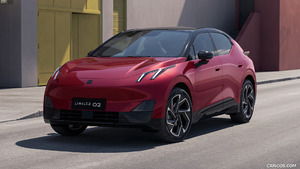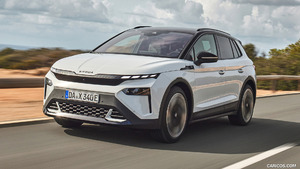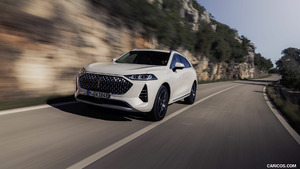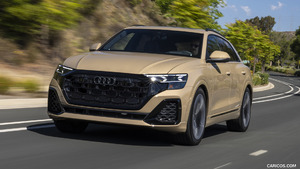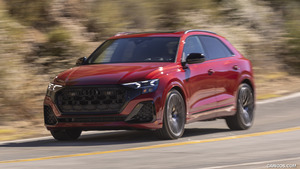2019 Mazda MX-5 30th Anniversary
It has been 30 years since the Mazda MX-5 made its debut at the Chicago Auto Show. Thanks to an avid group of fans based all over the world, it’s still with us, and as popular as ever. It hasn’t always been plain sailing, of course. Over three decades ago, our team members set out to create a car that anyone could enjoy in any scenario, which is easier said than done. Hard work and dedication beyond the call of duty led to the production of a small vehicle that reignited the passion the lightweight sportscar (LWS) had once enjoyed in a more carefree era. Our loyal customers then guided us through its evolution. Over 1,000,000 MX-5s have been made so far, proving the car’s appeal beyond any doubt. But we will not rest on our laurels. With the Jinba-ittai philosophy that gave birth to the original roadster firmly in mind, it’s our intention to keep refining the model, constantly raising the bar to provide a vehicle that delivers well above expectations – a car that makes everyone happy…
BEFORE DAWN
As a breed, the lightweight sportscar (LWS) had been around for decades, but Mazda gave it a new lease of life in the early 1980s. For the Japanese company, the definitive LWS had to have an open body with a tight cockpit space, perfect weight distribution, a double-wishbone suspension, and a certain Jinba-ittai element. This is the story, beginning with a chance comment from an American motoring writer to a man who would soon after become Mazda’s President, leading up to the birth of the MX-5 in 1989.
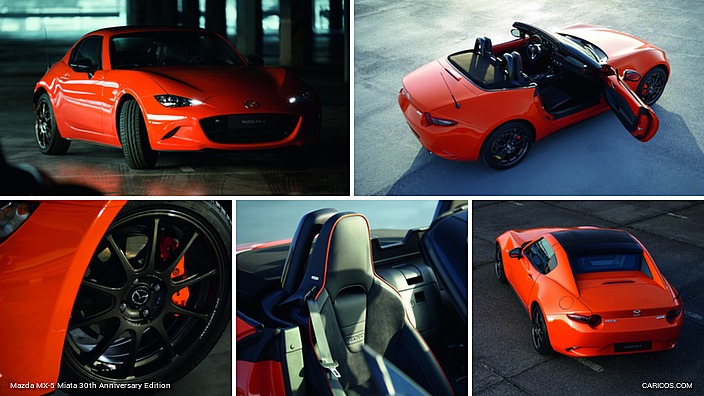 2019 Mazda MX-5 Miata 30th Anniversary Edition
2019 Mazda MX-5 Miata 30th Anniversary Edition
Prelude
In the late 1970s, Bob Hall embarked on a new career as a motor journalist, working for the American magazine, Motor Trend. As a teenager, he’d spent a lot of time in Japan, so had a good grasp of the Japanese language, enabling him to also act as the LA correspondent for Motor Fan, a Japanese car magazine. Hall had been surrounded by interesting automobiles all his life. His father was a ‘car guy’ of the highest order, running European machines from likes of MG, Triumph, Austin-Healey and Alfa Romeo – the purest forms of the light and simple open-top sports car. But the era Hall found himself in as a young writer was killing off vehicles like this, with emissions and safety concerns grabbing the headlines. Indeed, there was even talk of banning convertibles altogether.
The Japanese were quick to react to these changing times, fielding reliable and economical machines that the Americans welcomed with open arms. Hall witnessed the shift first-hand, and came to admire the way Mazda persisted with sporting models powered by the rotary engine. He couldn’t help but think how nice it would be to have a car that would blend Japanese technology and reliability with the fun experience that the British sportscars of yore provided.
Chalkboard Meeting
On 16 April 1979, Hall had the opportunity to visit the Mazda head office in Hiroshima. He was able to tell Kenichi Yamamoto (then head of R&D) about his dream automobile, sketching a drawing on a chalkboard and adding notes as he went along, explaining how easy it would be to create a convertible using components from the then-current Familia (also known as the 323 or GLC), which had a front-engine, rear-wheel drive (FR) layout.
Following the meeting, Hall had dinner with Yamamoto, but there was no mention of the LWS. He didn’t give up, though, and suggested Yamamoto should try a Triumph Spitfire one day. Eventually, the Japanese engineer drove it on the picturesque roads around Hakone. The rest, as they, is history…
Yamamoto’s Thoughts On Automobile Culture
Kenichi Yamamoto became Mazda’s President in the spring of 1984. In his 1985 New Year message to the workforce, he noted two key points. Firstly, that a car was more than just a tool, it was something that enriched the customer’s spirit. And secondly, a Mazda should always possess a functional beauty. This philosophy was passed down, and would shine through during the development of the new roadster. Indeed, the MX-5 could be classed as the perfect symbol of Yamamoto’s way of thinking.
Early Development: The OGG Project
The true birth of the MX-5 project came about via the so-called OGG program. Mazda’s main vehicles in Japan in the pre- Roadster days were the Familia (323), Capella (626), Luce (929), RX-7 and Bongo minivan. These were classed as ‘On- Line’ machines, but it was realized that additional models were needed to increase market share and penetrate other market areas.
Fresh, attractive products with a distinctive character were a must, naturally, and the OGG project would be used to channel new ideas through to a prototype stage. OGG stood for ‘Off- Line Go-Go’, with the off-line part signifying an experimental element, while the latter part expresses the Japanese number 55, as any projects raised in this new program had to have a minimum 55% chance of success as a production model to be progressed. It was a sensible way of allowing creativity whilst keeping things realistic.
Beginning in November 1983, a list was drawn up, highlighting the need for a small 660cc model, a utility van, and possibly a lightweight sportscar to slot in beneath the RX-7. The Carol kei-car was born as a result, along with the highly-successful Mazda MPV, and an open car that would take the world by storm – the MX-5.
The trend for sportscars at that time was excess – increases in power, increases in body size, and increases in price. There was still a requirement for smaller, lower priced machines, especially in places like California, but compact cars were rapidly moving toward FF layouts, making the production of traditional FR sportscars all the more difficult to justify. Small coupes from Japan were already starting to fill the gap, but Mazda would have its own concept for what the ideal LWS should be, thoughts being focused by an internal competition that would decide which route Mazda would take for its future two-seater sportscar – the choice coming down to closed FF and MR models, or an FR convertible.
Progress
The FF and MR coupes were tackled by Mazda’s Tokyo studio, while the FR convertible proposal was handled by the MANA (now known as MRA) team in the States. The full-scale models went through two rounds of judging in 1984 and, backed up by a video presentation focusing on the thoughts of Bob Hall, Tom Matano and Shigenori Fukuda (who was the boss of Mazda’s American planning and research arm at the time) and feedback from owners and enthusiasts at a clinic held in Pasadena, it was the MANA design that ultimately got the nod.
This original design had a much sharper profile than the production model, but the lines were already starting to show through, and the detachable hardtop added a practical note that appealed to those attending the presentation. Another plus point was the fact that by adopting an FR layout, Mazda wasn’t simply following the crowd – it was staying true to its philosophy of making unique products, and it would be a perfect stablemate for the rotary-engined RX-7.
Santa Barbara Adventure
With the convertible idea approved, the concept was set in stone, calling for a front-engined rear-wheel drive sportscar that was steeped in LWS tradition, whilst employing the very latest technology. But there was a problem. Mazda was so tied-up with other work, there simply wasn’t the staff available to move the open two-seater project forward. As a result, the company approached IAD (International Automotive Design – an engineering company based in England) to make a running prototype of the MANA proposal, with design and modelling staff from America on hand to supervise the styling, while IAD did the chassis work based around the first generation RX-7; motive power and the drivetrain came from a rear-wheel drive Familia (323).
The prototype, featuring red paintwork and a black soft-top, was finished in September 1985 and duly shipped to America. The MANA staff decided to test the vehicle in Santa Barbara, being careful not to reveal the car’s identity. The reaction was encouraging, with lots of questions and admiring looks during the day. It was a good omen, and a perfect foundation on which to create two more clay models that pointed the way towards the final design.
Mass-Production Development
With Kenichi Yamamoto declaring “this car has an aura of culture,” Toshihiko Hirai was appointed the Project Program Manager in February 1986, tasked with bridging the huge gap between ideas seen in a prototype and the harsh realities involved in making them ready for mass-production. Volunteering for the job, Hirai was the perfect man for this difficult undertaking, being a passionate engineer able to take things from the draughtsboard all the way through to a completed vehicle, and even having some sales experience in the late-1970s. His involvement was a giant step forward in making the MX-5 a reality.
With the factory still working flat-out on other projects, Hirai managed to put together a team of engineers, although some were forced to work outside their specialist field due to staff shortages. But with everyone pulling in the same direction, working via a shared philosophy, and gathered in the same area (a fifth floor office above the design center garage, later nicknamed the Riverside Hotel), progress was made, helped along by others joining the fray af ter their main work was finished, just to be part of this exciting project, meaning long hours for all involved.
There were no compromises. The Jinba-ittai philosophy developed by Hirai and his team called for a low overall weight with equal distribution over the front and rear axles, a low yaw moment of inertia, a low center of gravity, the engine placed as far back as possible, a PPF brace, a double-wishbone suspension, and an easy-to-use soft-top. These features would ultimately be carried through from one MX-5 generation to the next.
In the background, the styling team in Hiroshima built on the designs submitted by MANA in America, adding elements of traditional Japanese culture and beauty into the equation, taking the car ever closer to mass-production status.
A near-production prototype was sent to Los Angeles in the spring of 1987 to take part in a clinic to gauge reaction, and firm-up specifications and pricing. A total of 245 people attended, split into 30 groups, with the concept and design gaining high marks. US distributors also offered an encouraging voice, most requesting the vehicle be made available immediately. It was enough to silence the last remaining doubters in head office, and indeed, enabled the proposed production date to be pushed forward. To ensure this was possible, a ‘design freeze’ was declared in September 1987.
Launch Of A Legend
The world premiere of the MX-5 took place at the 1989 Chicago Auto Show. Five years had passed since the first seeds had been sown, with three of those years being massproduction development. The Mazda team had to overcome many hurdles during this time, but seeing the red, white and blue cars on display in Chicago made everything worthwhile. There was also a yellow Club Racer concept on the Mazda stand, but the extra effort was hardly necessary, for the press was ecstatic about the showroom model. There may have been a record chill outside the halls, but the arrival of the MX-5 guaranteed that the Mazda stand was busy every day. After the Chicago Show, there was a strong request from the Japanese media for a speedy domestic launch, and to make test cars available. Mazda Roadster fever was gripping sportscar fans, too. Pre-orders were taken from the end of July 1989 for the home market, and there were chaotic scenes at all 46 places where bookings could be made.
Message To Commemorate 30 Years Of The MX-5
Bob Hall, Ex-motoring journalist who suggested the lightweight sportscar project, and duly joined MANA (now MRA) in 1981 on the recommendation of Kenichi Yamamoto:
First and most importantly, it’s been a great honor to be involved in the LWS project. Some folks have called me the ‘Father of the MX-5’, but I cannot possibly take that much credit. I had an idea, but if it were not for the vision of Yamamoto-san and the faith he had in the concept, it would have remained an idea and little more. The only person who’s deserving of the ‘Father of the MX-5’ title is Kenichi Yamamoto. But the people who were – and continue to be – the most instrumental in the fact that the MX-5 has been through four generations, with more than a million sold worldwide, are the buyers who recognize that driving should be fun. To them – past, present and future – I wish to say a big thank you! They are fortunate to be able to experience this unique car.
Tom Matano, Car designer, who joined MRA in 1983 following Bob Hall’s recommendation. Responsible for the MX-5 concept:
Looking back, the idea was to create a car you could love – the kind of car you’d drive just for the sake of it. You’d use it to get to work, then take the long way home to enjoy the scenery and the light dancing off it, and give a glance over your shoulder after putting it in the garage at night. Of course, times change, and family commitments might mean the need for a bigger vehicle. But the shared memories will be strong, prompting a return to the model in later years, perhaps even restoring one. I couldn’t imagine what the MX-5 would be like in 30 years, but Mazda has stayed true to the concept of building a car you can love. I’m so happy to have been able to be involved with the LWS project from its earliest days…
FIRST GENERATION
The original MX-5 was inspired by the lightweight sports car (LWS) models that were incredibly fashionable in Europe and America in the post-war years through to the 1960s. Only a threat to outlaw open cars balked their popularity. However, this attractive concept would be revived using the very latest technology, adding modern reliability into the equation. It would be a new generation car for a new generation.
The Concept
Lightweight sportscars were primarily designed to be fun to drive, with their nimble handling and unbeatable feedback giving the driver a feeling of what Mazda calls Jinba-ittai – a term that roughly translates into a oneness between horse and rider. The majority of traditional LWS models employed a front engine, rear-wheel drive (FR) layout, and a two-seat convertible body. Mazda would take this package from a bygone age, adding elements that would allow the new car to hold its own heading into the 21st century. To achieve Jinba-ittai, a number of key targets were formulated:
- All components must gel in a way that provides the ultimate form of communication between the vehicle and its driver, whilst also allowing a sensation of unity with nature.
- The creation of a cockpit that appeals to the five senses, focusing the driver in order to extract the car’s maximum potential.
- Driver enjoyment must be put first, ahead of highperformance.
- The car must be endowed with quick and direct responses for perfect control.
In order to obtain the desired Jinba-ittai feeling, a fishbone chart was created as a checklist. The backbone was connected to six main headings – styling, handling, braking, driving enjoyment, tactile sensations, and sound – which in turn where connected to a series of pointers and specific components that helped please the senses within a given category. Constant reference to this now-legendary chart would ensure perfect harmony between the car and its driver.
However, this chart was not only there to help create an exciting sportscar, it would also ensure the owner would remain happy with it many years into his or her ownership. This noble goal was actually a stated theme during development, and needless to say, the Jinba-ittai concept has been carried over for each of the four generations of Mazda roadsters.
Packaging
In order to realize the targets set out during development, the Mazda MX-5 was remarkably compact. With a wheelbase of 2,265mm, it had an overall length of 3,970mm, a width of 1675mm, and a height of just 1,235mm. These dimensions ensured that a low body weight could be achieved, generally enhancing the car’s overall performance characteristics. It was in the packaging, though, where the concept was honed, with the final product displaying 50:50 weight distribution, a low yaw moment of inertia, and a low center of gravity – essential ingredients in sportscar design.
To improve weight distribution, the traditional FR layout was refined by moving the engine back over the front axle as far as possible, almost to the point of the car having a front midship configuration. Other heavy components, such as the fuel tank, were also moved within the wheelbase, all with the goal of balancing the vehicle’s weight equally over the front and rear axles and lowering the vehicle’s yaw moment of inertia in mind. Further thought can be seen in the aluminium bonnet (which reduced overall weight as well as lowering the center of gravity), and the lightweight battery being situated in the trunk to counter the engine’s bulk. At the same time, enough luggage space was provided for a short trip for two.
Other important factors in enhancing the ‘Jinba Ittai ’ experience included the adoption of a double-wishbone suspension on all four wheels, and a special item called the Power Plant Frame (or PPF). The PPF was an aluminium structure that braced the tail of the gearbox and the nose of the differential casing, vastly improving response to throttle action.
The trademark packaging seen in the original MX-5 is a ref lection of Mazda’s philosophy for all the roadsters that followed…
Exterior And Interior Design
Not surprisingly, the exterior styling philosophy first and foremost called for lines that would hold an exceptional level of appeal. This is easier said than done, but using continuous curves, the designers drew on the subtleties of Japanese beauty, using light and shadow to play on the panels and create movement in much the same way as a traditional Noh mask would when worn by an actor. These vibrant reflections – later coined ‘Echo and Sparkle’ – can still be seen in Mazda’s cars to this day, although Soul of Motion is the current term used at the company. The open car configuration led to a huge amount of research on windscreen angles, mirror shapes and sizes, and so on, in order to control buffeting in the cockpit. A signature feature of the first generation MX-5 was the pop-up headlights, which were a Mazda sportscar hallmark, while the rear lights were styled to give the roadster a distinctive identity at the other end. Initially, colours were restricted to Classic Red, Mariner Blue and Crystal White, with Japan adding a Silver Stone Metallic shade to the palette.
Japanese culture was called upon once more for the interior, with a traditional tearoom providing the inspiration; this translated into a tight space with simple, minimalistic furnishings, and a feeling of anticipation. In typical LWS fashion, a T-shaped dashboard was employed, complete with large diameter, easy-to-read gauges, while high-back seats were specified to hold the passengers firmly in place.
Chassis Development
The suspension was designed from a clean sheet of paper. As such, in a first for Mazda, a double-wishbone suspension was selected for both the front and rear, giving engineers and users alike a greater degree of freedom in setting the car up. It also had the advantage of keeping the tires in better contact with the road, giving consistent handling.
In line with Jinba-ittai goals, analysis and testing methods were changed in order to reduce mass to a minimum whilst retaining strength, and, as a result, Mazda was able to bring the weight of the double-wishbone suspension down to that of a comparable strut suspension. Costs were also kept in check by clever design work, such as common dies for suspension arms and crossmember components.
Steering was via a rack-and-pinion system, with the rack diameter increased to enhance direct feel through the wheel. A manual (non-assisted) and power-assisted steering set-up was offered, with the former giving a fast 3.3 turns lock-to-lock, while the power-assisted (PAS) option reduced this figure to just 2.8 turns lock-to-lock. Ventilated disc brakes were specified up front, with solid discs used for the rear. In a bid to reduce the yaw moment of inertia, Chassis Development callipers were placed on the trailing edge of the front discs and the leading edge of the rear ones.
The 185/60 R14 tires were mounted on 5.5J wheels, which were supplied as either plain steel rims or seven-spoke alloys (seven spokes were chosen for their dynamic looks, and to reduce weight compared to the traditional eight spokes). The tires were designed especially for the Mazda roadster, the tread pattern offering enjoyable handling, while a 10% weight saving was a useful bonus.
The Power Plant Frame (PPF)
Made from lightweight forged aluminium alloy, with strategically-placed cut-outs to retain strength but keep weight to a minimum, the Power Plant Frame was designed to deliver a more direct level of feel for the driver by reducing the timelag created via the movement of components in the driveline. With an FR layout, the nose of the differential casing constantly tips up or down a small amount in tune with acceleration and braking, but the PPF eliminates this movement, giving a noticeable improvement in throttle response and refinement. An additional benefit was the reduction in mounts and strengthening pieces required, meaning a further trimming of body weight.
The Powertrain
The powertrain was naturally developed to provide stimulating performance, but providing the owner with an at tractive engine bay was also part of the MX-5 concept.
The starting point was the transverse-mounted engine from the second generation FF 323/Familia, which was converted to sit in an inline position with rear-wheel drive. In its new guise, with a cast-iron block and a pentroof aluminium alloy head with a central plug and revised valvetrain mechanism, the 16v four-cylinder 1.6-liter DOHC unit was given the B6-ZE (RS) moniker.
The B6-ZE (RS) had a 78.0mm bore and an 83.6mm stroke to give a displacement of 1597cc. With a 9.4:1 compression ratio and an electronically controlled fuel-injection system, it developed 115ps at 6,500rpm, along with 135Nm of torque at 5,500rpm. In line with development goals, the unit’s redline was increased to 7,200rpm (as opposed to 7,000rpm for the 323/Familia engine) thanks to a fully-balanced crankshaft and lightweight con-rods, while response was dramatically improved throughout the rev-range.
An aluminium alloy oil sump and radiator were employed to save weight, along with a stainless steel ex haust manifold instead of a traditional cast-iron one. Mechanical noise was reduced to a minimum, but the exhaust sound was given special attention, emphasizing the car’s sporting nature.
The engine compartment’s appearance was enhanced through the use of a cast aluminium camshaft cover that accentuated the car’s high-performance twin-cam set-up. Other than the embossed lettering, it was deliberately left with a plain finish to give a pleasing look of functional beaut y. Doubtless, enthusiasts will have spent many happy hours polishing it over the years!
Regarding the close-ratio five-speed manual transmission, engineers concentrated on making the shift quality positive combined with a light action. This was achieved by employing short strokes for gear selection, a low inertia clutch disc, and large diameter synchronizing cones. At the time, the 45mm ‘flick of the wrist’ stroke was the shortest domestic massproduction manufacturing techniques would allow. For the ultimate in sports driving pleasure, the MX-5 was offered with a viscous limited-slip differential as an option.
A Combination Of Lightness & Rigidity
One of the major problems with an open body is retaining the shell’s rigidity, especially with cars that have been converted from coupes, unless one adds a lot of strengthening pieces, leading to additional weight. However, the steel monocoque body of the MX-5 was designed as a convertible from the very beginning of development, and with the help of the most upto-date computers available. As such, through careful design (the central tunnel and continuous lattice structure employed for the body were crucial elements in securing top class rigidity, as well as the A-posts and sills), it was exceptionally strong, but tipped the scales well within targets.
To improve handling, all overhanging parts were made as light as possible, with the bumper beams being an excellent example, made from resin using the latest blow molding techniques.
Regarding the soft-top, good use was made of the experience gained with the RX-7 Cabriolet and domestic market Familia Cabriolet, as well as valuable input from the respected English engineering consultants, the International Automotive Design company (IAD). The end result was a practical and well-trusted convertible top that was easy to operate, with a lightweight zip-in vinyl rear window offering greater ventilation options for the driver. For those who wanted the utmost comfort for winter weather, an attractive detachable hardtop made from sheet molding compound (SMC) was made available as an option. For North American market, driver’s side SRS airbag was a standard equipment for MX-5 and it was the first fitment for Mazda cars ever sold in the global market.
Production Changes To Match The Era
The MX-5 was forced to undergo a number of changes to meet regulations and so on, but with each upgrade, the original concept was kept without question. In 1990, a four-speed automatic transmission was offered as an option, and in the same year, the V Special grade with green paintwork and a tan leather interior was added to the line-up. 1992 saw BBS wheels and Bilstein dampers introduced for the S Special, while the following year brought with it airbags and side-impact bars for added safety, along with a 1.8-liter BP-ZE (RS) engine that delivered 130ps at 6,500rpm and 152Nm of torque at 5,000rpm. At the same time, the final-drive ratio was revised to 4.100 :1, rigidity increased, and the suspension improved, all without any loss of the Jinba-ittai feel that had made the car so popular. In 1995 a 1.6-litre engine with 90ps was introduced next to a 1.8-litre engine. While low-speed running quality was enhanced, the adoption of a new ECU and a lightweight flywheel helped top-end performance as well.
A Car Loved The World Over
The MX-5 was officially launched at the Chicago Auto Show of February 1989. It made a huge impact everywhere it was displayed, with the press and public alike.
A few months later, in July, reservations started being taken for the Eunos Roadster (the early cars were given the Eunos Roadster moniker in Japan, by the way, the Eunos element coming from the name of Mazda’s domestic sales channel that handled the two-seater and several other models at that time), with long queues forming by those eager to buy one.
The original MX-5 was listed between 1989 and 1997, with around 450,000 units sold, proving the adoration people attached to this small, fun-to-drive sportscar in all corners of the globe.
The first generation model, by putting the driver first, revived the LWS market and duly became the benchmark for other manufacturers. Since then, three more generations have followed, but, in each case, Mazda has never wavered from the goals set out for the original car. The desire to create the ultimate lightweight sportscar lives on…
Toshihiko Hirai, 1st Generation MX-5 Program Manager:
When I first became the original MX-5 program manager, the project had been rubber-stamped, but the budget was limited, as were the number of staff available. In addition, as a breed, the lightweight sportscar was becoming a real rarity, and I couldn’t help wondering if we could ever bring back the small conver tible under such conditions. But as a band of enthusiasts giving maximum effort, the car was ultimately realized, and then so well-received that it was allowed to evolve following the exact same concept we’d laid out all those years ago. Few would understand how difficult it is to create such a vehicle in the face of unfavorable regulations and circumstances, especially those confronting engineers today, but I hope Mazda can continue its noble pursuit of providing fun-to-drive cars far into the foreseeable future.
SECOND GENERATION
The original MX-5 garnered many fans from all over the world during its nine years of production. But things had moved on, both in terms of engineering and regulations, meaning it was time for Mazda to overhaul the roadster concept in order to keep it up-to-date and uphold the company’s policy of endowing its sportscars with the very latest technology available. In addition, customer interest had grown in areas like safety and comfort, leaving the creation of a brand new model as the only way forward. The new car was duly released in January 1998…
New Body, Same Soul
While there was little choice in adopting a new body for the second generation MX-5, Mazda’s engineers were determined to leave the roadster’s attractive Jinba-ittai spirit intact. Indeed, one of the key objectives was to build on the original concept in such a way as to make the new car appeal to an even wider audience. While the first generation model was undoubtedly a ‘Fun’ car, as was intended from the start, its replacement would be developed using the phrase ‘Lots of Fun’.
The Second Generation Car’s Concept
With the ‘Lots of Fun’ image established as a firm starting point, Mazda’s engineers broke down the concept into three main categories in order to create a set of goals that would guide the program team through the car’s development:
- The ‘Fun of Styling’ heading included a desire to produce a vehicle that was instantly recognizable as a Mazda roadster. It would be dynamic, yet possess a timeless simplicity that would allow it to age gracefully.
- The ‘Fun of Sports Driving’ dictated that the car’s controls and response would be like an extension of the driver’s mind and body.
- The ‘Fun of Open Air Motoring’ would aim to enhance the roadster’s sophistication in open mode to increase enjoyment in all four seasons.
Inherited Packaging
Development of the first generation MX-5 highlighted that packaging was the most important factor in establishing the feeling of Jinba-ittai. A compact body size combined with a comfortably tight interior space was a feature that was carried over, along with an FR layout, a double-wishbone suspension set-up on all four wheels, and, of course, a Power Plant Frame. The second generation car was almost the same size as the original. With a wheelbase of 2,265mm, it measured 3,975mm in length, 1,680mm in width, and had an overall height of 1,225mm. As before, weight distribution was a level 50:50 front to rear, with weight-saving measures such as fixed headlights helping to keep bulk in check.
The new car sported improved aerodynamics and cooling, and on the practical side, better visibility thanks to the highefficiency headlights and glass rear screen, plus a larger trunk area due to the battery and spare tire being moved to an under floor position. This not only increased the luggage capacity – upped from 135L (VDA) to 144L – but also lowered the car’s center of gravity at the same time.
Design Refinements
The stylists were given a difficult job of creating a balance – it was considered that the car should be an obvious evolution of the original, yet also look different enough to give the impression of a new model. The use of continuous curves was inherited from the first generation roadster, with a stronger line adopted for the top of the fenders and trailing edge of the boot lid to add a more dynamic character and express movement, even when the car was stationary. The frontal styling was dominated by the newly adopted fixed headlights and a reprofiled air intake – free of gimmicks, fresh, and somehow still familiar.
Regarding the interior, the basic T-shape dashboard and concept of the first generation model were carried over, but the stylist samplified the sporting image, adding more sophistication and function into the package, in keeping with the times. A new three-spoke steering wheel with a compact airbag was employed, designed in conjunction with Nardi, and the gauges were given fresh calibrations (six-speed manual models were given meters that had the zero on the speedometer and tachometer at the six o’clock position, for instance) and revised coloring to further strengthen the car’s sporting credentials. Practical advances included the adoption of cupholders, along with a larger glovebox and door pockets.
A Powertrain That Responds To The Driver’s Will
The second generation roadster was offered with two inline four-cylinder powerplants – the 1.8-liter engine, and the 1.6-liter unit. Both DOHC units featured improved breathing, giving higher power and torque out put, better response, and smoother running throughout the rev-range.
The 1.8- liter powerplant was given a variable intake control system, delivering greater efficiency by changing the intake port shape to best match engine speed, while a new 4-2-1 exhaust system was adopted, with the silencer size increased to improve gas flow and reduce back-pressure. With a bore and stroke of 83.0mm x 85.0mm, and a higher compression ratio (increased from 9.0:1 to 9.5:1), the unit produced 140ps at 7,000rpm, along with a maximum torque figure of 162Nm at 4,500rpm.
The 1.6- liter engine also gained the variable intake system (VICS) and 4-2-1 exhaust configuration, improving response and fuel efficiency, as well as top-end torque. In this latest guise, the unit gave 110ps at 6,500rpm and 134Nm of torque at 5,000rpm, delivering useable power throughout the revrange for added driver enjoyment.
The 1.8- liter engine was mated to a newly-developed sixspeed manual transmission (6MT), while the five-speed gearbox (5MT) used on the 1.6-liter model was given further refinements. With the short ‘flick-of-the-wrist ’ shift of the original MX-5 still very much in evidence, the new 6MT unit, with only the top gear overdriven, allowed the driver to enjoy the sportting nature of the engine to the full. A limited-slip differential came as standard on domestic 6MT and certain 5MT grades, and was available as either an option or part of a package for manual cars in most countries. At the same time, the four-speed automatic transmission (4AT) was enhanced with electronic control improving shift quality and giving faster response in the gear hold mode, making the automatic option a lot more sporting compared to earlier versions.
Chassis
The double-wishbone suspension that had become such an essential Jinba-ittai ingredient for the first generation model was carried over, albeit in a more matured form. For instance, the track width was wider at both ends, spring and damper units gained different mounts, the geometry was revised and optimized up front, and the suspension stroke increased at the rear. These changes enhanced the car’s high-speed stability, and helped generate more linear handling characteristics. At the same time, the steering mounting system was made stronger to further improve road feel and feedback, while the four-wheel disc braking system was much the same, with ABS available on certain grades.
To Feel The Breeze
The soft-top was refined via the adoption of a glass rear screen, giving better weatherproofing, a reduction in wind noise, and the benefit of a heated rear window – a useful addition for those using the car all year round. Other parts within the softtop assembly were revised in order to compensate for the extra weight of the glass window, to the point where the finished article was actually lighter than the original version! Another bonus was that it was no longer necessary to unzip the rear window before dropping the hood.
With experience gained from the RX-7 Cabriolet, a new ‘windblocker’ panel behind the seats made winter driving a lot more comfortable by reducing cockpit buffeting and cutting out drafts that tended to swirl around occupant’s legs with the car in motion.
A great deal of effort was made updating the audio components, with Mazda and BOSE working together to create a high-quality yet lightweight system that would perform perfectly even in a demanding open car environment .Ultimately, a compact 200W amplifier was linked to a pair of eight-inch woofers and another pair of smaller tweeters, with the head end incorporating a CD player and radio. This BOSE system was standard on some cars, optional on others.
A Body With Greater Rigidity And Safety
The rigidity of the body was increased in order to extract the maximum benefit from the suspension system and enhance ride comfort. This was achieved by careful computer analysis of the shell, revealing any potential weakness points, and allowing engineers to add strengthening pieces in strategic areas to cope with the performance of the latest powertrains. Equally, the computer programs helped pinpoint places where weight reduction was possible, either via thinner panels or the complete deletion of unnecessary parts.
Front and rear crumple zones were incorporated into the design, so that even the most stringent of regulations and crash tests could be passed with ease. Repair costs from lighter accidents were reduced thanks to easier bolt-on parts replacement, although the exotic aluminium bonnet was still considered a must for keeping weight down to a minimum.
Continuous Improvement
The second generation MX-5 was given a major facelift in the year 2000, with a new front bumper molding and fresh headlight design endowing the car with a sharper image that exuded quality. The 1.8-liter engine gained the S-VT variable valve timing system to deliver a higher power output and better response throughout the rev-range (146ps at 7,000rpm and 168Nm at 5,000rpm). At the same time, the body was strengthened to further increase rigidity, allowing improved handling and smoother progress. For those after the ultimate in road behavior, the RS and RS-II models came with 16-inch wheels, along with an uprated suspension and braking system.
Late 2001 saw the launch of the NR-A grade, which allowed enthusiasts to enjoy grassroots motorsports at reasonable cost. This 1.6-liter twin-cam model had an adjustable Bilstein suspension, stronger brakes and a larger capacity cooling system to make it ideal for casual track work at the weekends, but it was equally suited to regular road use as well.
The second generation MX-5’s ‘Lots of Fun’ development theme moved the convertible concept forward in many ways – enhanced power and handling, a body design full of character and superior packaging, and improved safety and comfort for the driver and passenger. The fun element was later boosted by the ability to custom-build a vehicle via the internet, and there was also a coupe version of the car made available to special order. In addition to numerous limited editions, a turbocharged model was also added to the line-up in due course, giving people an almost limitless number of ways in which to enjoy the MX-5 until the new third generation roadster was released in 2005. By the time the second generation run had come to an end, almost 290,000 had been sold, gaining a new set of fans to augment those already smitten by the MX-5 concept – a concept that had kept Mazda’s little sportscar firmly in the number one spot in the Guinness Book of Records as the world’s best-selling two-seater convertible. The second generation roadster would provide an excellent foundation on which to build, providing a clear direction for the next generation to follow…
Takao Kijima, 1st, 2nd & 3rd Generation MX-5 Program Manager:
I took over the role of MX-5 program manager following the retirement of Hirai-san. I’d seen first-hand how difficult it was to create such a lightweight machine from the very start of the roadster project, but the high wall facing us in following such a detailed concept theme to the letter only served to forge the car into something special.
When planning the second generation car, it was obvious that the original had managed to keep its charm intact, leading us to change only what was absolutely necessary. In the background, though, company policy back then stated that a new model had to be capable of sales amount ing to 70% of those pos ted by its predecessor in order to keep a line going. Seeing as the original MX-5 had sold so well, as you can imagine, we were under enormous pressure. I can remember with a great deal of pride the day when we cleared our sales target to make the next generation possible, with the car’s popularity in Europe helping to boost the figures.
We’d learned so much during the development of the second generation model that we were able to apply many new ideas to the third, whilst still maintaining the original concepts and distinctive MX-5 character.
THIRD GENERATION
The third generation model continued the traditions established with the earlier roadsters, but signalled a huge jump in the technology stakes, bringing about higher levels of performance and even greater unity between the car and its driver. Whilst keeping the Jinba-ittai concept firmly in mind, with engineers able to start from a clean sheet of paper, almost every part was renewed in order to capture the roadster’s charm but still take it forward into a new era. Going on sale in August 2005, in the following year, a power retractable hardtop model was added to the line-up, allowing the two-seater Mazda to appeal to a wider market and garner even more fans.
A Shared Concept
The second generation roadster was based on the platform of the original MX-5, but for this new incarnation of Mazda’s iconic sportscar, almost every component was redesigned in a bid to concentrate the Jinba-ittai spirit, ultimately combining to make a car that was yet more focused on driver enjoyment.
Development of the third generation roadster started in March 2002, but with a team of almost 100 people that was largely new and young. This meant a crash course to share the concept and deep meaning of Jinba-ittai – a philosophy that needed to be fully understood before work could commence. Once the educational period was over, each member made a declaration on how they could enhance Jinba-ittai in their specialist field, with the words put together and made into a book, which was then copied and distributed throughout the team as a form of constant reference.
Many test sessions were conducted with older Mazda roadsters and competing machines from rival companies, helping members of the team to gain a clear vision of the development theme and duly refine the fishbone chart that was made famous during the genesis of the first generation car. The three basic elements were driving, cornering and braking, with styling, sound and touch added to please all the senses. In reality, the general look of the chart was not all that different to the original, although the details contained within each element were duly updated.
Ultimately, fun was the very essence of the concept. Unity between the car and its driver was of paramount importance, but equal effort was put into making the vehicle attractive to look at, as well as easy to convert into an open car. Not surprisingly, the ‘Lots of Fun’ theme was carried over from the previous model.
Design Image
The starting point for designers was to analyse what had made the first two generations so popular. The concensus was the low body height, the flowing shoulder line and the car’s excellent proportions. These fundamental elements would be taken and allowed to evolve in a thoroughly modern fashion under four headings: Simple, contemporary, fun, and friendly. As with its predecessors, bold character lines were pushed aside, with surface reflections used to give the roadster a subtly different image when viewed from different angles, as well as accentuate the vehicle’s athletic volume and a latent sporting prowess to give a dynamic form.
For the interior, the concept was to create a perfect balance between the sense of comfortable tightness and airiness within the cockpit. The basic themes found in the earlier cars were carried over, but modernized in a bid to add more emotion and sporting content into the equation. Sharper lines were used to highlight the T-shaped dashboard and center console, enhancing the feeling of strength and quality.
A Change In Body Size
The specification called for a reduction in the yaw moment of inertia, an even lower center of gravity, and the engine and fuel tank as close to being within the wheelbase as possible. At the same time, cockpit space had to be increased for taller drivers, so the wheelbase was extended by 65mm to 2,330mm. Careful design resulted in an increase of just 20mm in overall length, taking the total to 3,995mm, while the width increased by a similar amount. This was the absolute minimum engineers could allow due to the addition of side airbags.
Naturally, compact dimensions were a must for the MX-5, but so was low weight. The latest CAE technology was employed to keep the third generation body as light as possible, with the choice of metals (such as the use of super-high tensile steel) crucial in retaining the shell’s rigidity for the minimum weight penalty. Compared to the second generation body, bending rigidity was improved by 22%, and torsional rigidity by a massive 47%; at the same time, the body-in-white was 1.6kg lighter.
Like the earlier cars, the new MX-5 used an aluminum bonnet (or hood) and an alloy PPF brace, but further weight reductions were gained through an aluminum bootlid outer panel that used groundbreaking friction welding technology to secure the sheet metal to its steel reinforcement, alloy front suspension control arms and rear hub supports, alloy brake callipers, and the adoption of alloys for numerous other smaller parts. Plastics were employed for items like the engine head cover and intake manifold, while high-tensile steel was used for the seat frames, and the front stabilizer bar was made from hollow tubing to save a few more grams.
On the subject of grams, a ‘Gram Strategy’ team was given the job of eliminating bulk wherever possible, even if the resulting loss was as low as a single gram. This was done through 3D modelling and extensive testing, ultimately leading to things like flanges being shaved and fasteners shor tened to keep weight under control. As a result of these efforts, despite a greater level of safety and creature comforts compared to the second generation car, overall weight increased by just 10kg.
Achieving Perfect Balance
In order to obtain the ultimate handling control, a 50:50 frontto- rear weight distribution ratio is highly desirable, as is a low center of gravity and a low yaw moment of inertia. As established with the first and second generation cars, this can be achieved through the careful packaging of components. The engine was moved 135mm rearwards thanks to the air conditioning control unit being made smaller, and the battery was moved from the trunk to a new position ahead of the engine, allowing it to sit 265mm closer to the vehicle’s center of gravity. At the same time, the under f loor fuel tank was moved further forward and lower than before. Compared to the second generation roadster, the third generation car sported a center of gravity that was 18mm lower, and a 2% reduction in the yaw moment of inertia.
A Fresh Powertrain
The powertrain was revised in order to give even faster and more linear response, to further enhance driver enjoyment. The 2.0-liter inline four-cylinder LF-V E engine was chosen for the job as the main unit, converted from the FF-configuration MZR unit to match the open car’s front midship rear-wheel drive layout. Adopting sequential valve timing (S-VT) on the intake side, a variable induction system (VIS) and a high compression ratio, it developed 118kW (160ps) at 6,700rpm, and 188Nm of torque. Moreover, applying the latest technology allowed around 90% of peak torque to become available from just 2,500rpm, with the torque remaining relatively flat thereafter.
The European market was supplied with a 1.8-liter version of the all-alloy unit giving 93kW (126ps) at 6,500rpm, along with 167Nm of torque at 4,500rpm. Generally speaking, this was an optional 1,798cc engine for EU countries, available alongside the 1,999cc one.
The car was available with a newly-developed six-speed manual transmission (6MT), combining carefully chosen close ratios and short shift strokes to provide a sporting feel. A triple-cone synchromesh was provided on the lower four speeds to make changes even swifter and easier, while the shift linkage used low-friction bushes and a new guide plate to give a smooth and direct action. The 5MT gearbox was also improved.
The automatic transmission was completely revised, becoming a 6AT unit that allowed stronger acceleration, whilst at the same time improving fuel consumption and refinement at higher cruising speeds. In addition, shifts could be executed via the traditional-style gear selector on the transmission tunnel, or by paddles mounted on the steering wheel.
In keeping with the Jinba- ittai concept, the engine and transmission combined to give the ultimate in driver involvement and lively performance, the strong acceleration feel being backed up by comfortable sporting sounds from the engine intake and exhaust systems.
The Suspension System
The suspension was designed to achieve the functions one expects from a LWS model, such as nimble and linear handling, allied to superior stability.
The front suspension consisted of a double-wishbone set-up carried over from the earlier roadster generations, but further refi ned to give sharper responses to driver input. Alloy control arms were used to reduce unsprung weight, while their length was calculated to keep the tires in maximum contact with the road, with linear control in toe, camber and caster angles according to tire stroke to enhance handling stability.
At the rear, a brand new multi-link suspension system was adopted, with five long links to give vastly improved stability. The rear suspension featured anti-lift and anti-dive geometry for smoother progress under acceleration and braking, while the braking system itself was upgraded via larger rotors, a bigger servo and a revised pedal stroke to give enhanced driver feedback.
Polishing The Gem
An expert team was put together to perfect the Jinba-ittai character of the car called a ‘Unity Feel Taskforce’. These engineers were encouraged to provide visceral information on driving dynamics in addition to traditional technical data in order to achieve predetermined goals in each area of development, such as performance feel, creating balanced handling, fine-tuning the vehicle body’s response to driver input, response and feedback from controls (such as the steering, and accelerator, clutch and brake pedals), and the comfort and support provided by the seats.
Soft-Top Refinements
The soft-top was modified in order to bring the joy of driving convertibles to a wider audience. With a single central release handle, the top folded into a Z shape before dropping into its compartment behind the seats. At the same time, assistance springs helped reduce driver effort when closing the top, allowing them to remain comfortably seated whilst carrying out this operation.
To enhance comfort with the top down, the front quarter windows were made smaller, and the windblocker became a mesh version. Combined, these allowed a controlled breeze into the cockpit compared to the older set-up with the board erect.
In addition, improvements to the air conditioning vent layout gave greater warmth around the waist area, duly lengthening the open car season, and a special BOSE sound system reacted to noise interference to maintain sound quality.
Power Retractable Hardtop
August 2006 witnessed the debut of the innovative Power Retractable Hardtop (RHT) model. The electrically-controlled roof came in three sections – a front piece, a central part surrounding the back window, and the window glass itself – folding to sit below a tonneau panel at the back of the seats.
The deck panel covering the space occupied by the roof operated in tandem with the RHT, opening to accept the metal roof sections, and then closing again once they were stowed underneath.
The RHT was designed in such a way that it was stored completely within the cabin area, so as not to encroach on luggage space, whilst also retaining excellent weight distribution. All components were given the usual ‘Gram Strategy’ treatment, allowing a weight penalty of just 37kg and an additional 10mm in overall height The styling retained the attractive lines of the soft-top model, with the roof opening and closing in 12 seconds (what was then the world’s fastest time for such a mechanism) at the touch of a switch. Practicality and a minimal weight gain combined to ensure the driver’s enjoyment was untainted.
The Concept Matures
The first facelift came in 2008, with the car sporting a new front bumper section with a pentagon grille shape that was becoming a Mazda signature, along with a sharper headlight, indicator and foglight housing design. Heavier sill sections (or rocker panels) graced the sides, while new rear light units were adopted at the rear. These changes gave the car a stronger image, with the chrome grille surround on certain grades adding an extra touch of class into the equation.
In addition, engine tuning led to a wider spread of power on manual cars, with the red-line moving further up the rev-range, and the roll center height was lowered at the front of the car, giving the steering a more natural feel on initial turn-in.
A second facelift was executed in 2012, with chin spoilers added to each side of an enlarged front grille opening, and a revised foglight design. Throttle response was further improved through tuning of the engine’s ECU, the servo was modified for enhanced braking modulation, and a pedestrian-friendly Active Bonnet was added to the specification sheet, popping up in the event of an impact.
Foundations For The Future
The need for a new platform was forced upon Mazda due to a shift in safety and environmental regulations. Modern design methods allowed the sharing of common architecture with the rotary-engined RX-8, which also had an FR layout. One of the key elements in Mazda’s sportscars was the front midship mounting of the power-unit, making it possible to achieve 50:50 weight distribution and for the MX-5 and RX-8 to use the same production facilities. However, the items that gave the roadster its dynamic character – the body, chassis, powertrain and electrical equipment – were all unique to the two-seater. The same was true for the RX-8, ensuring all development goals were met.
Later generations of Mazda cars would employ the same development theme, with the exquisite unity of performance feel and dynamic efficiency found in the roadster becoming the foundation for all future model development. More than 230,000 units of third generation MX-5s were produced between 2005 and 2015, raising the bar in the technology stakes, and deepening Mazda’s already-strong relationship with its customers. The 25th anniversary edition unveiled at the 2014 New York Auto Show was a fitting finale for the third generation roadster, displayed alongside the chassis of the model that would replace it.
Nobuhiro Yamamoto, 3rd & 4th Generation MX-5 Program Manager:
I have been involved with MX-5 development for 22 years, eight of which were as program manager of the third and fourth generation models. As such, I’d seen how difficult it was to meet crash regulations with the third generation MX-5, and a slight increase in body size was simply unavoidable at the time, so to offset this, a lot of effort was put into weight reduction and polishing the car’s handling in order to retain that Jinba-ittai feeling. After I took over from Kijima-san, we were able to introduce a number of updates and variations that allowed the basic model to continue for a total of ten years.
Advances in technology within the company, some of it realized through the MX-5 project, brought about new architecture that we were able to employ for the fourth generation – moving forward whilst keeping long-established development policies associated with the roadster alive.
Today, as we celebrate 30 years of the MX-5, the car reminds me of Polaris – a star that never changes and always shines brightly…
FOURTH GENERATION
The fourth generation MX-5 followed the long-established concepts of Jinba-ittai and ‘Lots of Fun’ – keynotes that had ran consistently through the development earlier generations of Mazda’s iconic roadster. Moreover, being able to start with a clean sheet of paper, engineers and designers were in a position to recapture the very essence of the original model, and even build on it through the use of the latest Skyactiv technology.
Announced in 2015, this latest incarnation of the MX-5 was joined in the following year by a new RF model featuring a retractable hardtop, melding practicality with distinctive styling, and giving enthusiasts the option of a totally different kind of open-air motoring. Like the soft-top version, this fastback model exuded Mazda’s all-encompassing Soul of Motion (or Kodo) design language.
Appealing to the senses and sensations
The significance given to maximizing the Jinba-ittai and “Lots of Fun” experiences means that Mazda did much more than simply develop a compact sports car. Rather, the MX-5 was made to be looked at, to perform and respond faithfully to the driver’s will, to deliver a pleasing experience and to emphasize the owner’s character. Just having an MX-5 makes life more pleasant and more colorful. The product concept, “Joy of the moment, joy of life,” reflects Mazda’s hopes that the all-new MX-5 will become a presence in the lives of customers that continues to transcend its existence as a mere car. To convey that desire more purely, the development team devoted themselves to adopting Skyactiv technology and Kodo design to evolve the MX-5, while at the same time working to evolve the essence of what appeals to the senses and sensations through which people enjoy cars.
Design
Designers wanted the new MX-5 to have a low profile, with lean looks and short overhangs, helping to accentuate the car’s nimble character. The LED headlights, some of the smallest and lightest in the world, were a big factor in allowing the front-end to be as low and taut as it is, aided by the engine sitting lower and further back than before.
While rich Kodo-inspired styling was a must, the designers took an interesting stance in styling the new body, aiming to make the driver stand out with the top down in the hope of conveying the joy of driving to onlookers. For Mazda, a car has always been much more than just a tool. It is a life partner – an expression of the owner’s character, and something to interact with, both on a personal level and amongst friends.
Extending this philosophy, the designers decided to better integrate the interior and exterior. These two styling aspects were successfully bridged through the use of door cappings painted in body color. Giving the image of a continuous line down to the top of the front fender (raised to allow accurate positioning during cornering), they reflected the moving light and made the driver feel part of the machine – a feeling further enhanced by the purposeful cockpit, featuring a small steering wheel, a clear set of gauges, and minor controls that expressed simplicity and symmetry.
Weight Reduction
The image of Jinba-ittai calls for nimble and lively handling, with the driver feeling in full control. As had been established in previous generations of the roadster, one of the key factors in achieving this is by employing compact body dimensions with weight being reduced to an absolute minimum.
Thankfully, engineers were allowed to apply the latest Skyactiv technology on a brand new body structure, fusing it with know-how accumulated over decades of open car design. Whilst being an evolution of the third generation model in terms of basic layout (albeit with a larger crosssection in the backbone and the creation of more truss shapes for added rigidity), careful construction and the extensive use of lightweight materials, such as high-tensile steels and aluminium, meant that the body-in-white was ultimately around 20kg lighter than its predecessor. With all exterior panels except the doors and window frame being shaped from aluminum, this was the lightest MX-5 shell produced to date, yet also the stiffest and safest.
A new smaller and lighter six-speed manual transmission was adopted to save weight, as was a new differential with the same benefits in mind. Suspension revisions and lighter brake rotors saved 18kg, while the seats were completely redesigned, saving a massive 15kg for the pair. The new design also allowed them to sit lower in the vehicle to improve the position of the car’s center of gravity.
Additional weight savings were gained via the ‘Gram Strategy’ program, with material choice being the first option en route to cutting unwanted bulk, and fine-tuning in other areas (such as drilling holes in components wherever possible to reduce weight without any loss in strength, and trimming any excess on glass, fasteners and welds).
Powertrain
Domestic models were powered by the all-new 1,496cc Skyactiv-G fuel-injected engine, developing 96kW (131ps) at 7,000rpm, with tuning that gave lively and accurate response and a smooth flow of torque from lower revs all the way through to its 150Nm peak at 4,800rpm and beyond.
A great deal of work was carried out to reduce the weight of components, such as the intake system and the 4-2-1 exhaust manifold, and there was a huge improvement in fuel efficiency, resulting in a welcome reduction in exhaust emissions.
This naturally-aspirated 1.5-liter unit, was also available in Europe and other export markets as a base engine, lining up alongside a 1,998cc version, which gave 118kW (160ps) at 6,000rpm, along with 200Nm of torque at 4,600rpm; both sported a very high 13.0:1 compression ratio. As with earlier generations, the exhaust sound was tuned to be sporting without being harsh, while an induction sound enhancer (ISE) delivered a pleasing note ahead of the cockpit.
Both four-cylinder engines were linked to a new six-speed manual transmission (6MT), with a six-speed automatic gearbox (6AT) as an option. The 6MT unit, with a direct 1.000:1 top gear ratio, was more compact than the one found in the third generation MX-5, with a shift connection that gave light but direct responses, along with the pleasing notchiness found in earlier MX-5s. Combined with a clutch designed to enhance pedal feedback and a revised version of the PPF brace, the driver could feel in complete control of the vehicle.
The Laws Of Packaging
Every roadster generation has seen new technology adopted, but the rules of packaging in order to create superior sportscar balance and handling have never changed.
At the front, the new MX-5 adopted a now-traditional double-wishbone suspension, matched with a light and rigid multi-link set-up at the rear. With the help of computer analysis, the suspension was developed to provide a natural feel under braking, controlling the car’s shift in weight, and was optimized to provide a crisp turn-in and linear handling characteristics. The fourth generation was the first MX-5 to adopt electrical power-assisted steering, with the double-pinion rack (DPEPAS) chosen delivering accurate and linear feedback through the steering, adding to the driver’s confidence in the machine’s reactions.
At 3,915mm, the overall length of the body is the shortest of all the MX-5s, while the engine sits 13mm lower and 15mm further back than it did in the previous models. The driver also sits 20mm lower and closer to the car’s center, helping to reduce the vehicle’s yaw moment of inertia and center of gravity, while the ergonomics were refined, improving visibility, making vehicle controls and switches easier to operate, and the pedals feel like a natural extension of the driver’s body.
Appealing To The Senses
The car was designed to appeal to all five senses. The soft-top mechanism was revised to make it even easier to operate from a sitting position, having a light and smooth action, and once down, the windscreen frame, quarter windows and seals were positioned and shaped in such a way as to stop drafts whilst allowing a gentle breeze into the cockpit.
Despite the need to shed as much weight as possible, resulting a car that was around 100kg lighter than its predecessor in certain model grades, the new MX-5 was full of convenience features. To give clear music with the top down, headrest speakers – an idea first seen on the first generation roadster – were put back on the spec sheet, at least as an option, coming as part of the dedicated BOSE sound system. The Mazda Connect * (or MZD Connect) system was also available, offering hands-free infotainment.
A New Variant – The RF
The RF model offered an attractive fastback coupe silhouette in closed form, but at the touch of a single button, about 13 seconds later, it could be converted into something quite different. Making its debut in 2016, the RF model (with RF standing for Retractable Fastback) featured a new type of power retractable hardtop, but with the rear section containing the back window moving upwards to allow the center panels to be stowed away behind the seats. The rear section then dropped back into place, offering those in the car an open-top experience within a quieter and calmer environment. Like the RHT version of the third generation model, there was no discernable increase in body dimensions, and no loss of luggage space. The RF was only available with the 2.0-liter engine, confirming its position as a flagship model.
Evolution Of The Fourth Generation
After numerous awards from all over the world and passing the landmark of one-million MX-5s being built, the 2017 facelift made in time for the 2018 season witnessed the introduction of enhanced safety features, led by the i-Activsense package with adaptive LED headlights (ALH), several measures to further improve overall quality, and the availability of three new body colors, including the signature Soul Red Crystal Metallic.
In the following year, the RF’s 2.0-liter engine was heavily modified, gaining a fresh fuel-injection system, lightweight pistons and connecting rods, and revised ports and valves to give an improved spread of torque and better top-end performance. The red-line was pushed up to 7,500rpm, with maximum power now standing at 135kW (184ps) at 7,000rpm and 205Nm of torque, lowered at 4,000rpm. At the same time, a telescopic steering column was added to the specification sheet – a first for the MX-5 – along with a number of driver safety aids.
Driving To The Future
The fourth generation car has been exceptionally wellreceived, following in the previous model’s footsteps by winning the 2015-2016 Japan Car of the Year title, along with the 2016 World Car of the Year and World Car Design of the Year double, and numerous other awards worldwide. Not long after, in April 2016, we were able to celebrate the one millionth MX-5 being built with fans from all over the world. The evolution of Mazda’s roadster continues today, and will continue into the future…
Masashi Nakayama, Chief Designer since 2011, and now MX-5 Program Manager:
As you can imagine, it was a big responsibility filling Nobuhiro Yamamoto’s shoes for the LWS project, especially as my first job in the position of Chief Engineer. My initiation began with the production of a video presentation for the management in order to secure the future of the model against the backdrop of an increasingly difficult market for sport scars. It conveyed the spirit of the car, and the strong will of those behind its development through the decades – a passion that has enabled the MX-5 to remain loved by so many 30 years after its birth. The meeting concluded that it was our mission to keep such a car alive. It was a day I shall never forget.
PRODUCTION LINE
Every generation of MX-5, from the first to the fourth, has been produced at the Ujina factory (known internally as U1) in the Ujina area of Hiroshima. This plant opened as Mazda’s main car factory in 1966, when Japanese motorization was at its zenith, and high demand combined with strong competition meant that greater manufacturing efficiency was a must. All processes – from pressings to painting and final assembly – could be accomplished as a streamlined operation, much of it controlled by computers, allowing a model mix on the line, which was unusual all those years ago.
In the past, the MX-5 has shared the line with cars like the Mazda2 (Demio), the 323 range (Familia), and the rotary engined RX-7 and RX-8. Today, it can be seen in amongst the CX-3 and other models, adding interest for the many groups visiting the Mazda Museum, which includes a short tour of the U1 production line, linking our long history with the present. They can also see history in the making, as the Guinness Record for the world’s highest production of a ‘best-selling convertible two-seater sports car’ – first awarded in May 2000 – continues to rise with every day that an MX-5 rolls down the line.
- During production, the car is followed by an automatic parts carrier that runs a long side it. All of the components necessary to build the vehicle to a unique specification are contained within it.
- The domestic Skyactiv-G 1.5-liter engine being built. The engine is produced in a separate factory at the same time as the body, with the pair later mated on the line.
- The building station for the PPF, a key feature of the MX-5. A special machine tightens the front and rear bolt sets at the same time to a preset torque value.
- Computer s automatically compensate for the variations in wheelbase measurements at turning points in the line, delivering the correct cage to suit the vehicle. This system allows different cars to share the same production line.
- Putting the dashboard in place. Two skilled workers build up the dashboard to the required specification, adding meters and displays, and then mount it in the vehicle as a complete unit.
- Naturally, the MX-5 RF shares the same line as the open model. Each car is built with the utmost care and attention to detail, from the very earliest stages of production all the way through to line-off.

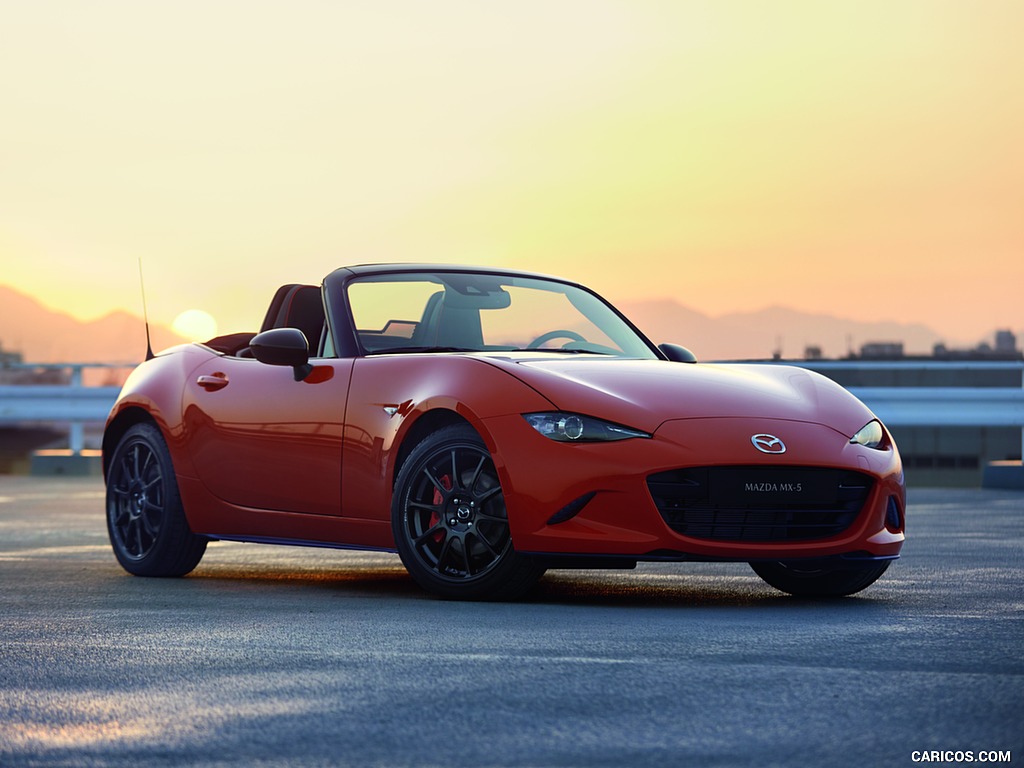 \n
\n
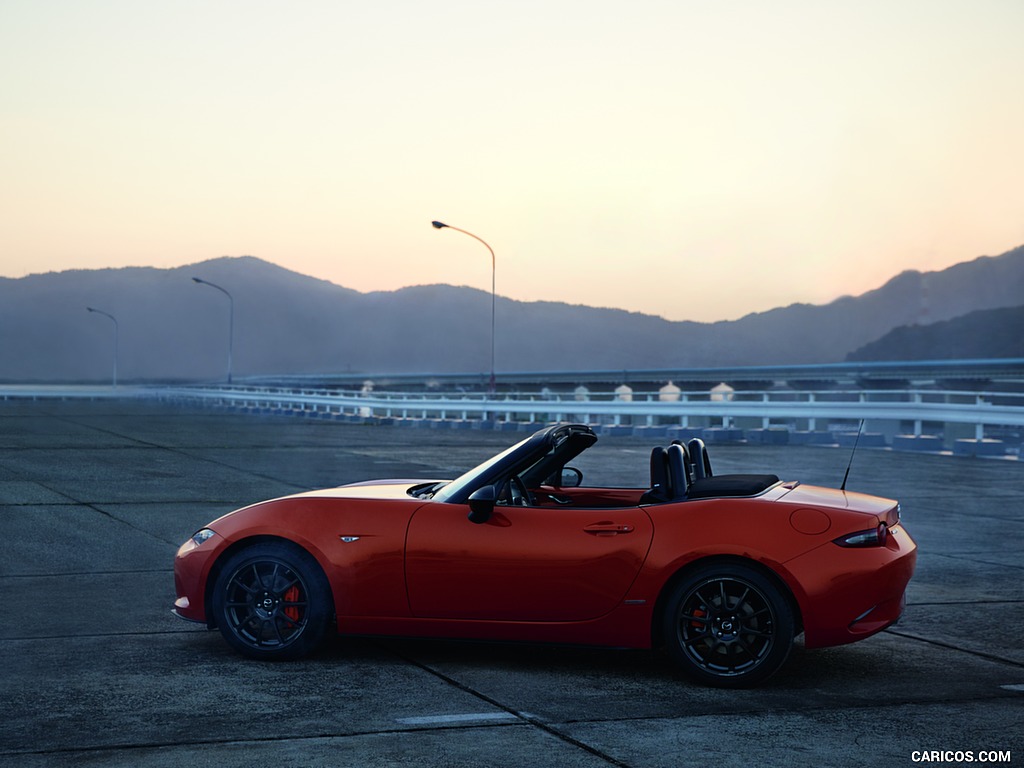 \n
\n
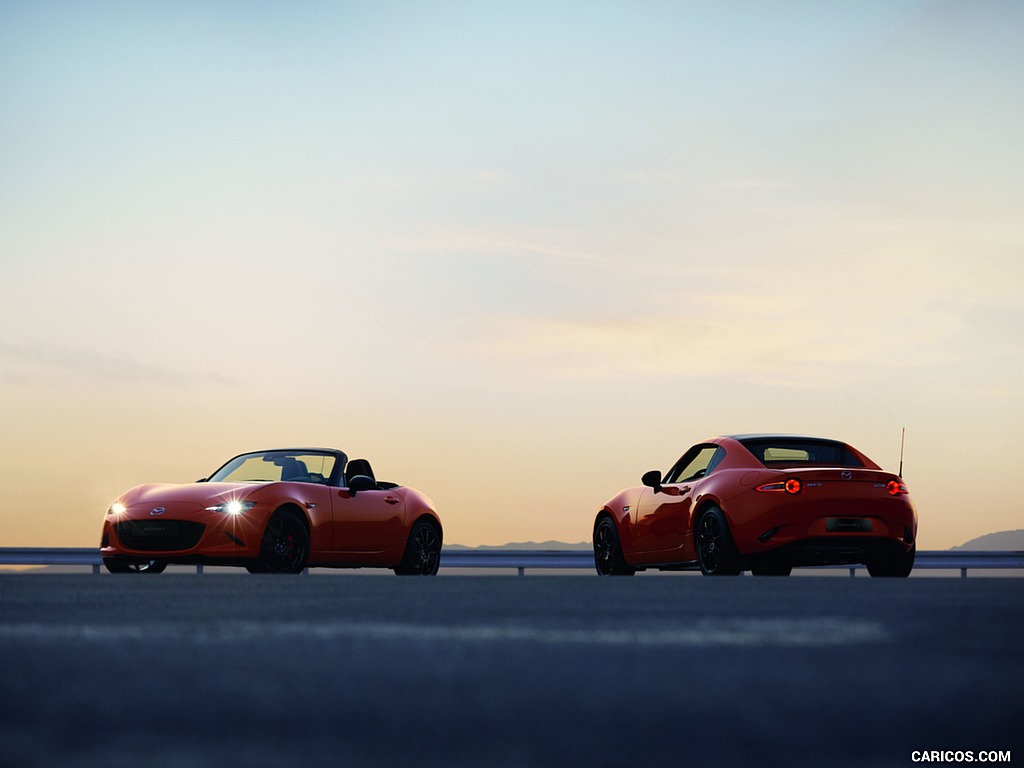 \n
\n
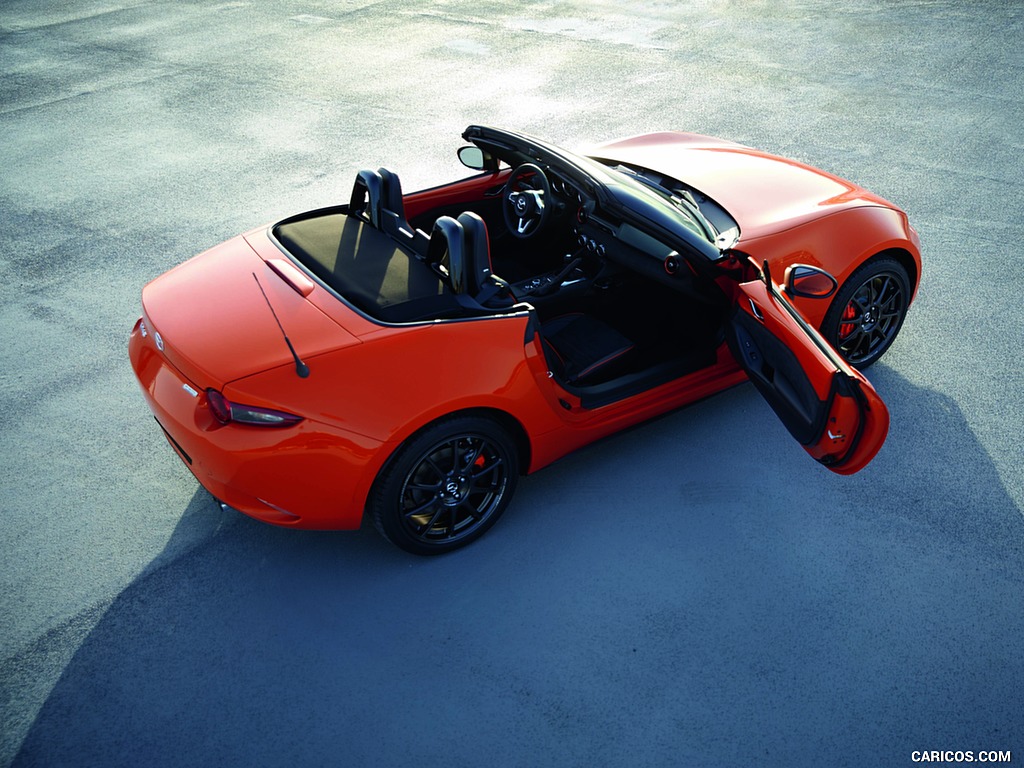 \n
\n
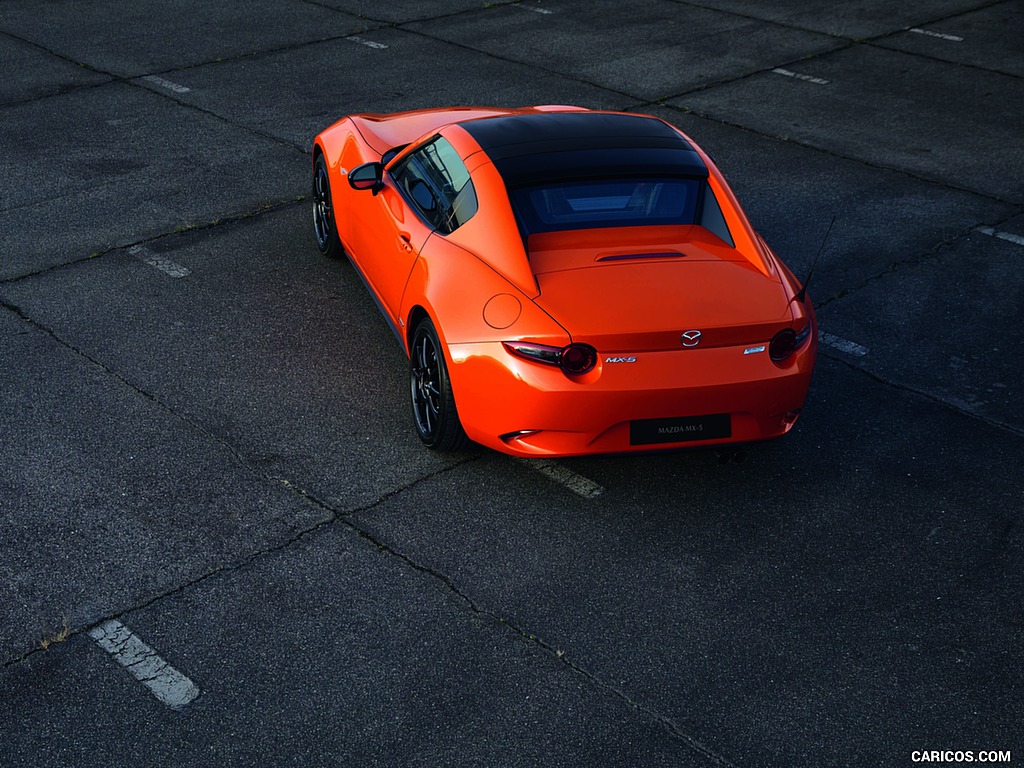 \n
\n
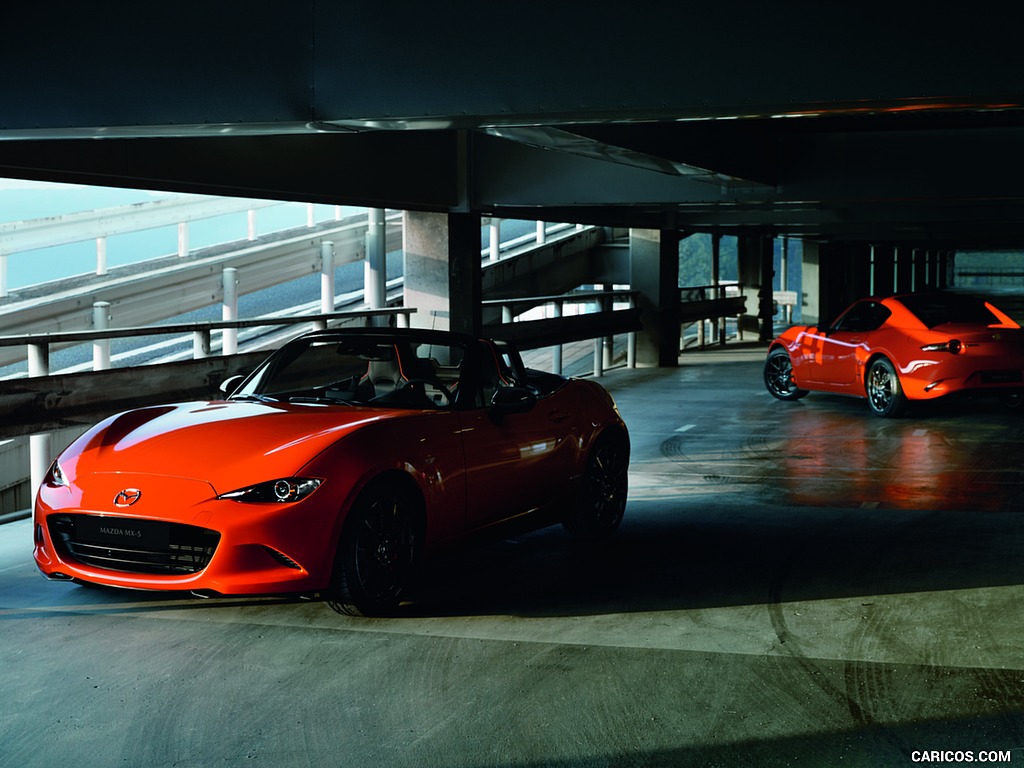 \n
\n
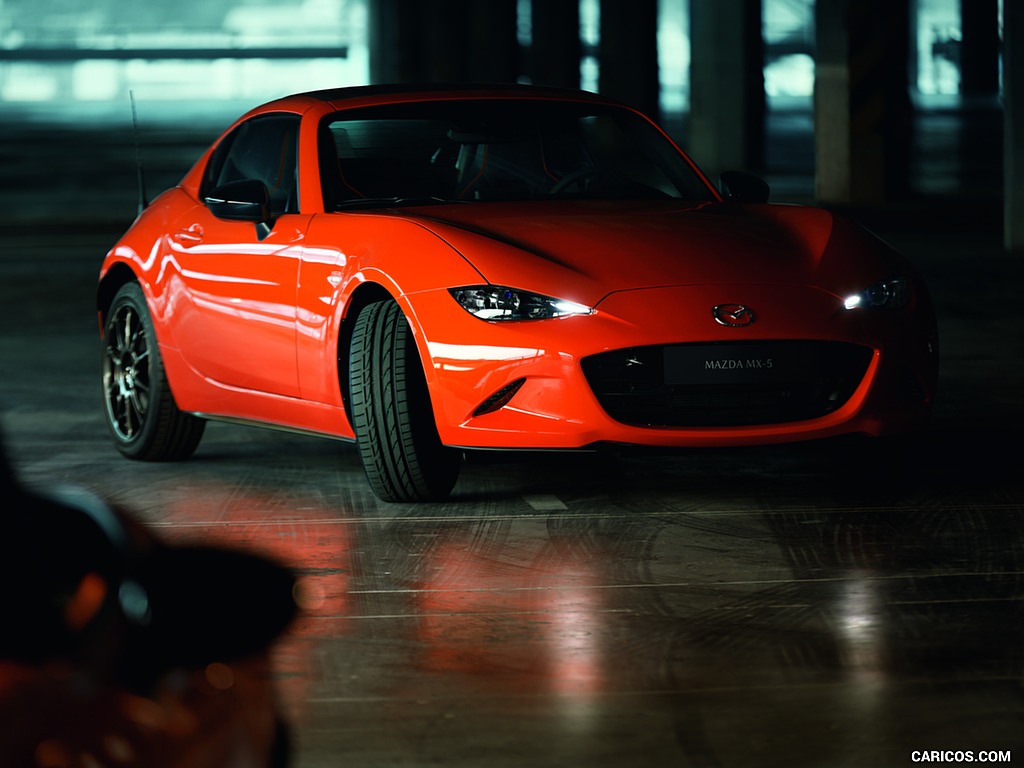 \n
\n
 \n
\n
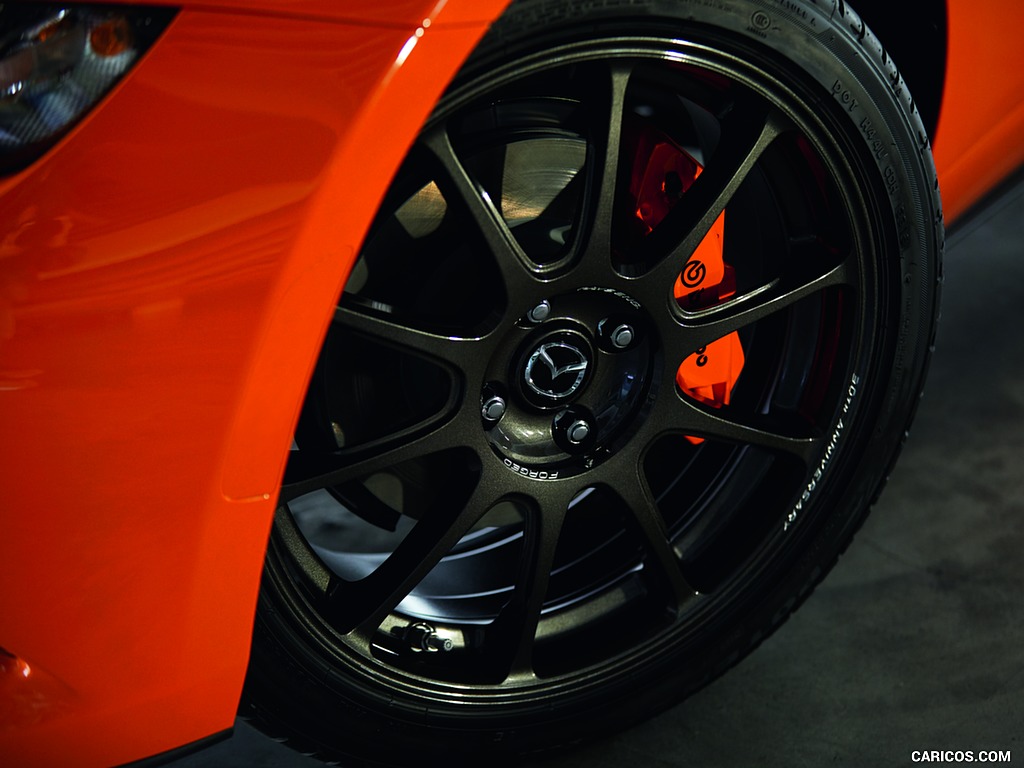 \n
\n
 \n
\n
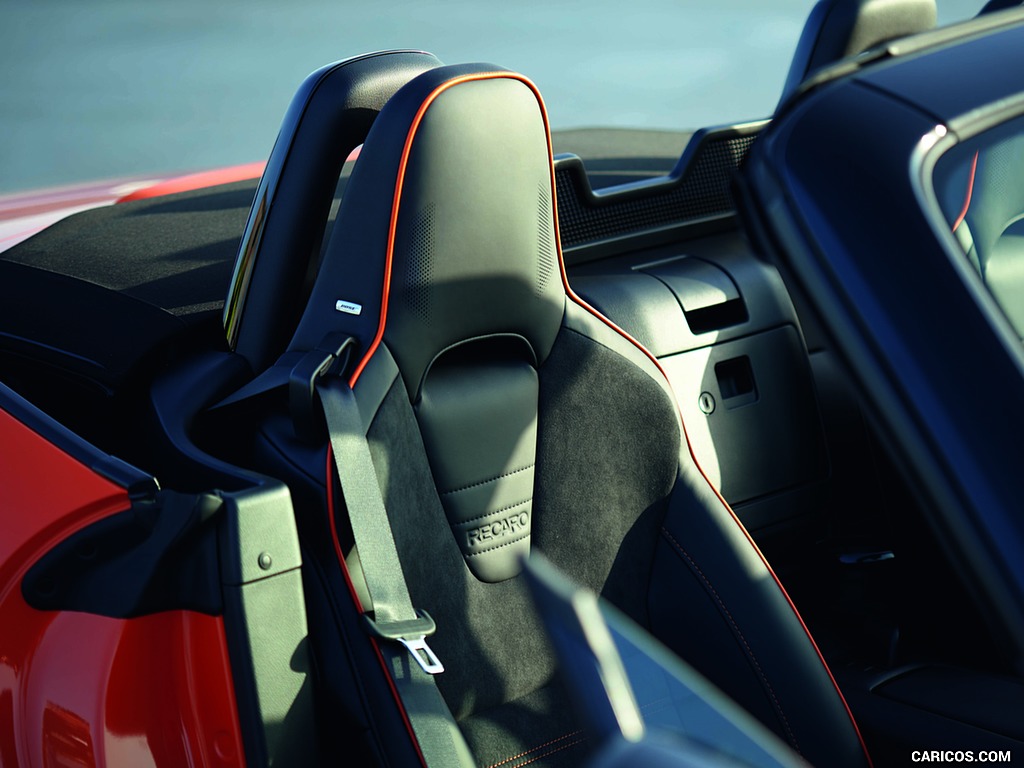 \n
\n
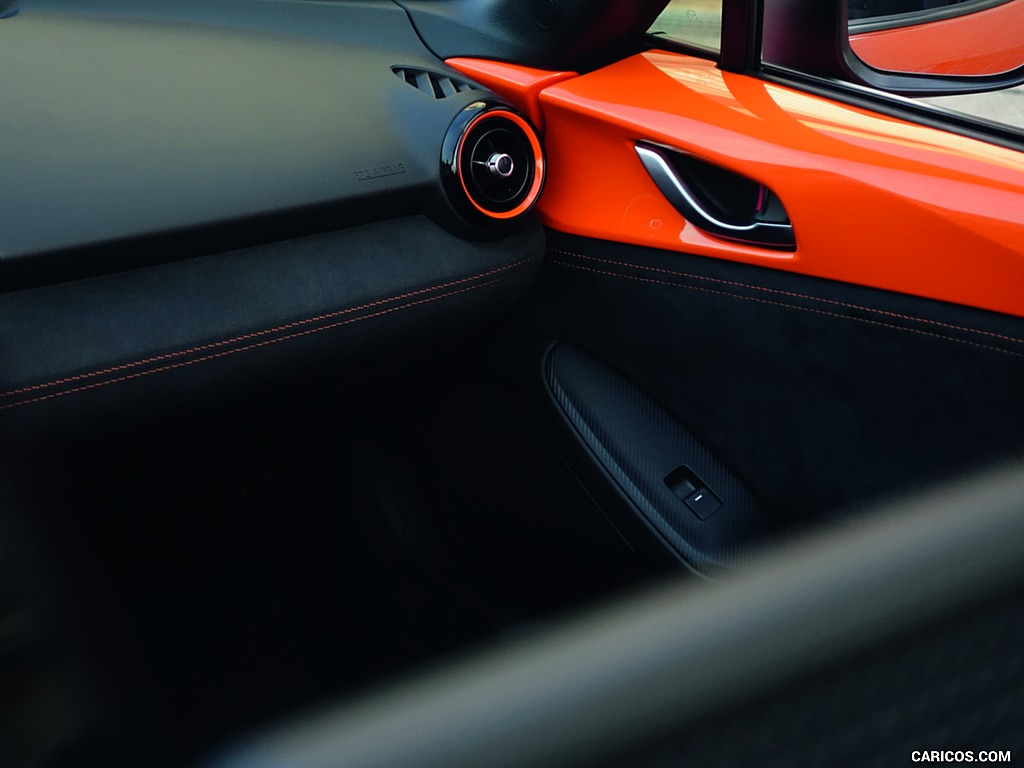 \n
\n
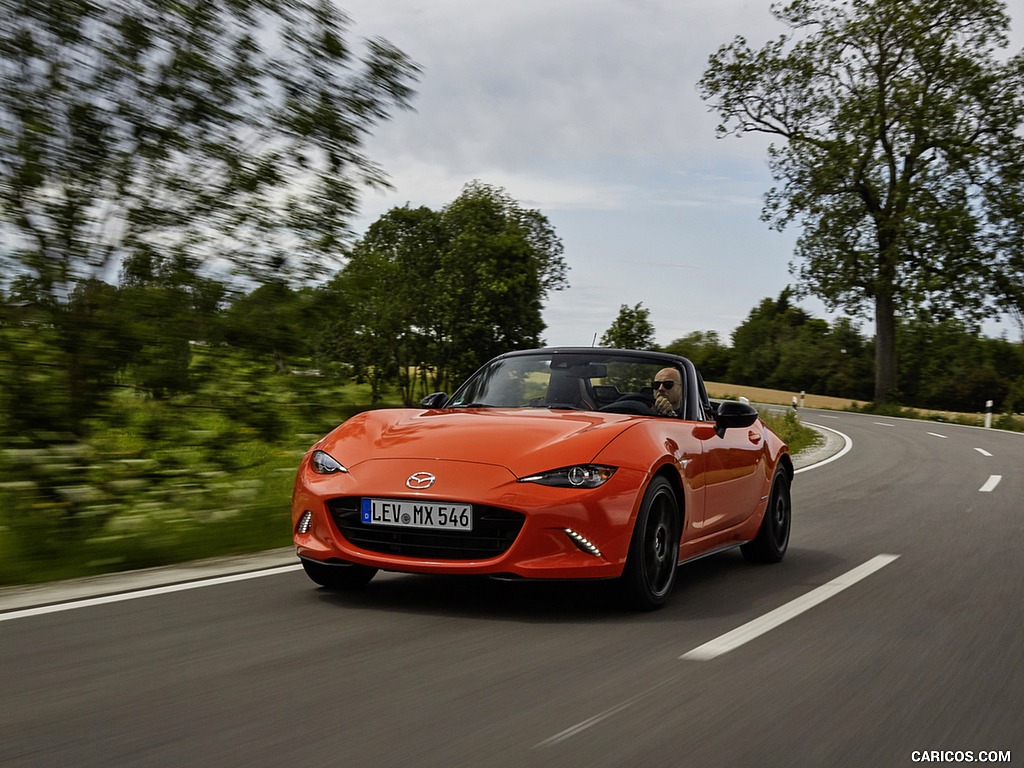 \n
\n
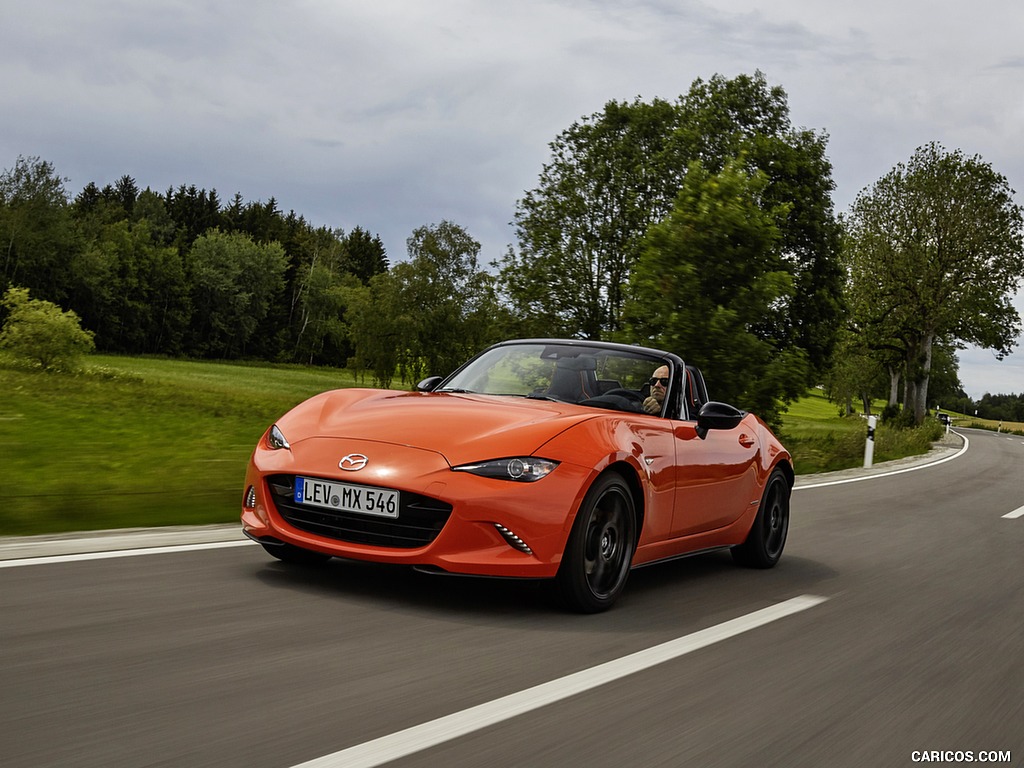 \n
\n
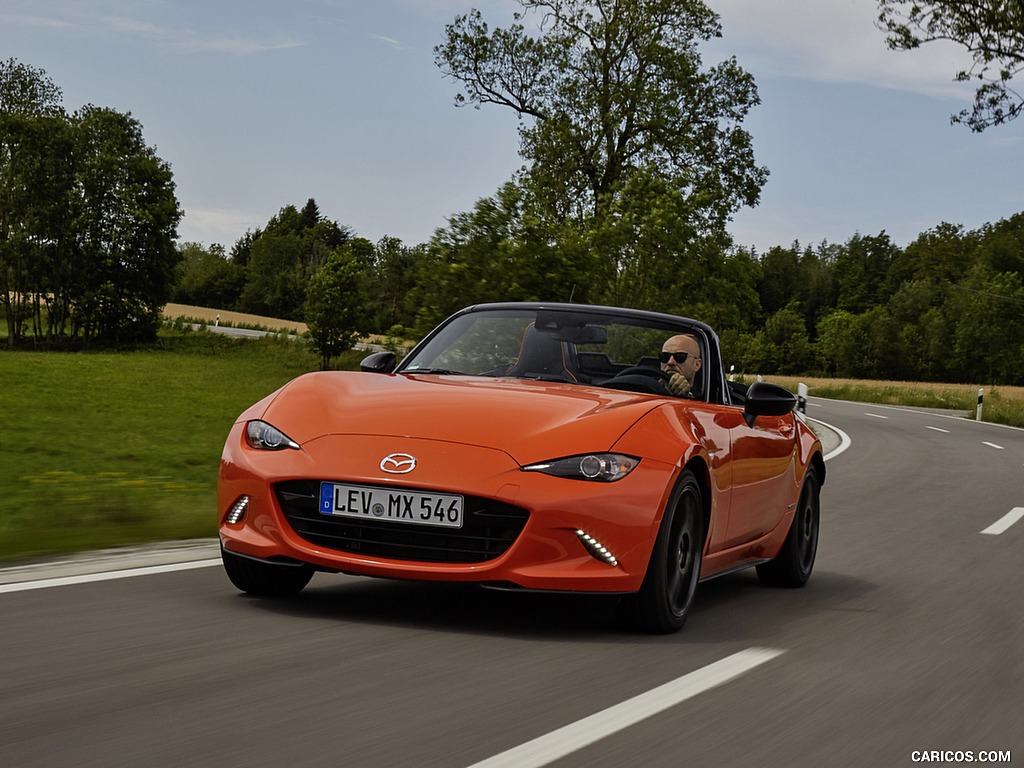 \n
\n
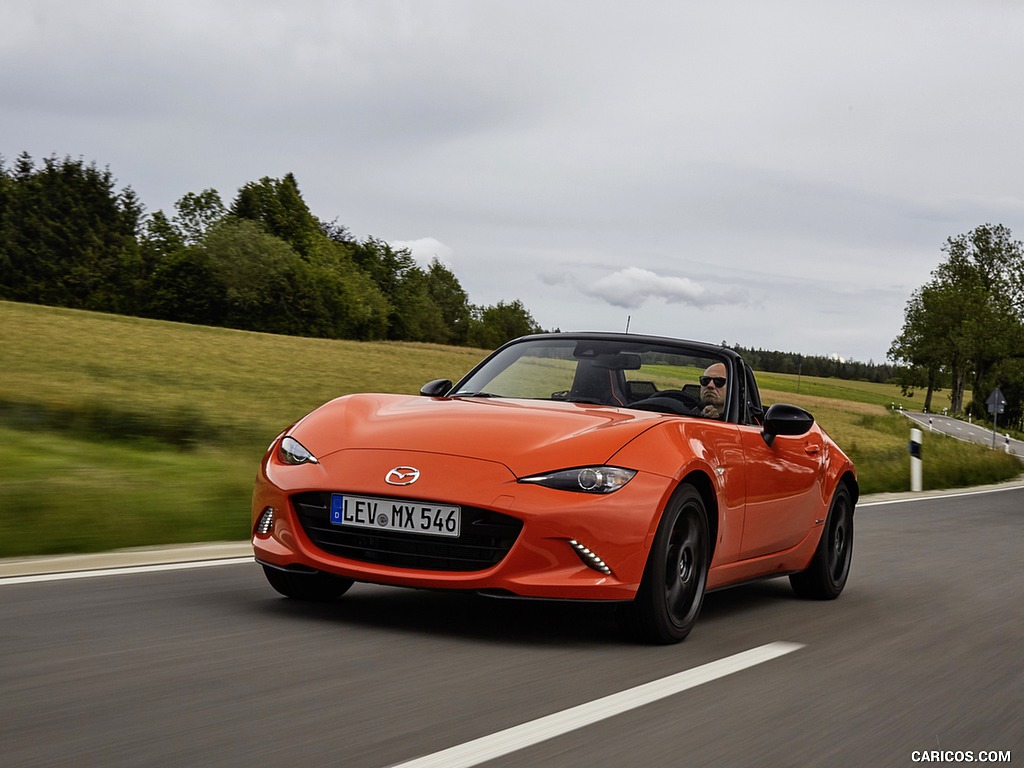 \n
\n
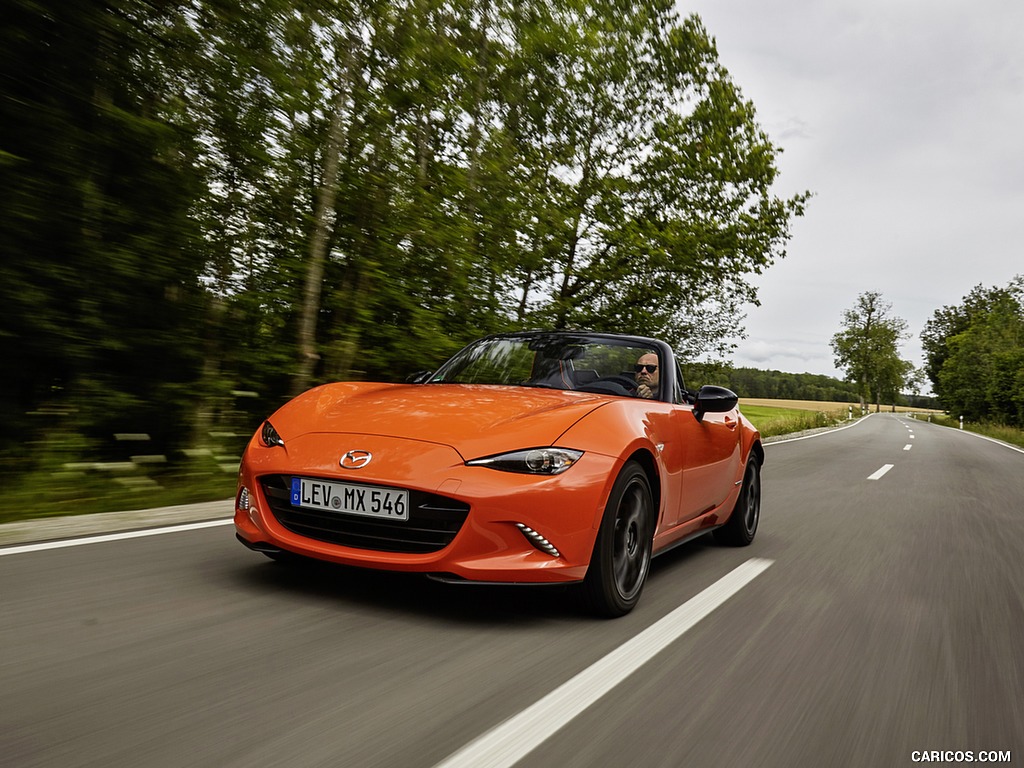 \n
\n
 \n
\n
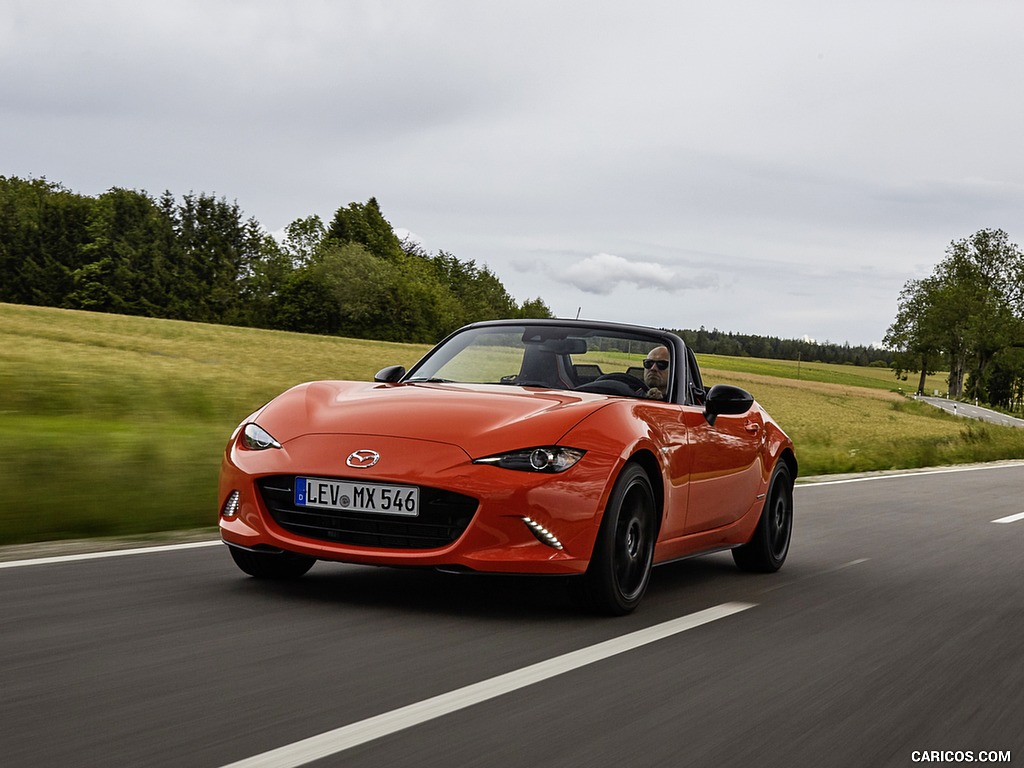 \n
\n
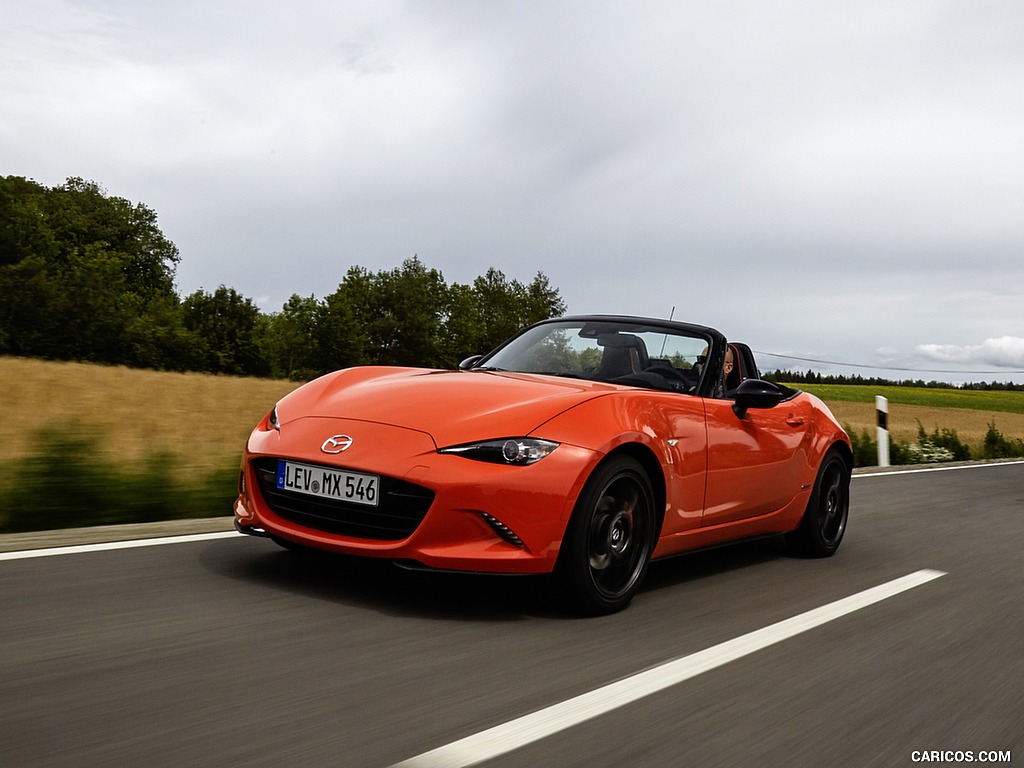 \n
\n
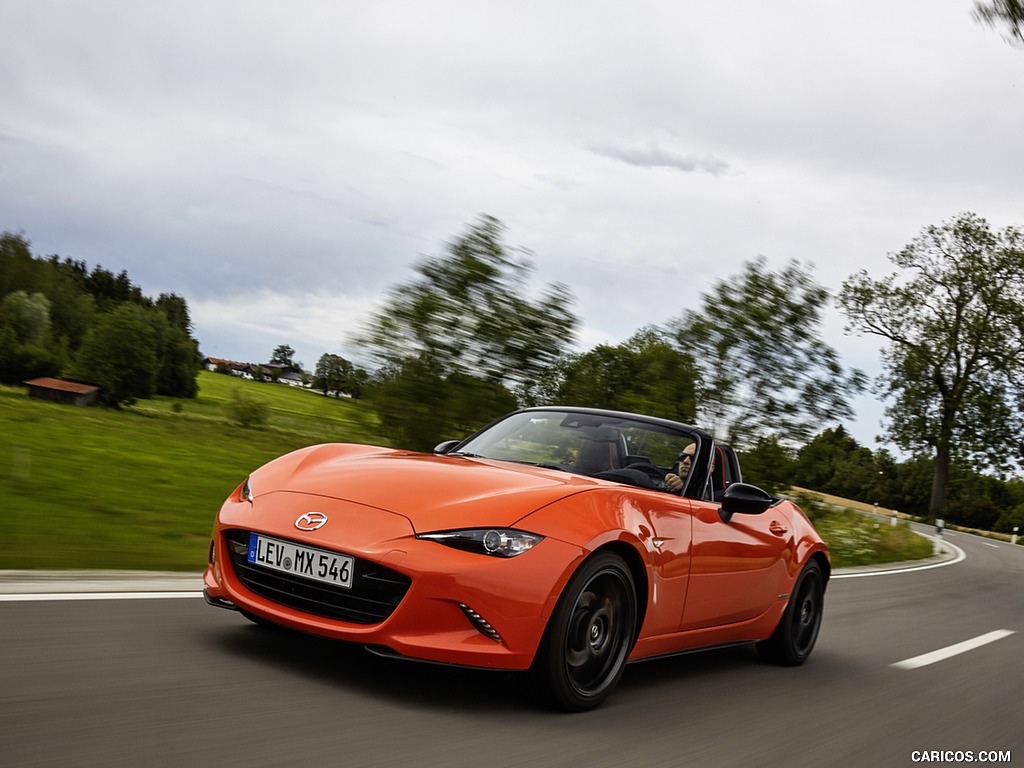 \n
\n
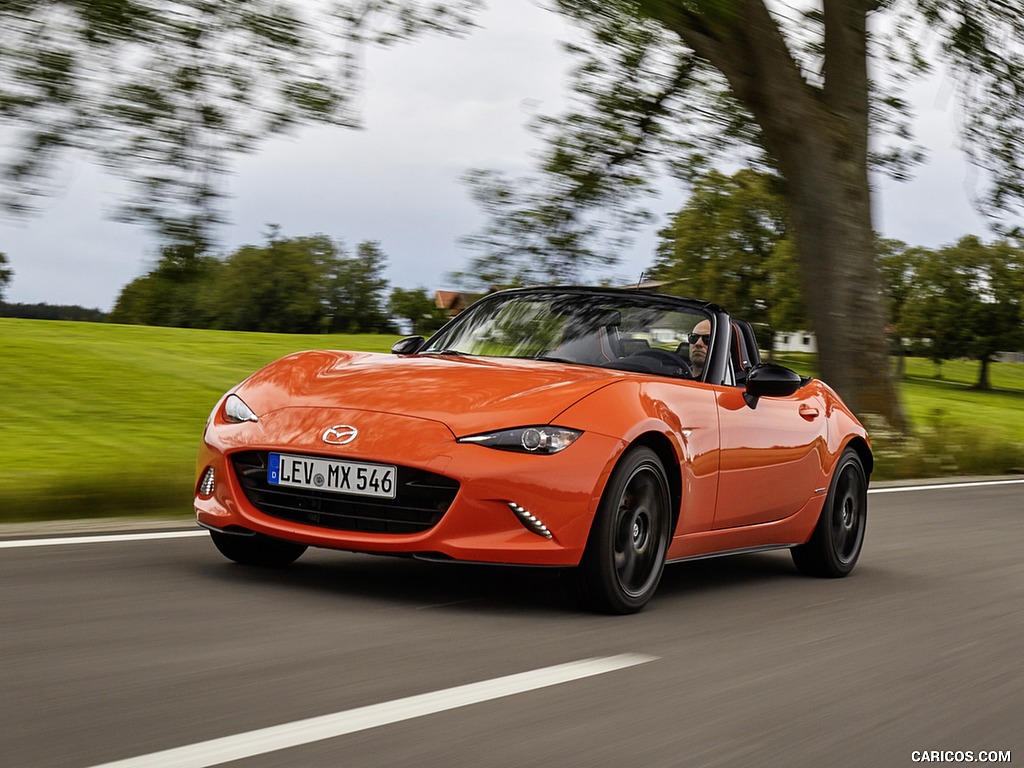 \n
\n
 \n
\n
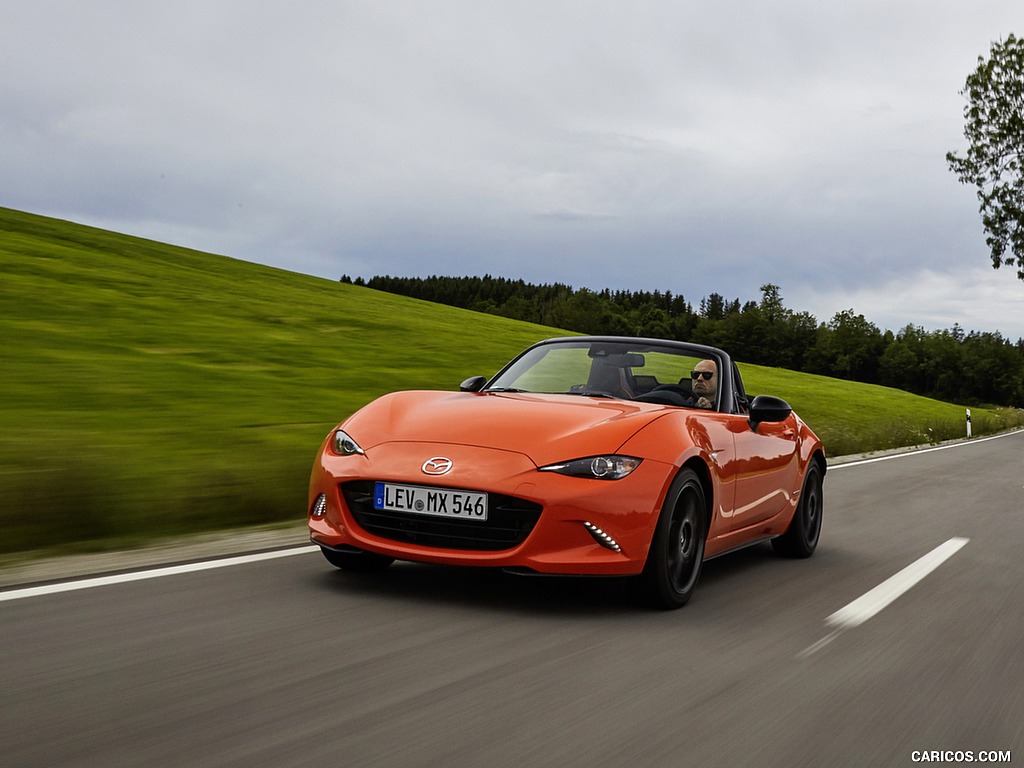 \n
\n
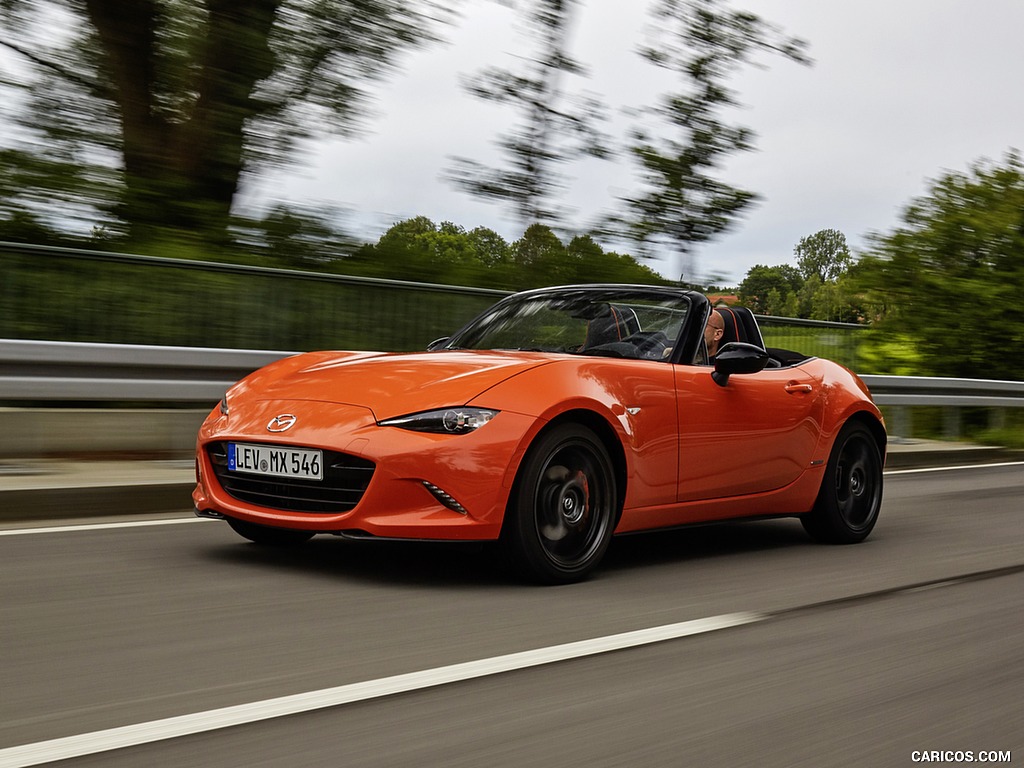 \n
\n
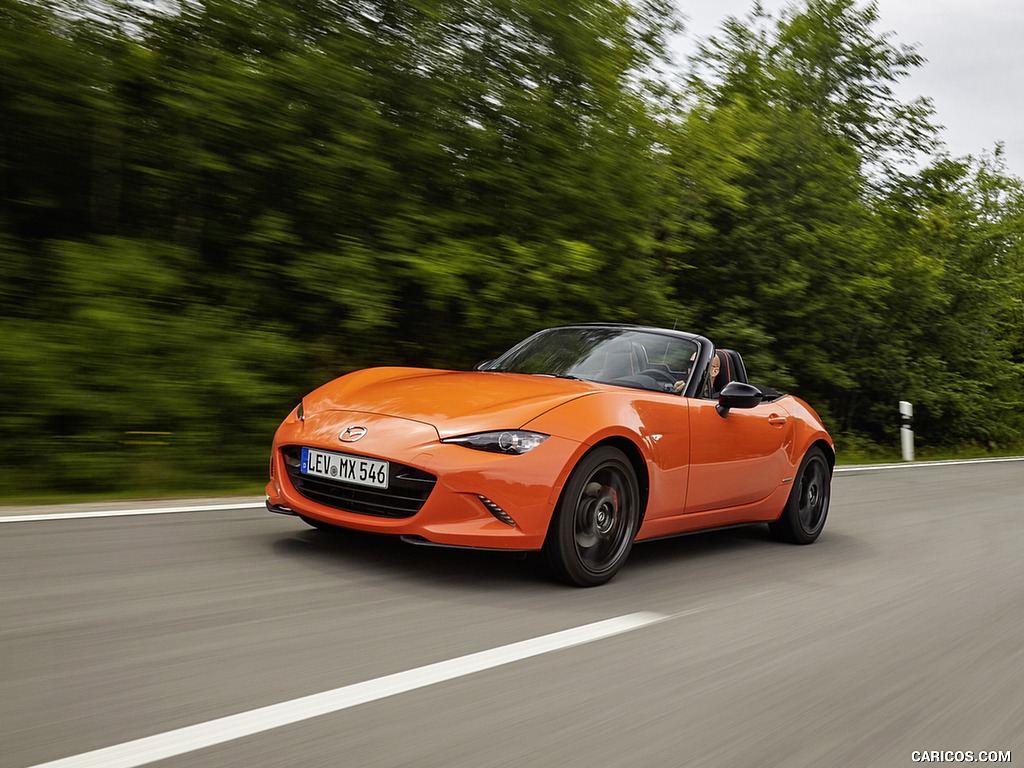 \n
\n
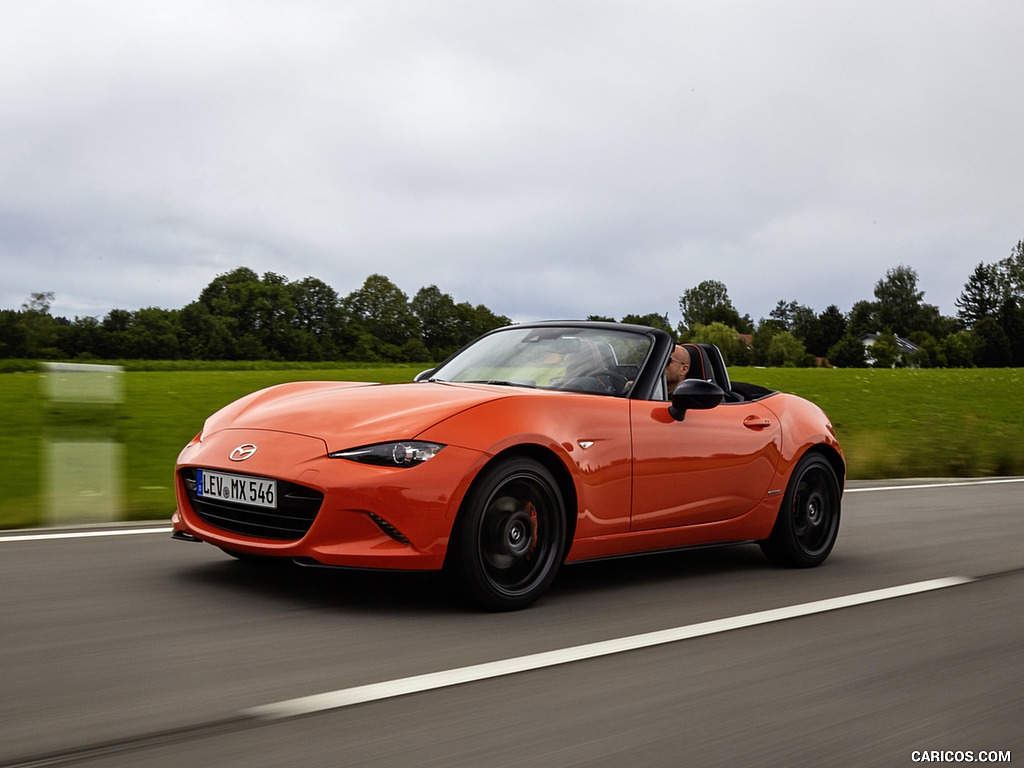 \n
\n
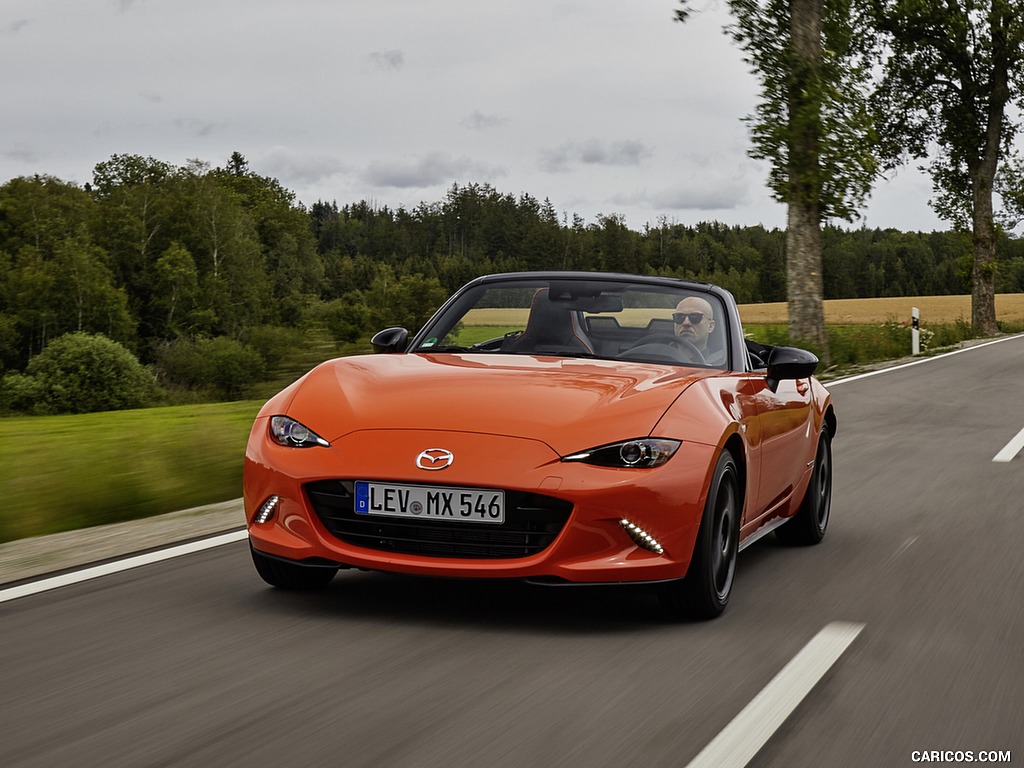 \n
\n
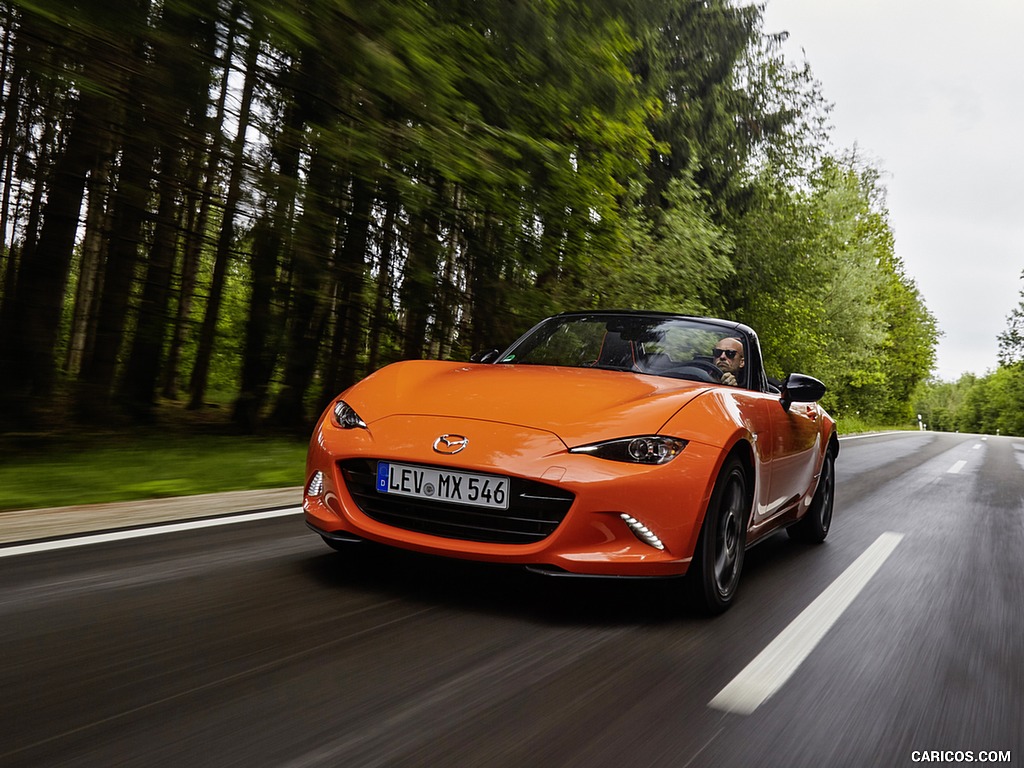 \n
\n
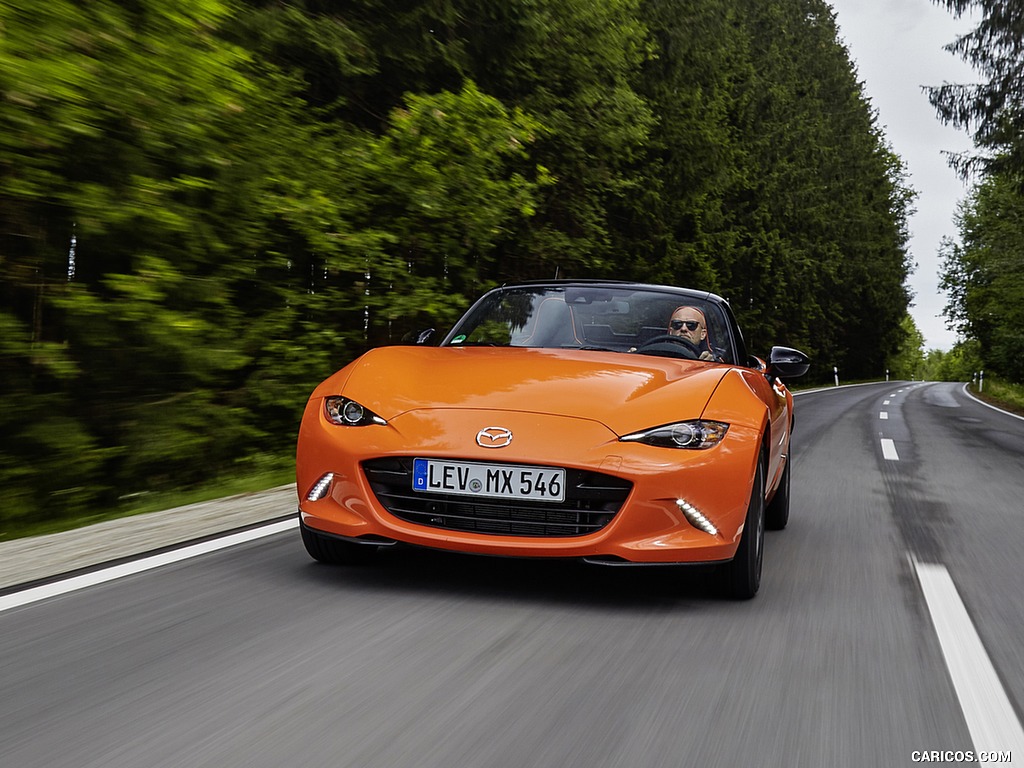 \n
\n
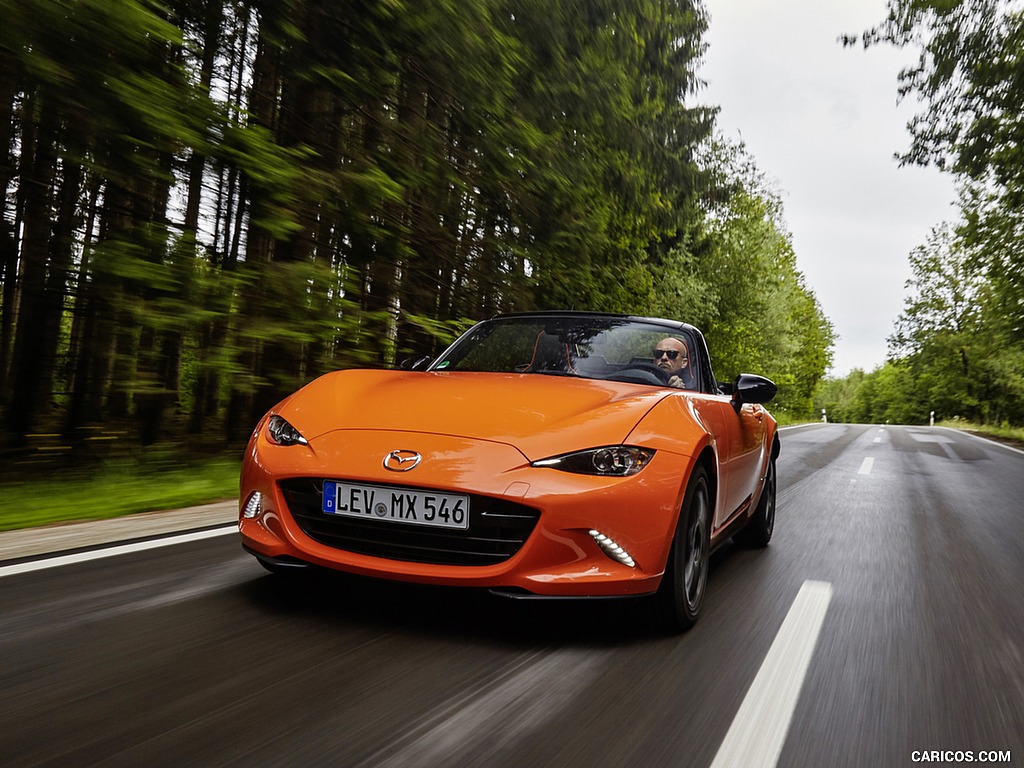 \n
\n
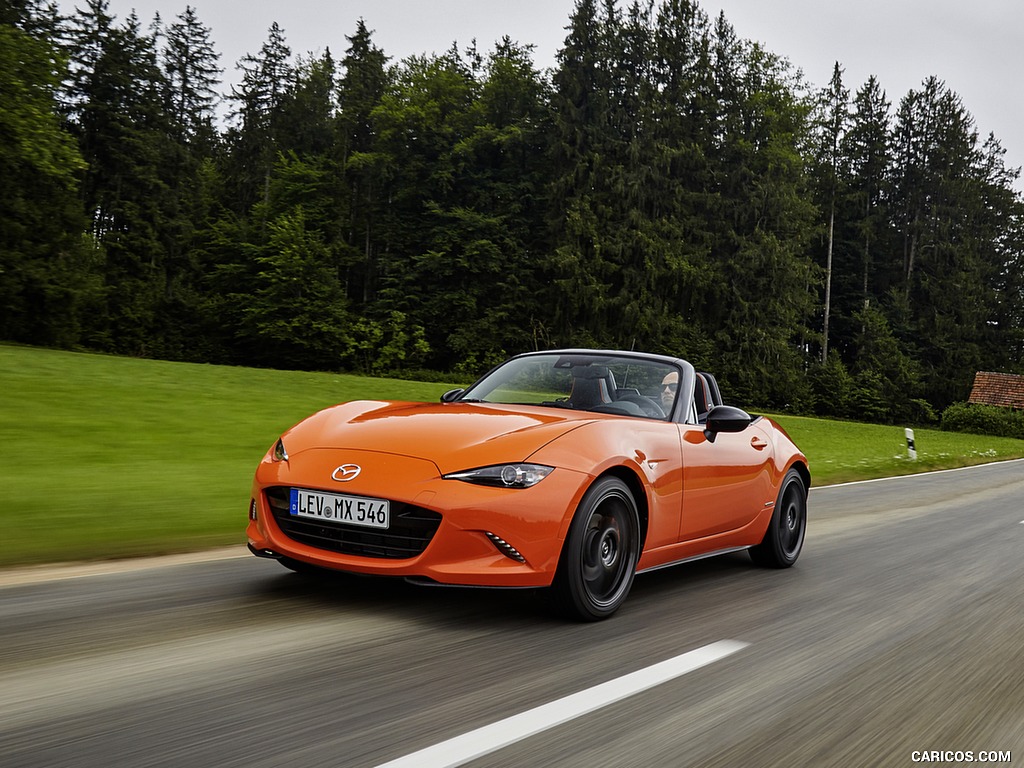 \n
\n
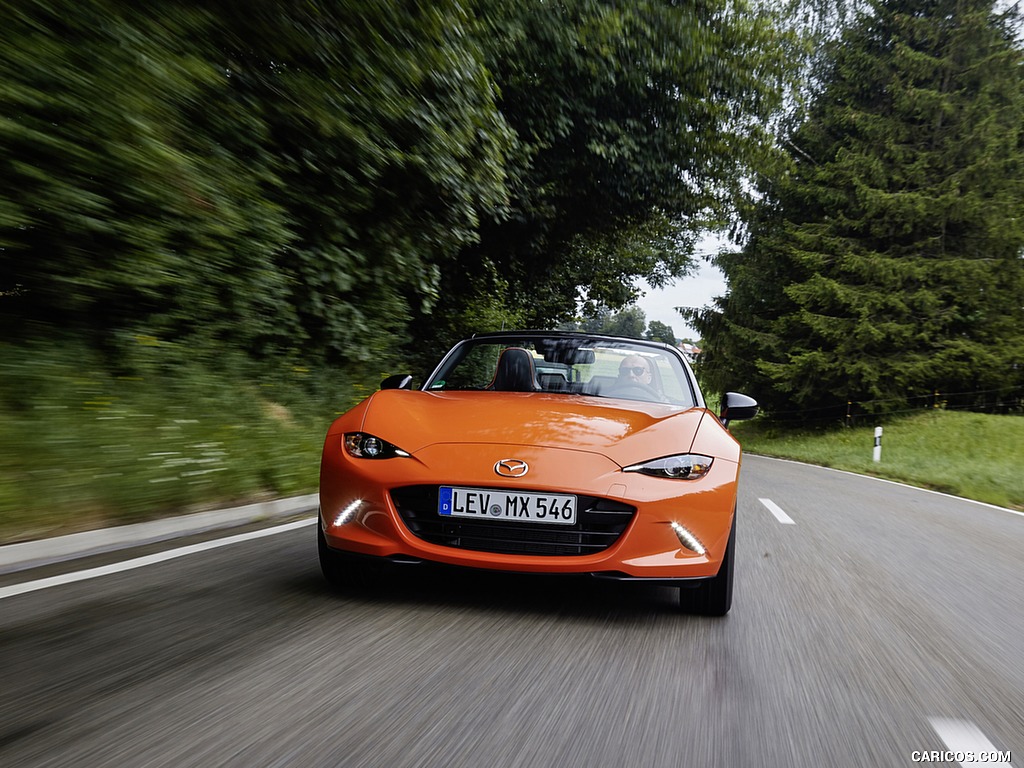 \n
\n
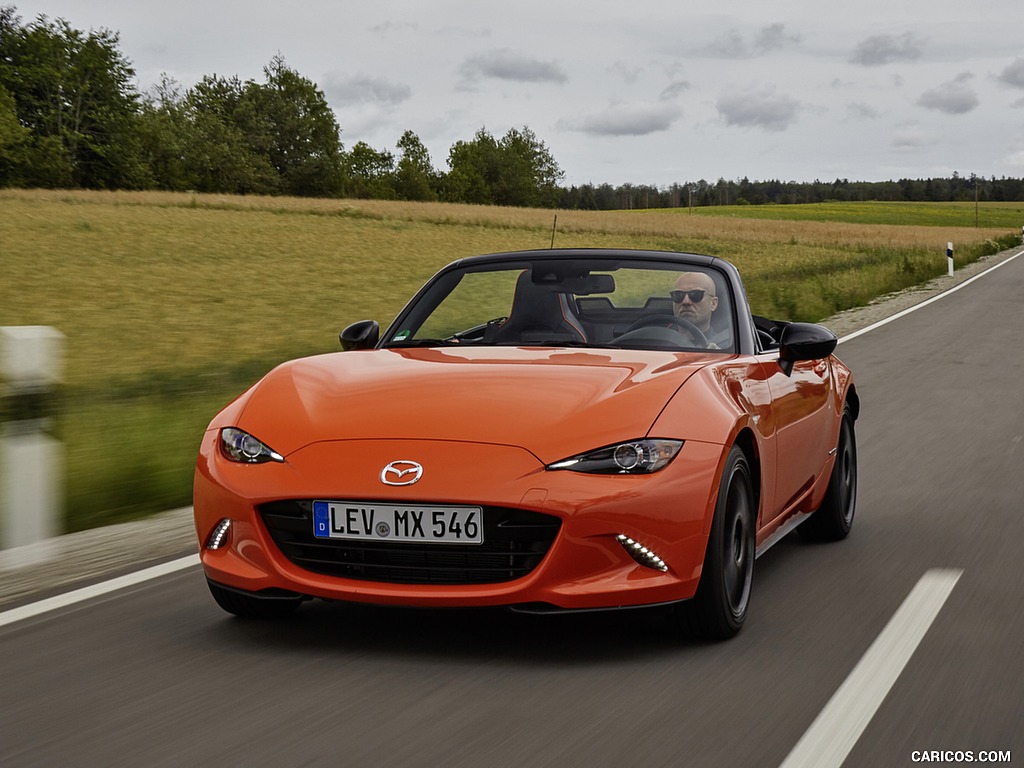 \n
\n
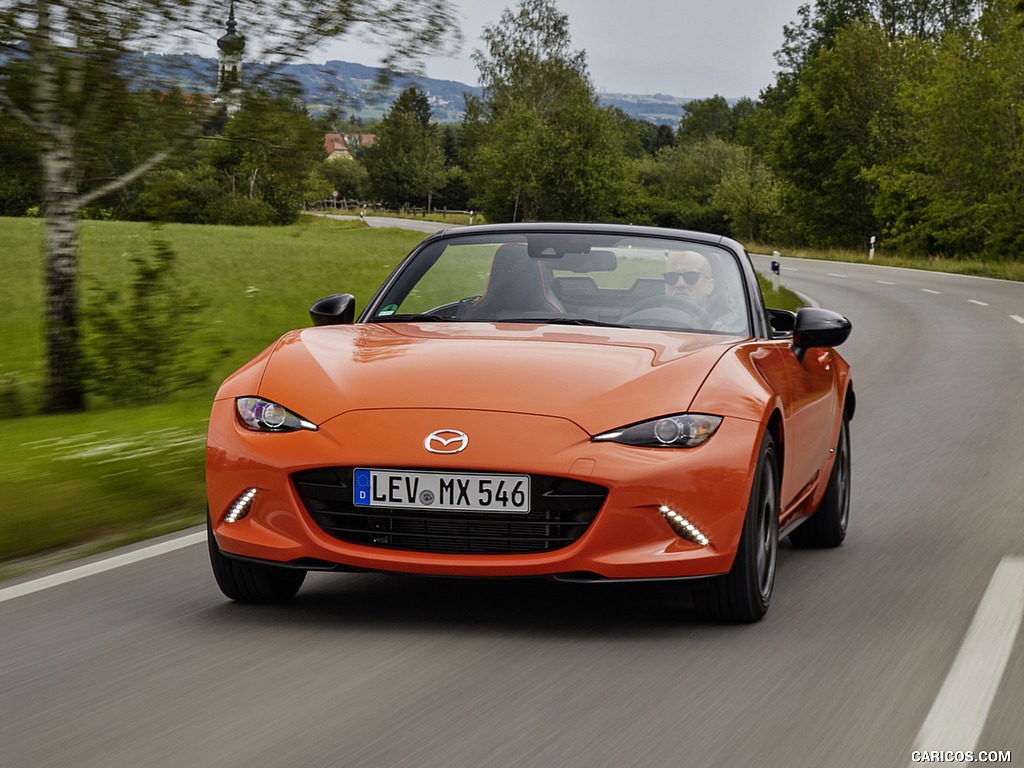 \n
\n
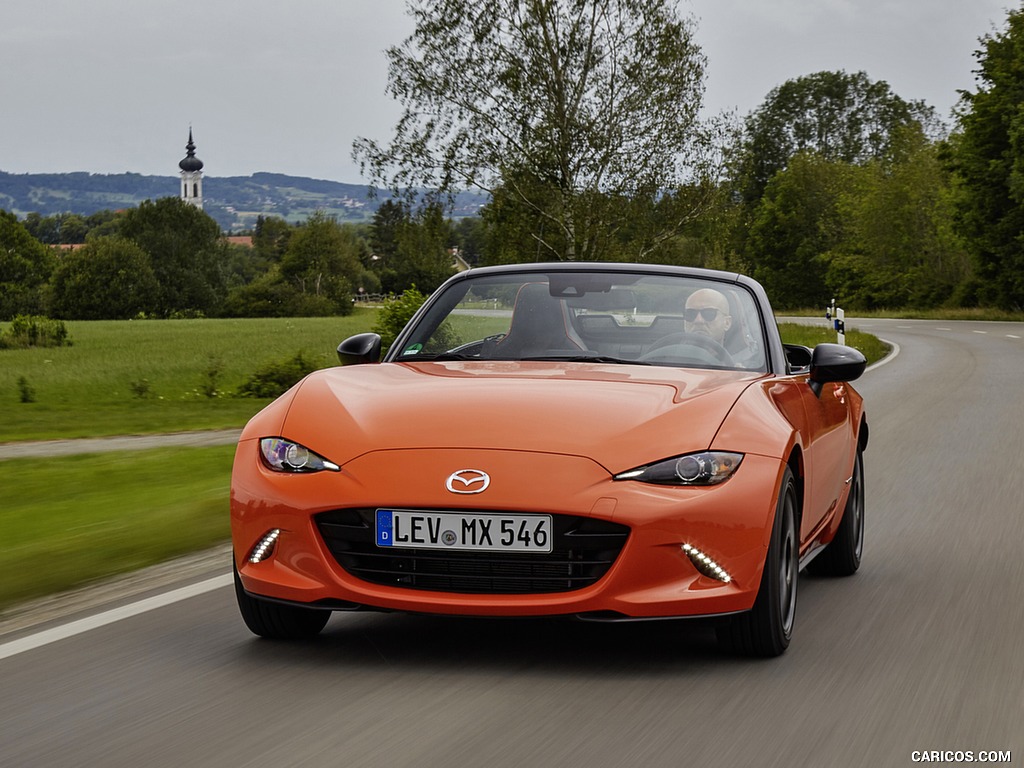 \n
\n
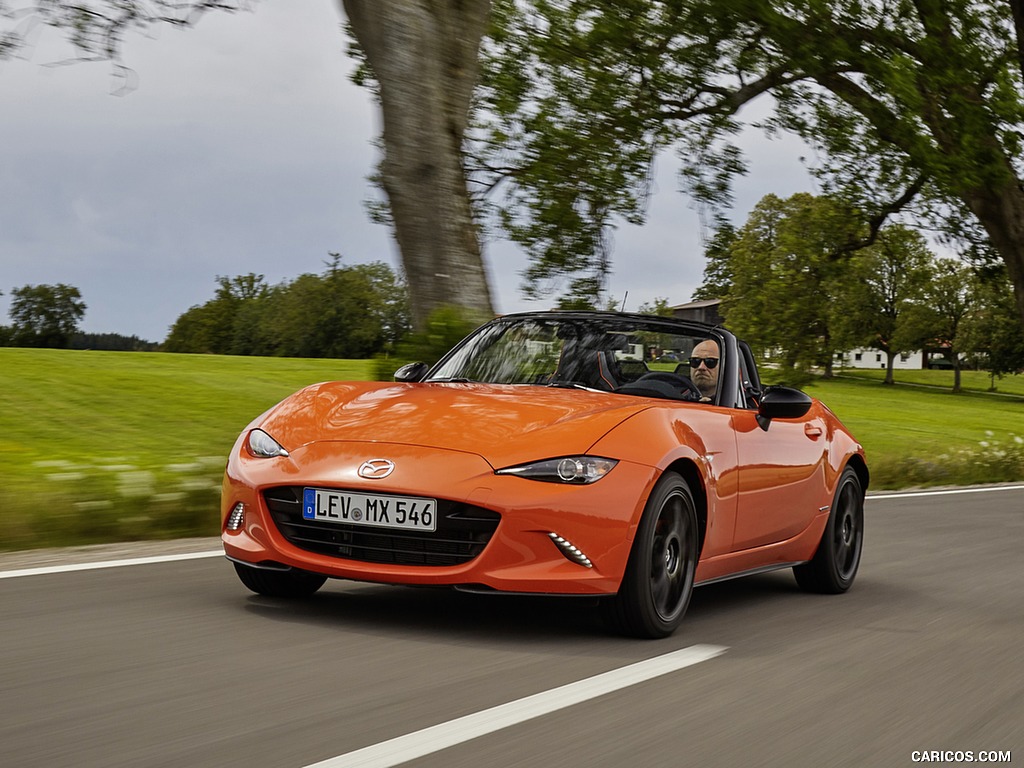 \n
\n
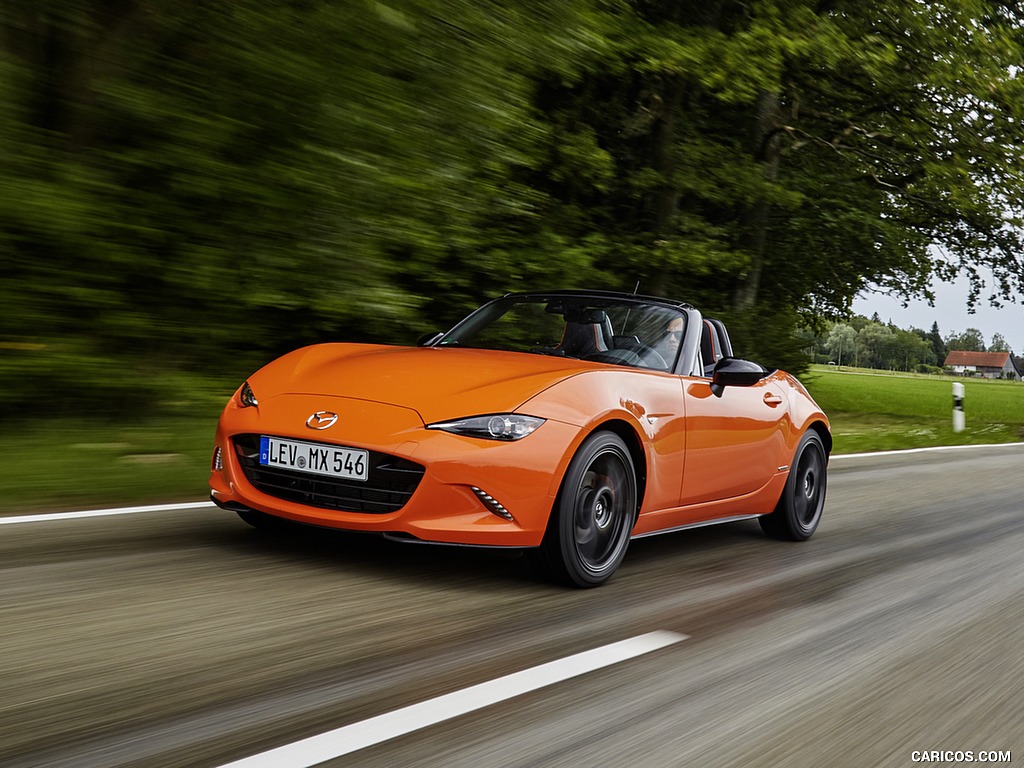 \n
\n
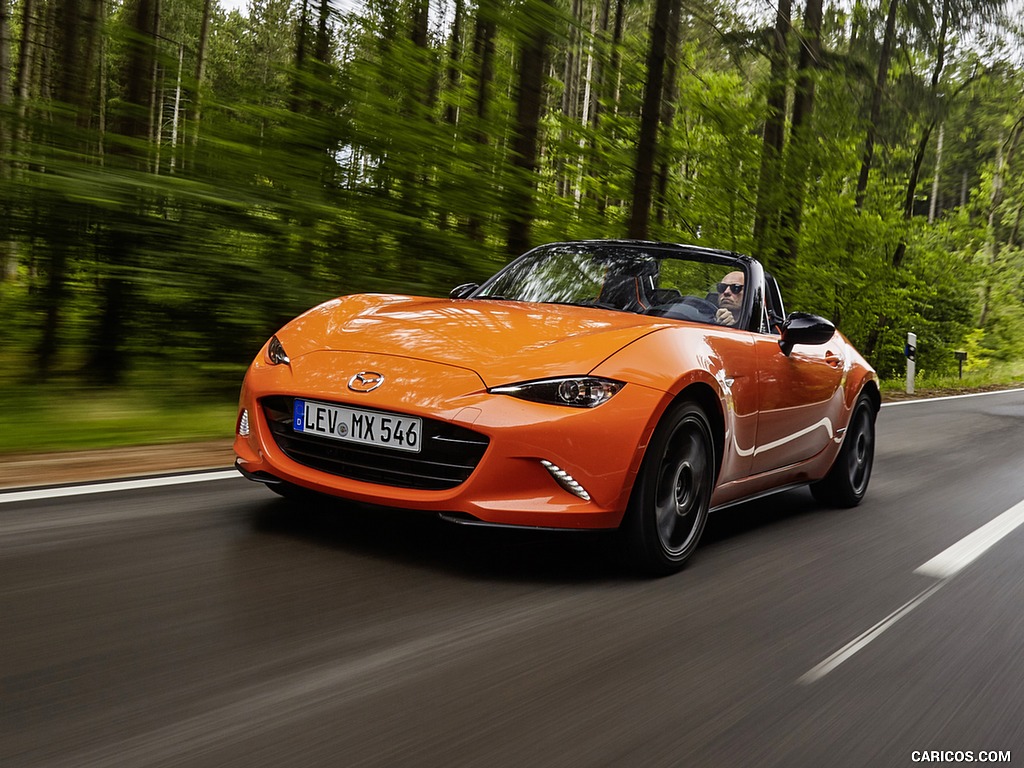 \n
\n
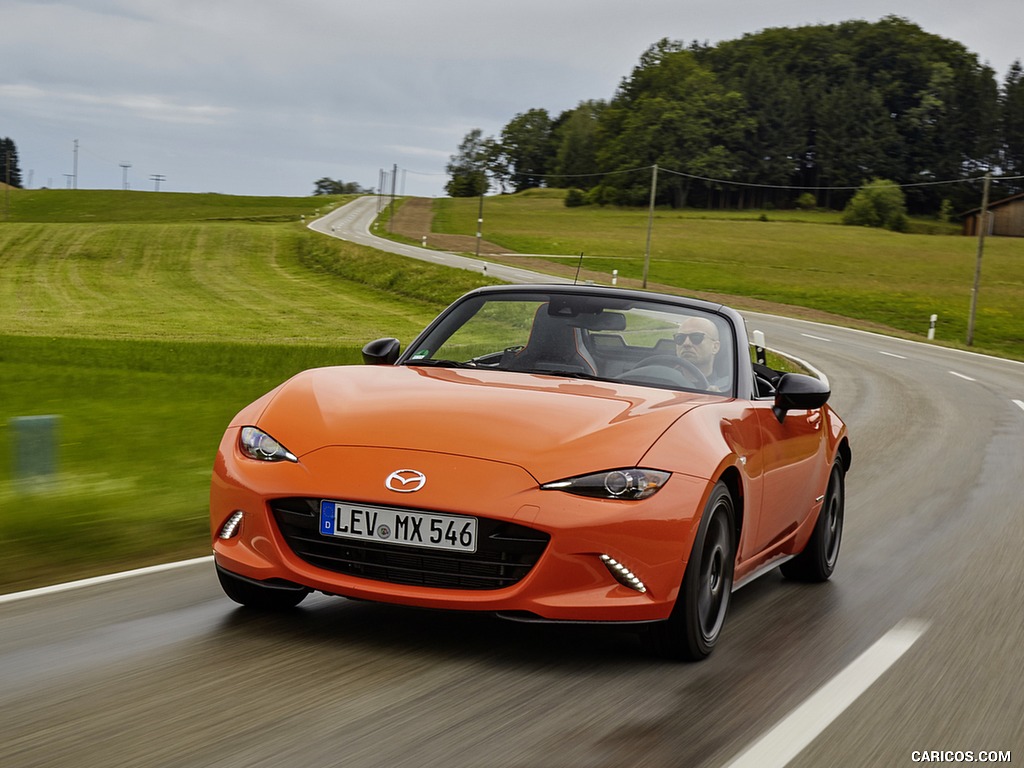 \n
\n
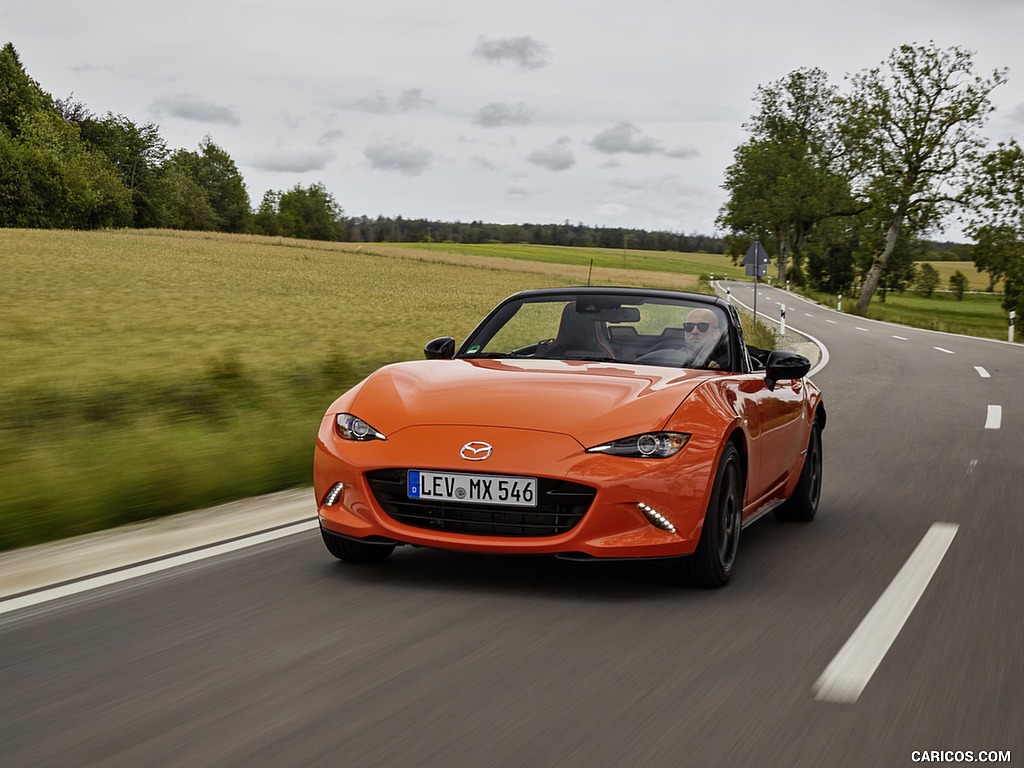 \n
\n
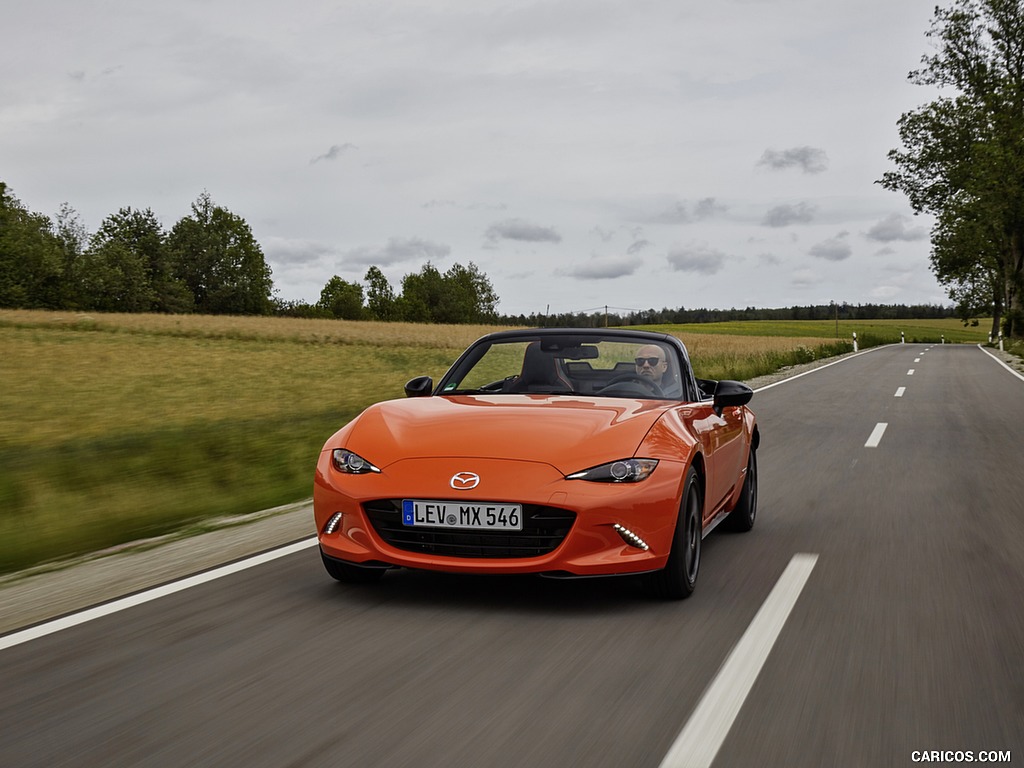 \n
\n
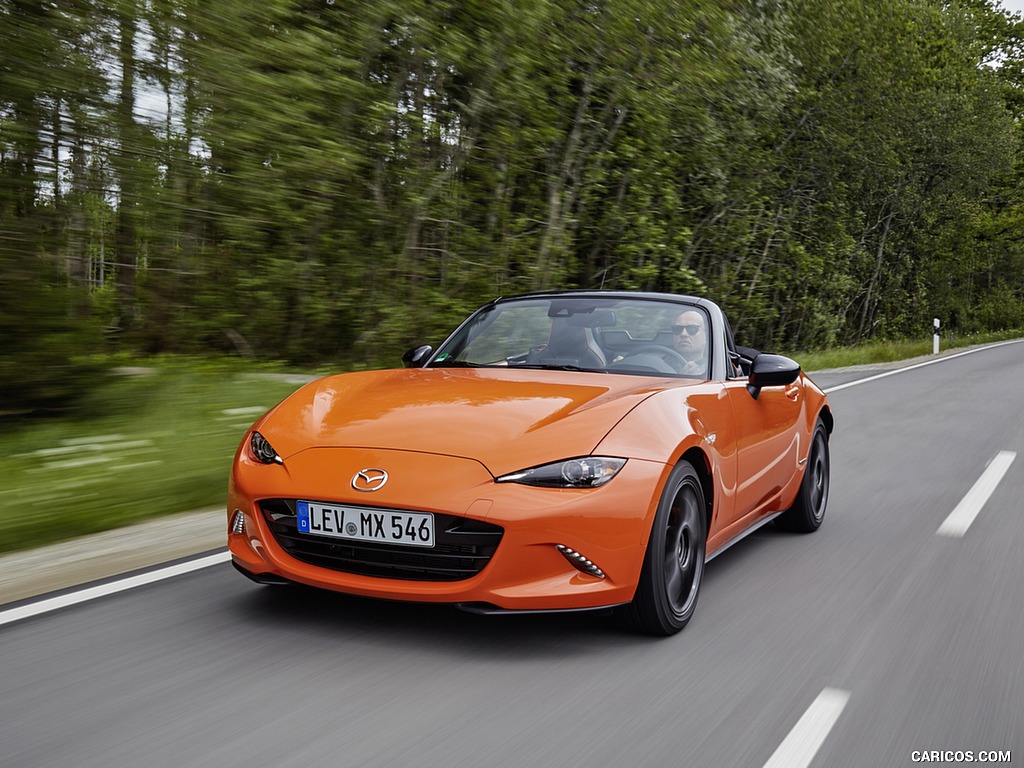 \n
\n
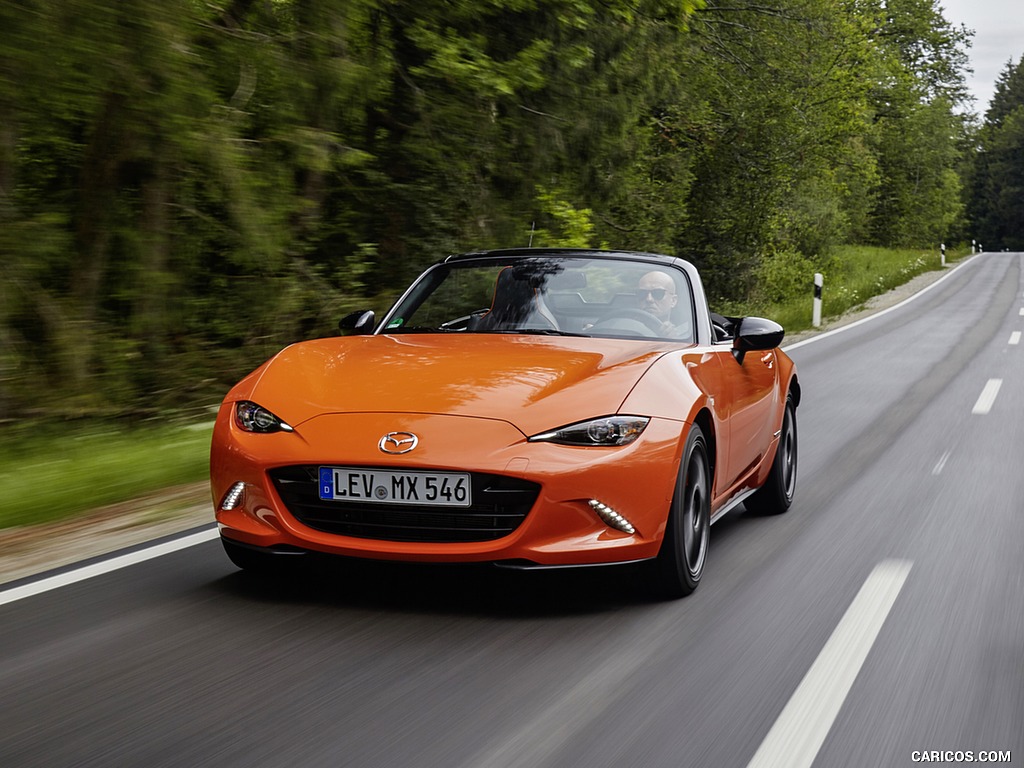 \n
\n
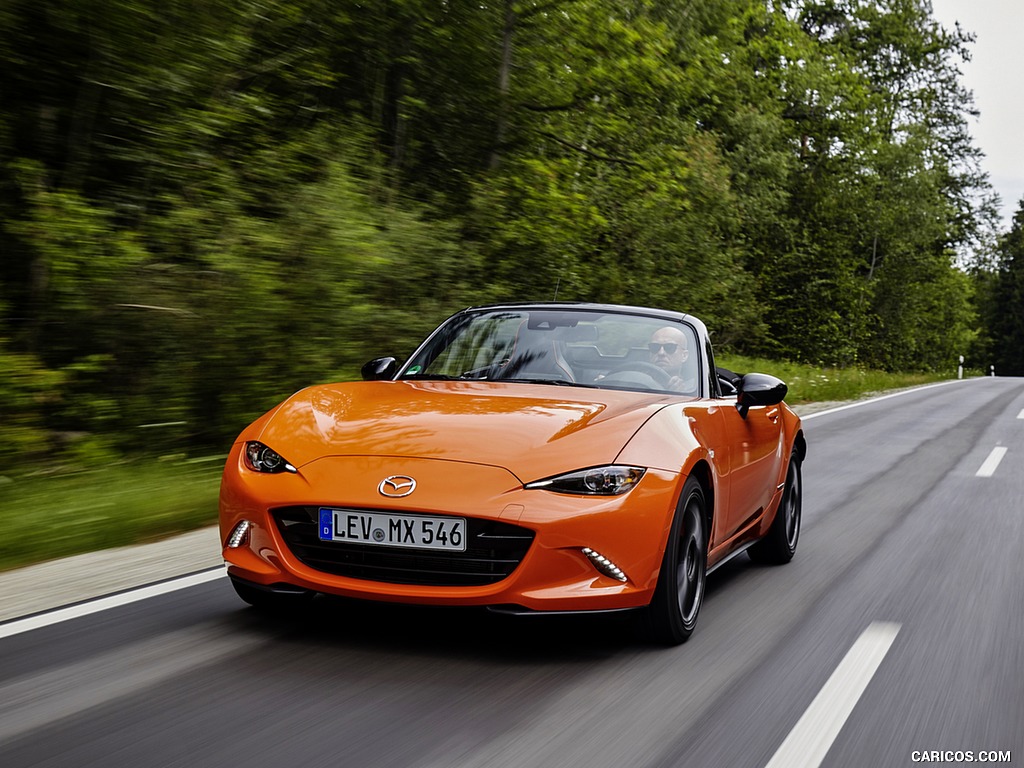 \n
\n
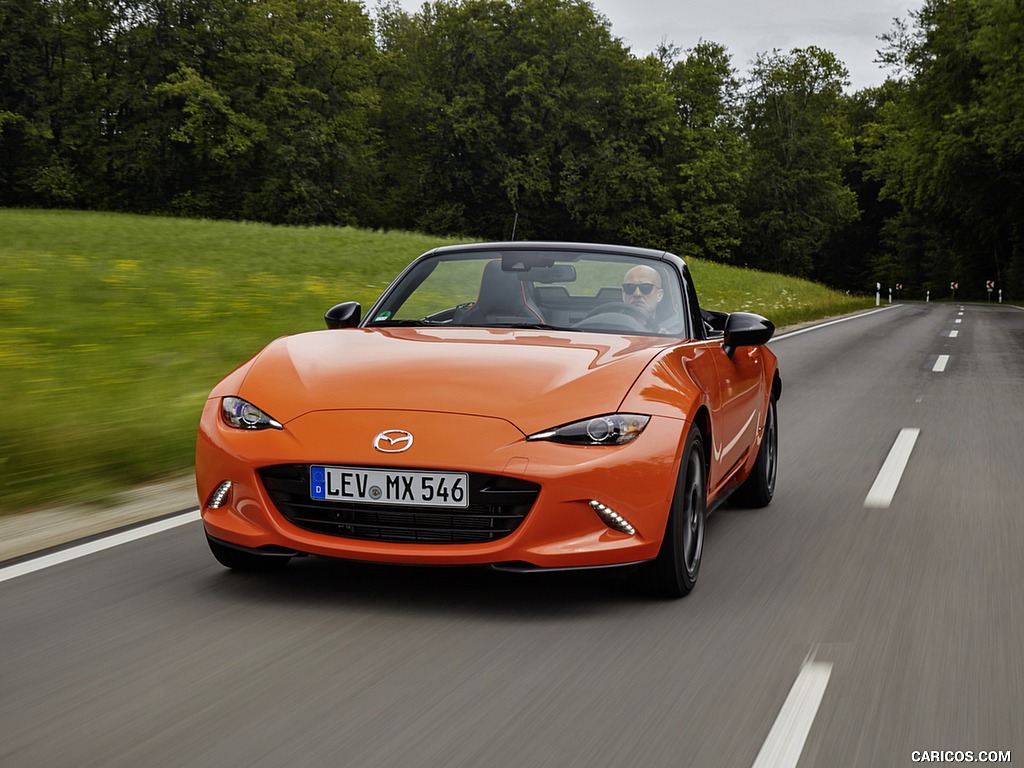 \n
\n
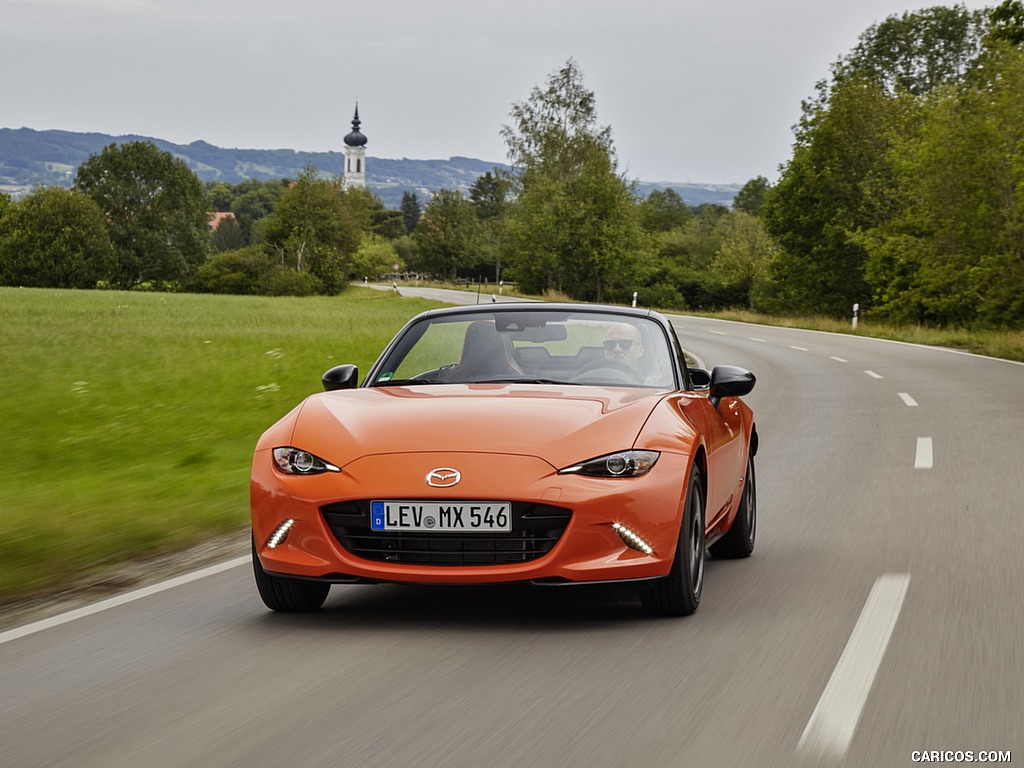 \n
\n
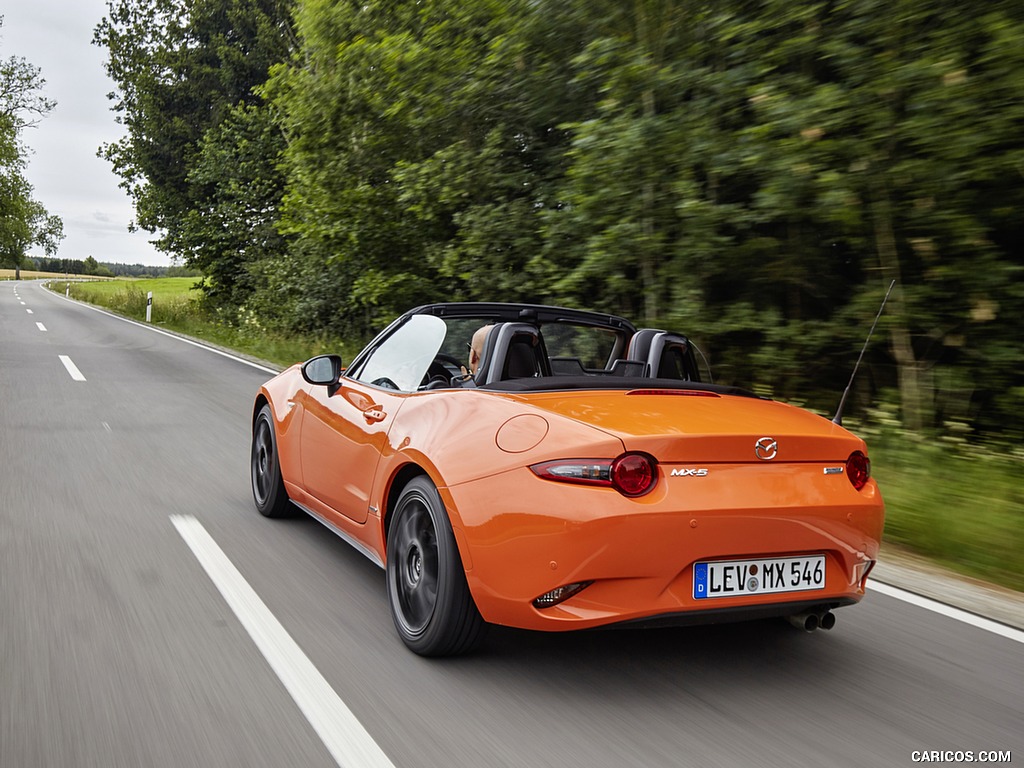 \n
\n
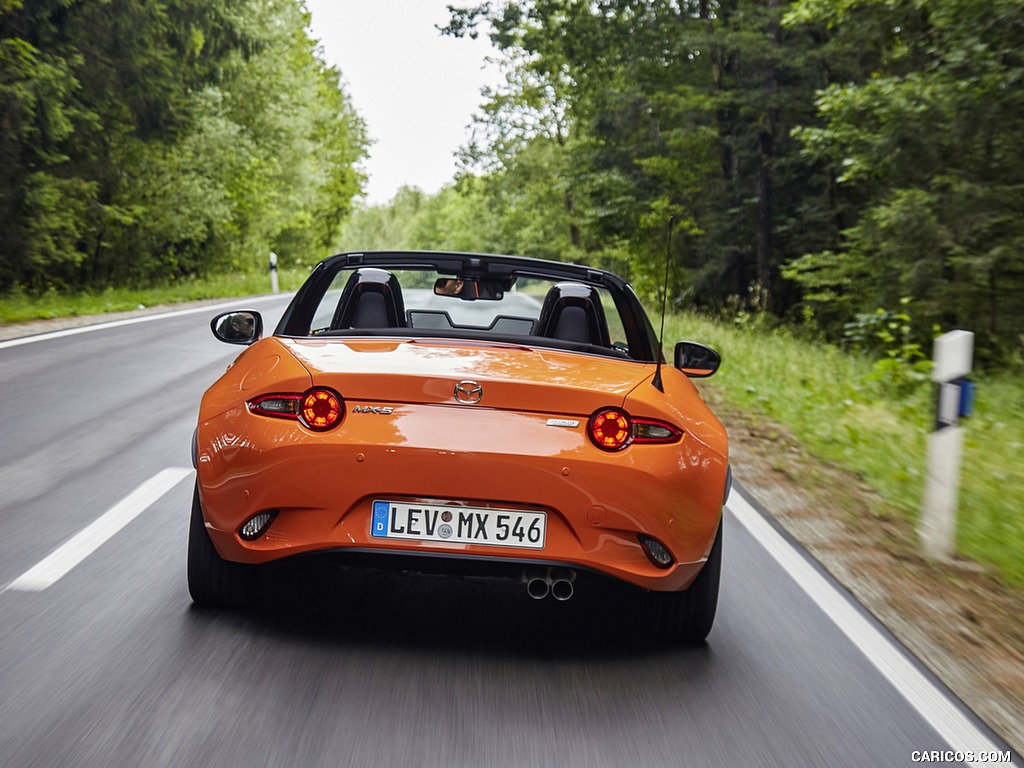 \n
\n
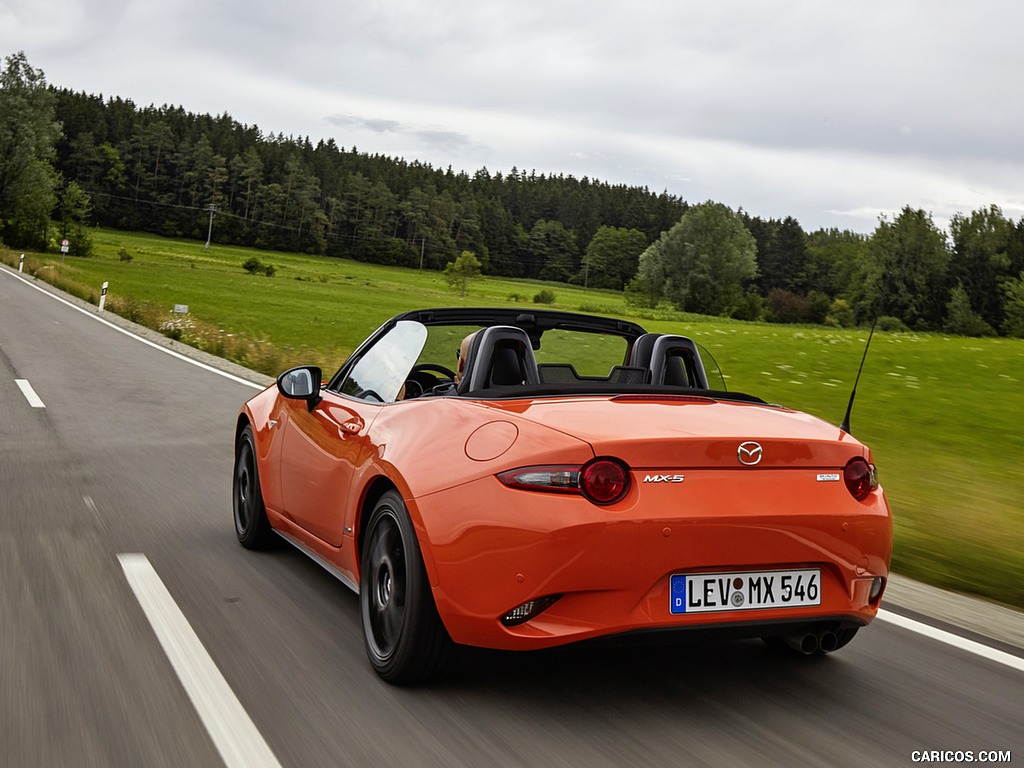 \n
\n
 \n
\n
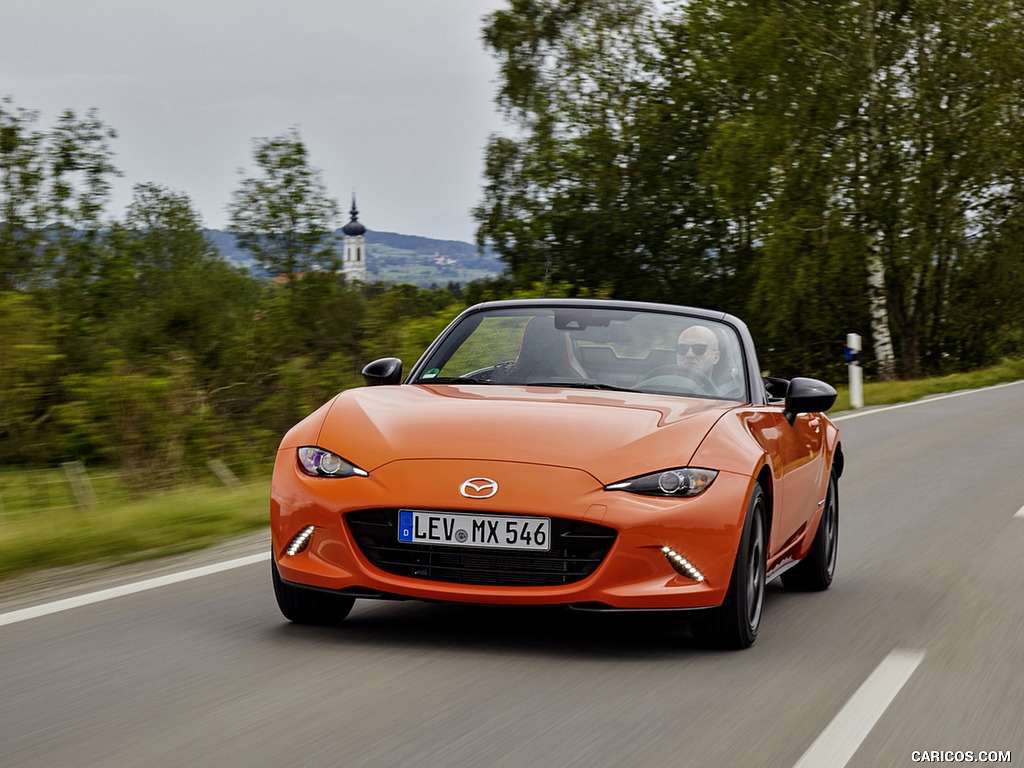 \n
\n
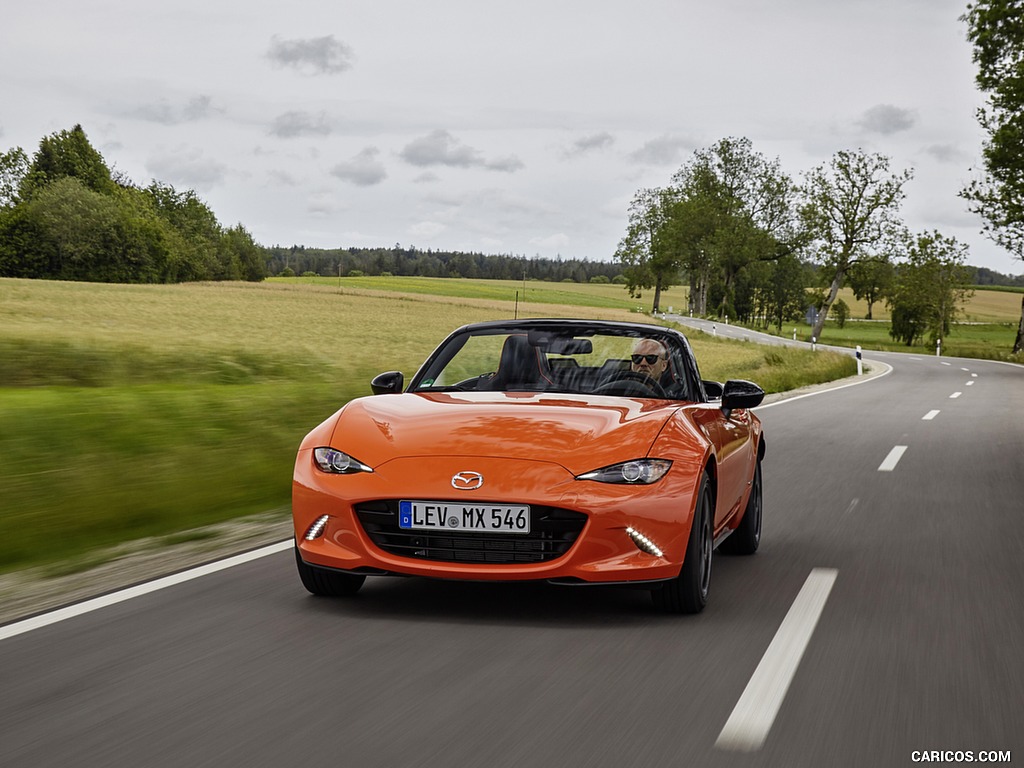 \n
\n
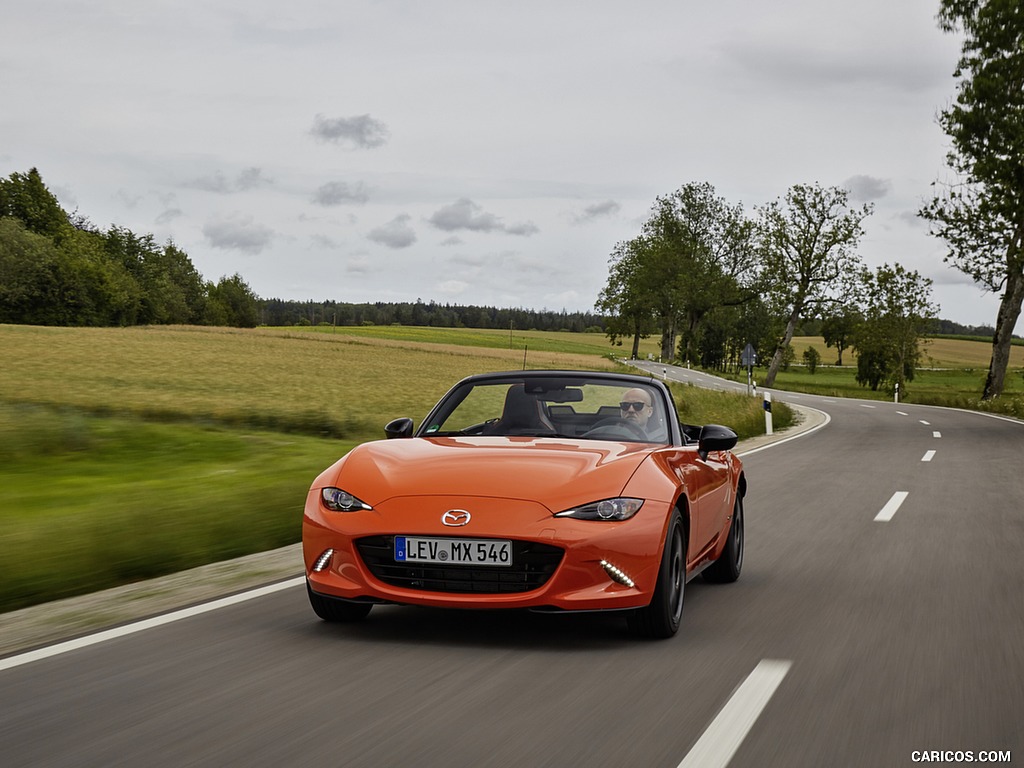 \n
\n
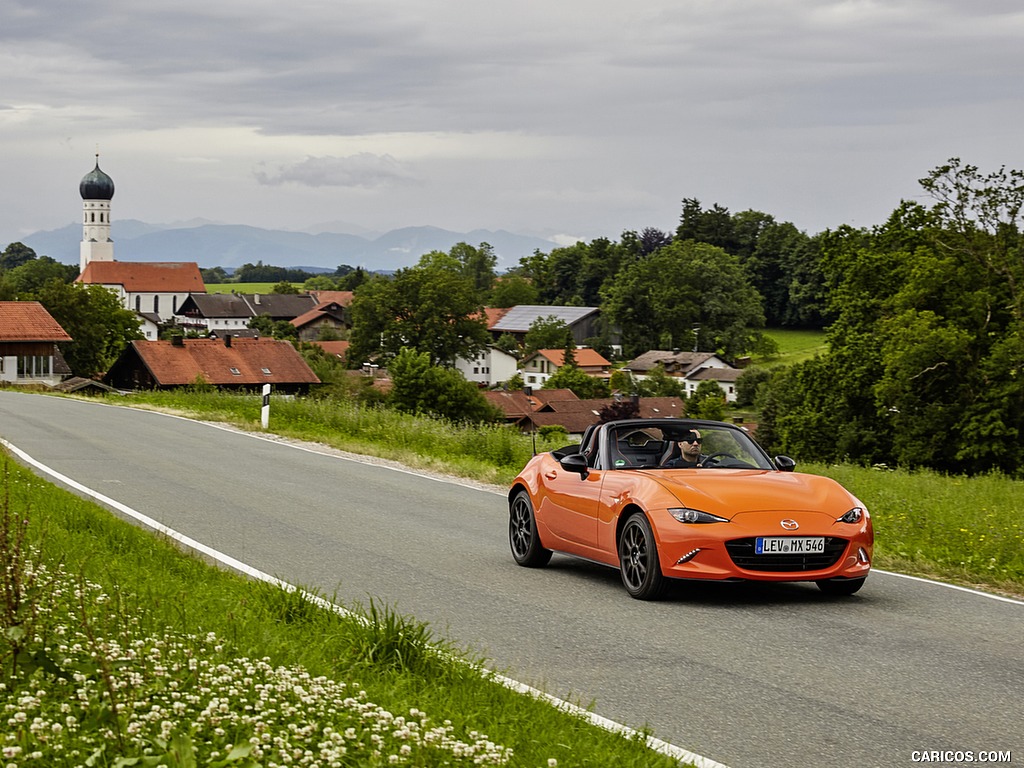 \n
\n
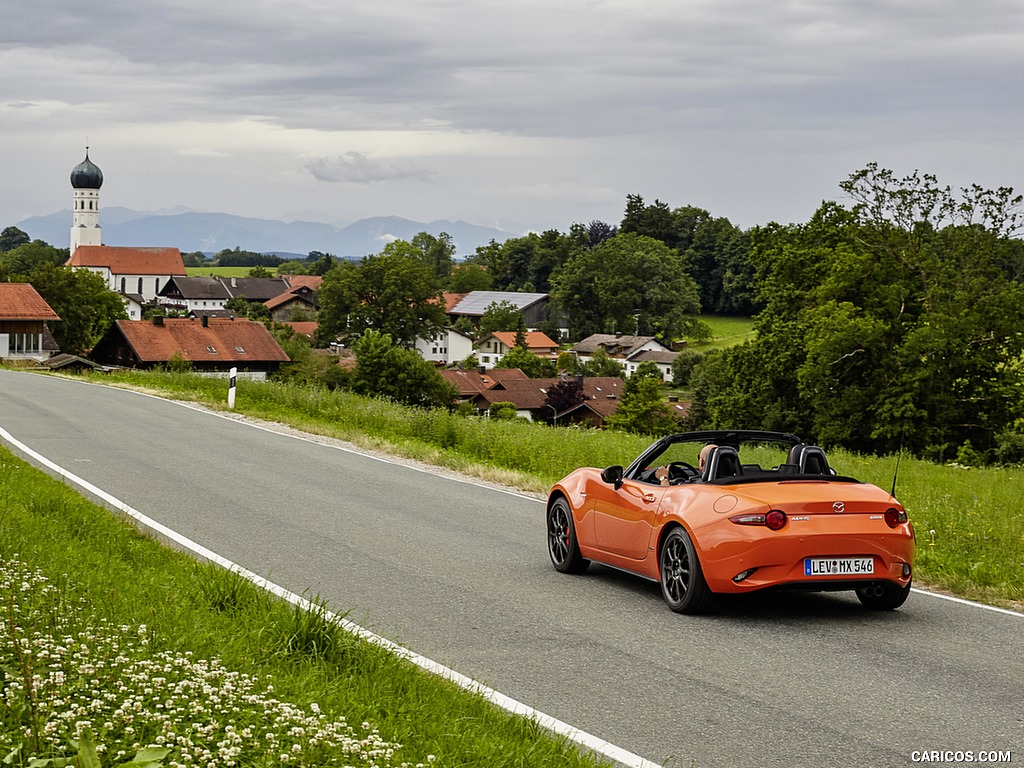 \n
\n
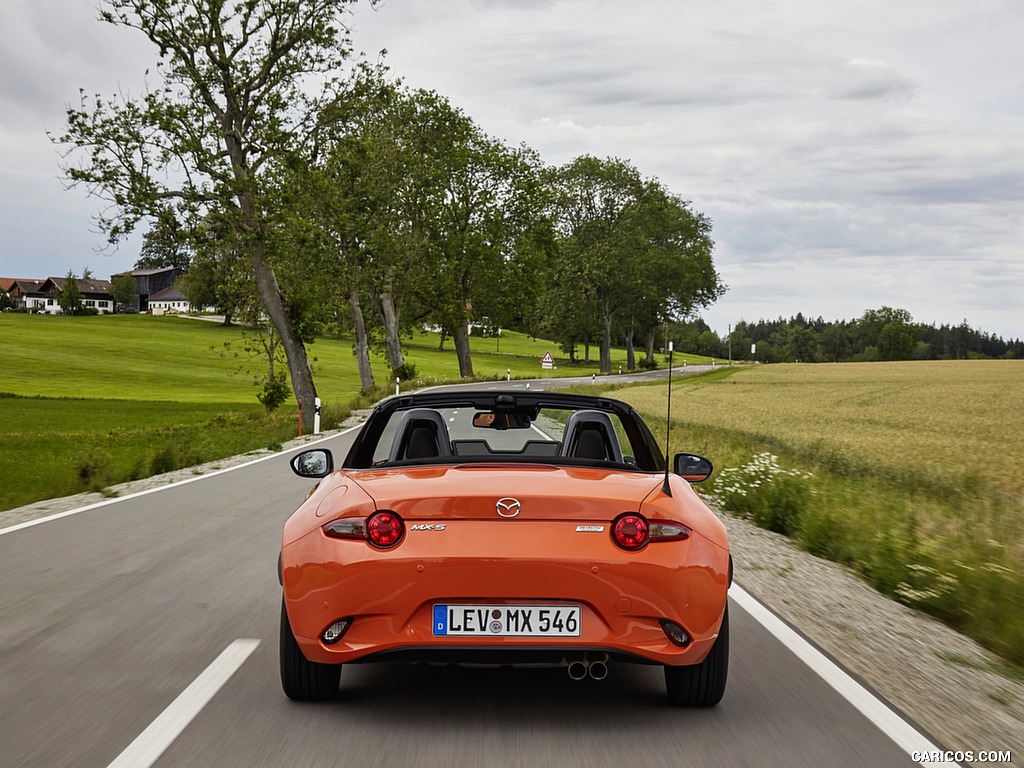 \n
\n
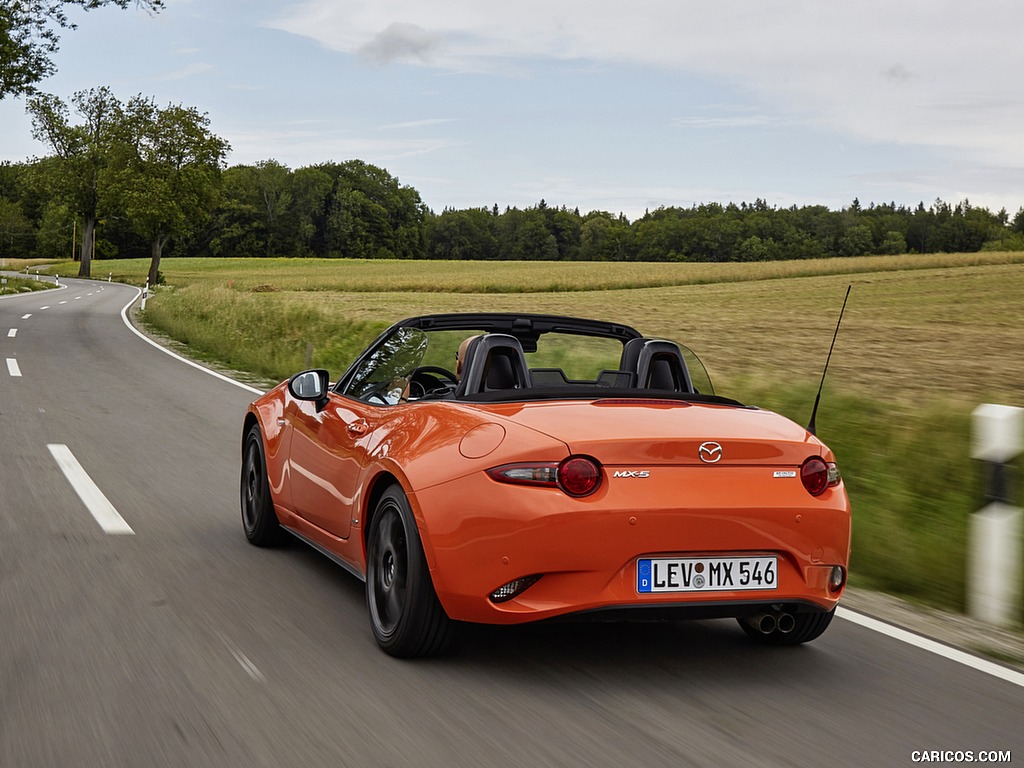 \n
\n
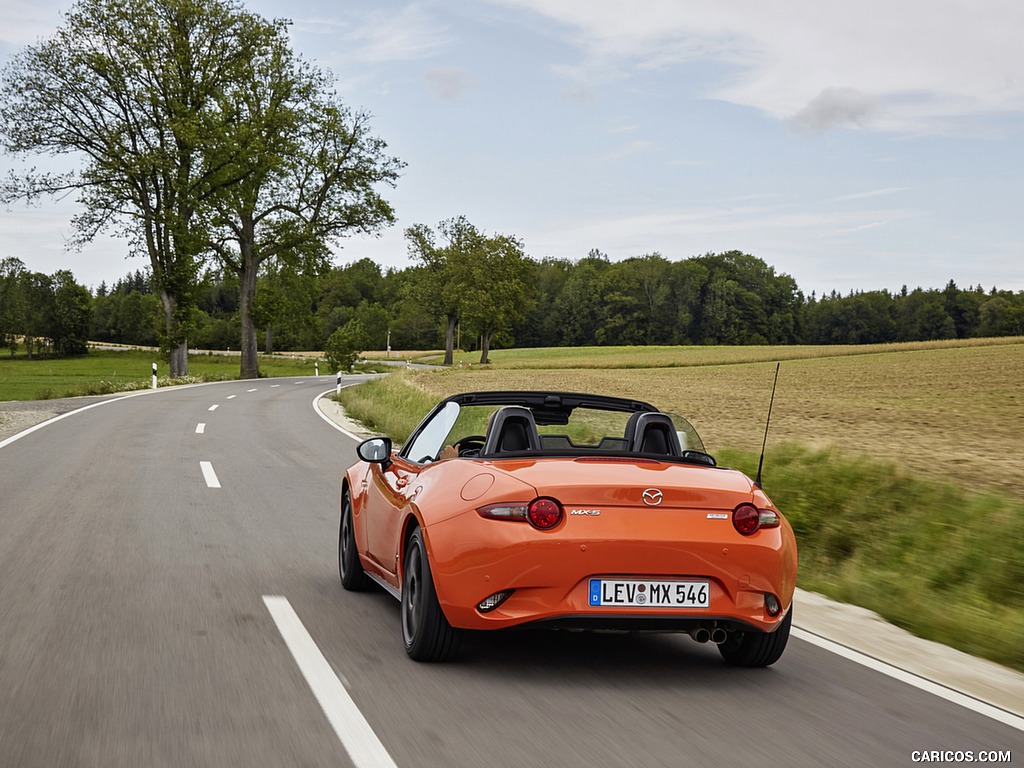 \n
\n
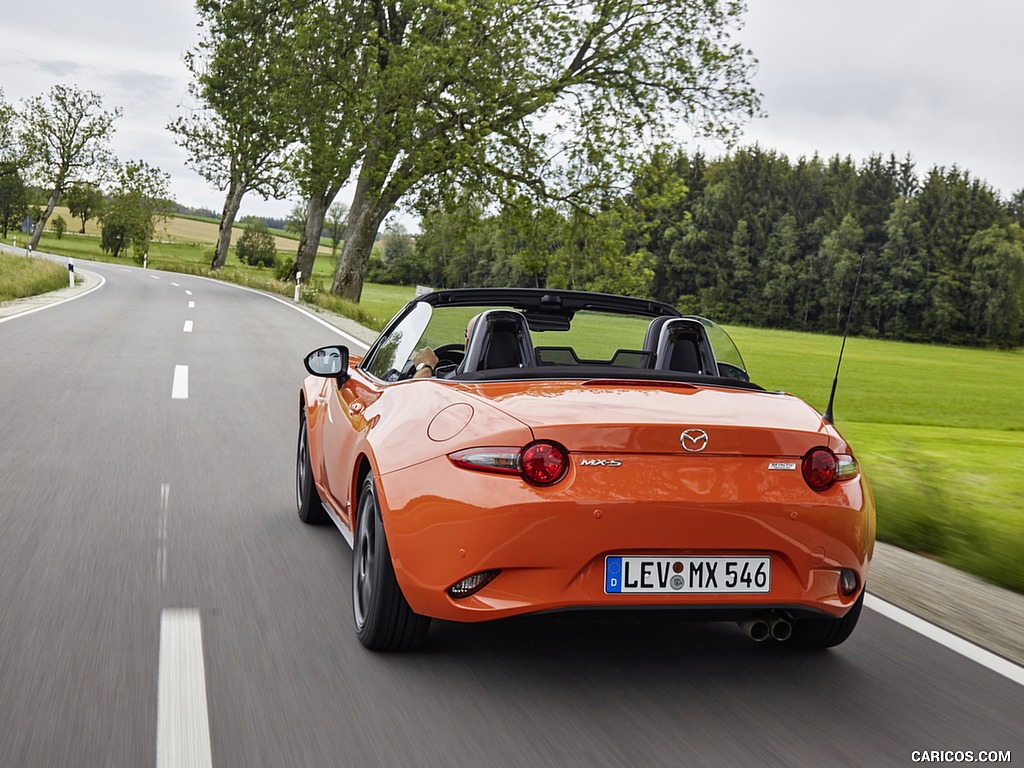 \n
\n
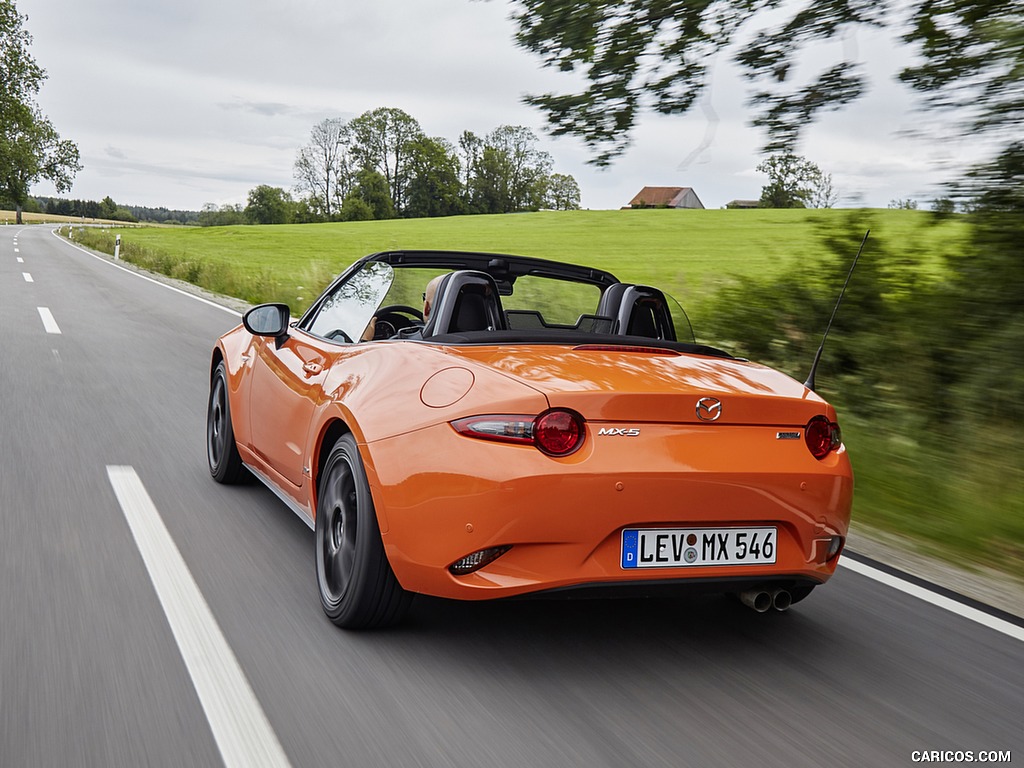 \n
\n
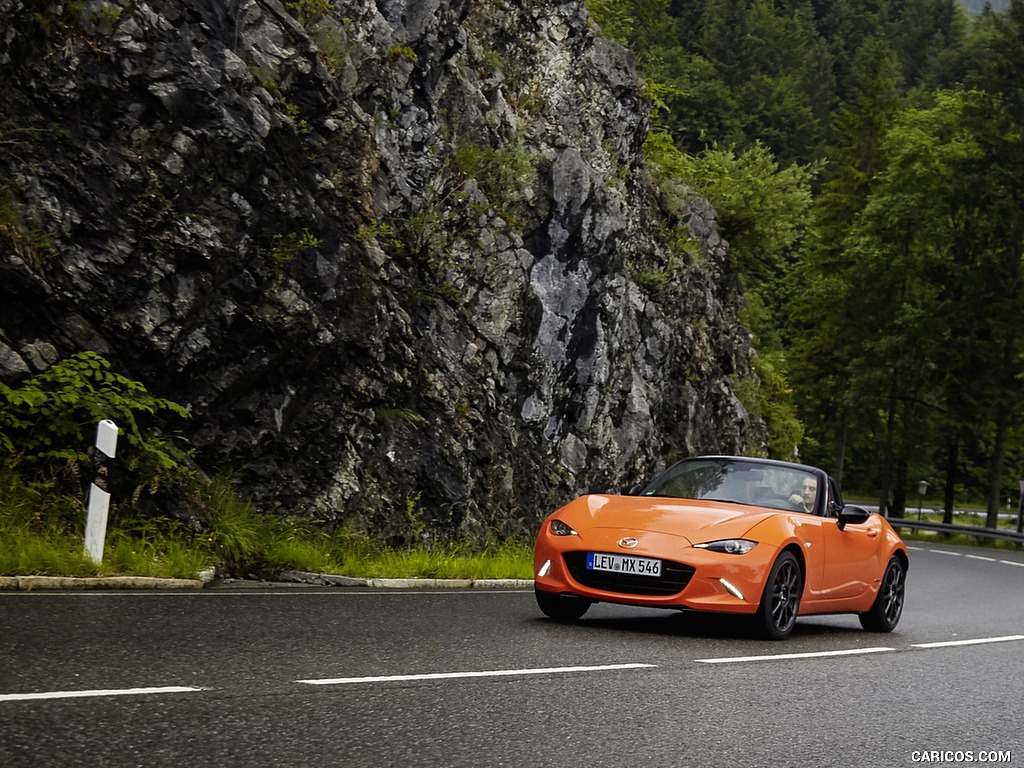 \n
\n
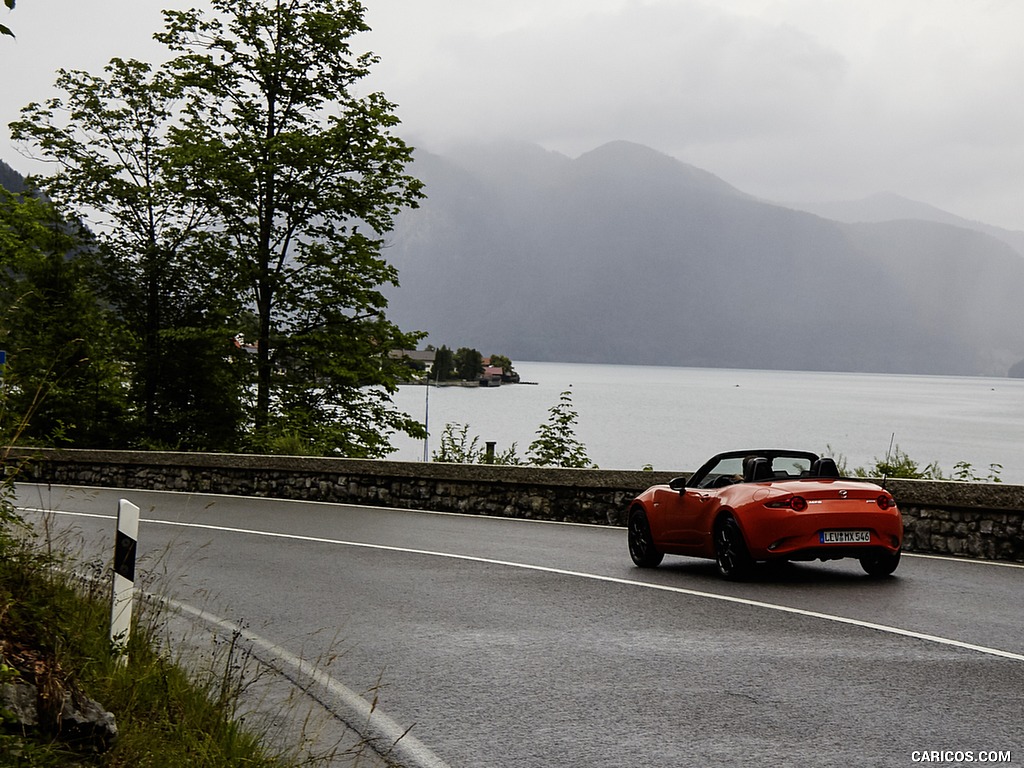 \n
\n
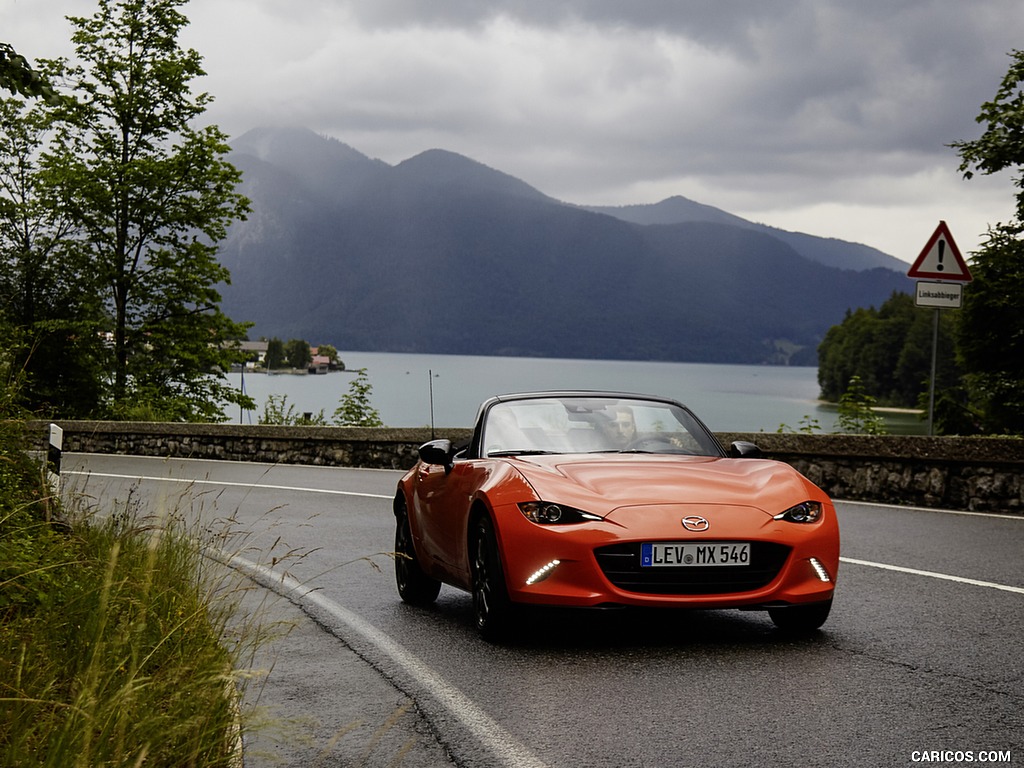 \n
\n
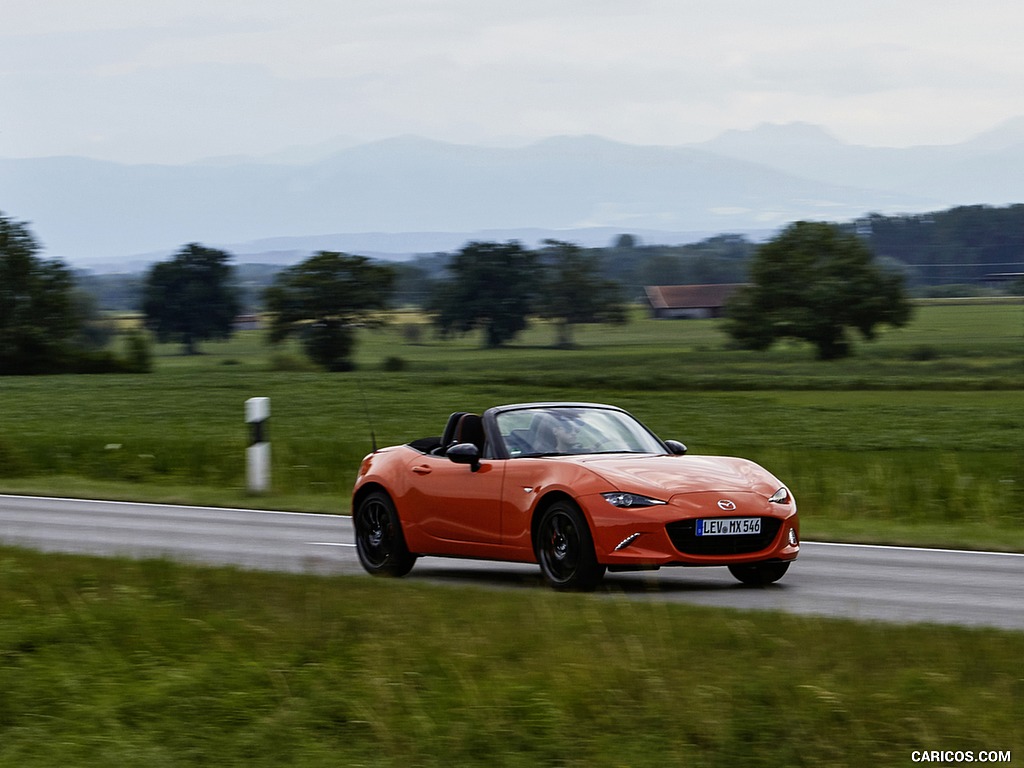 \n
\n
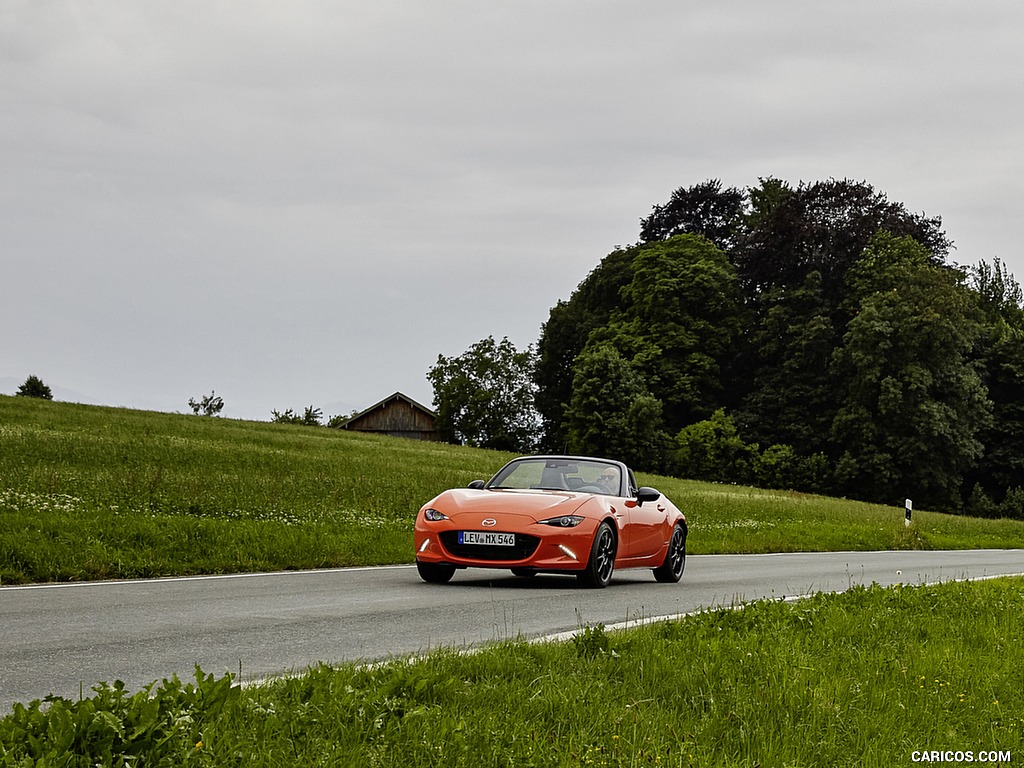 \n
\n
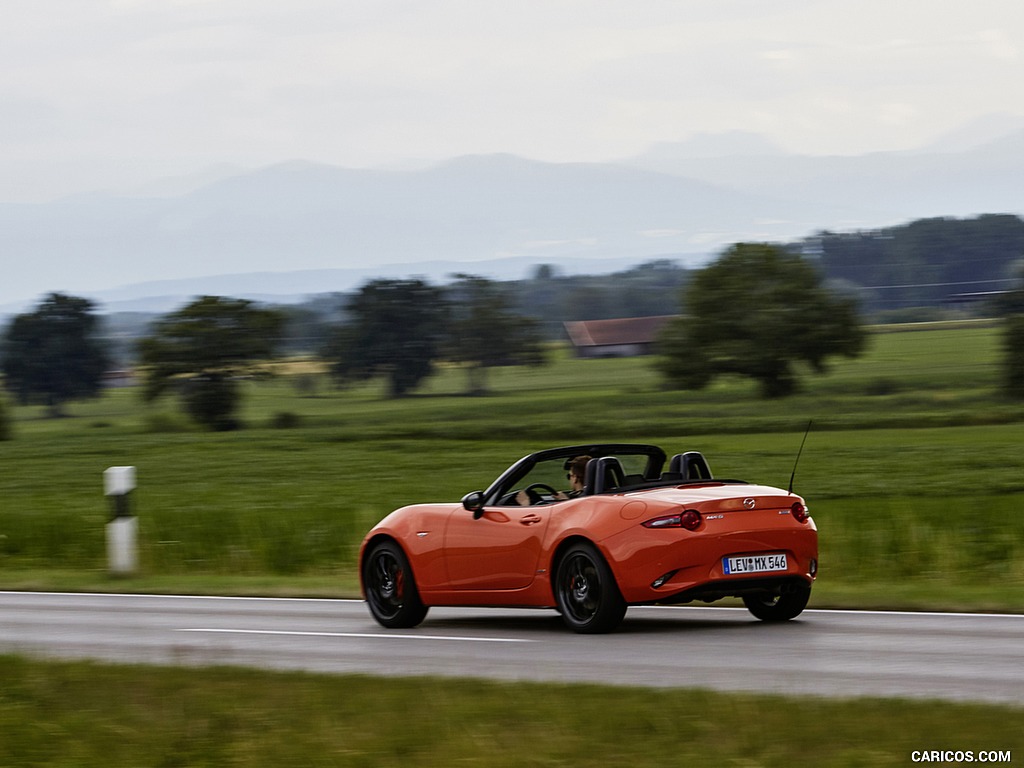 \n
\n
 \n
\n
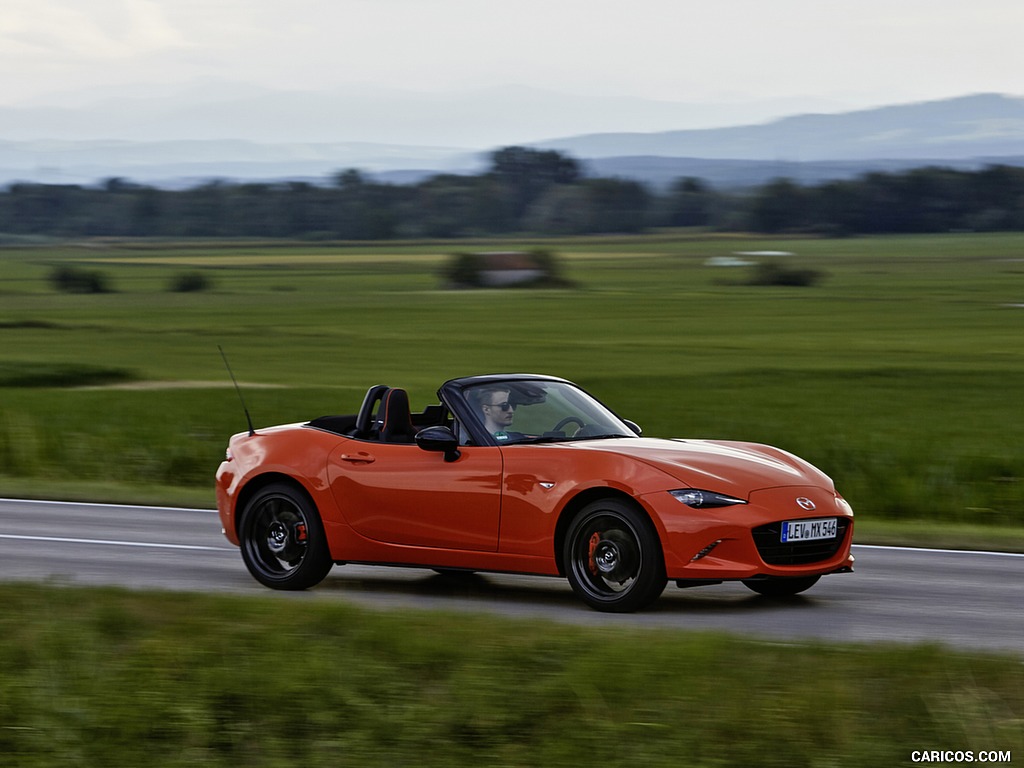 \n
\n
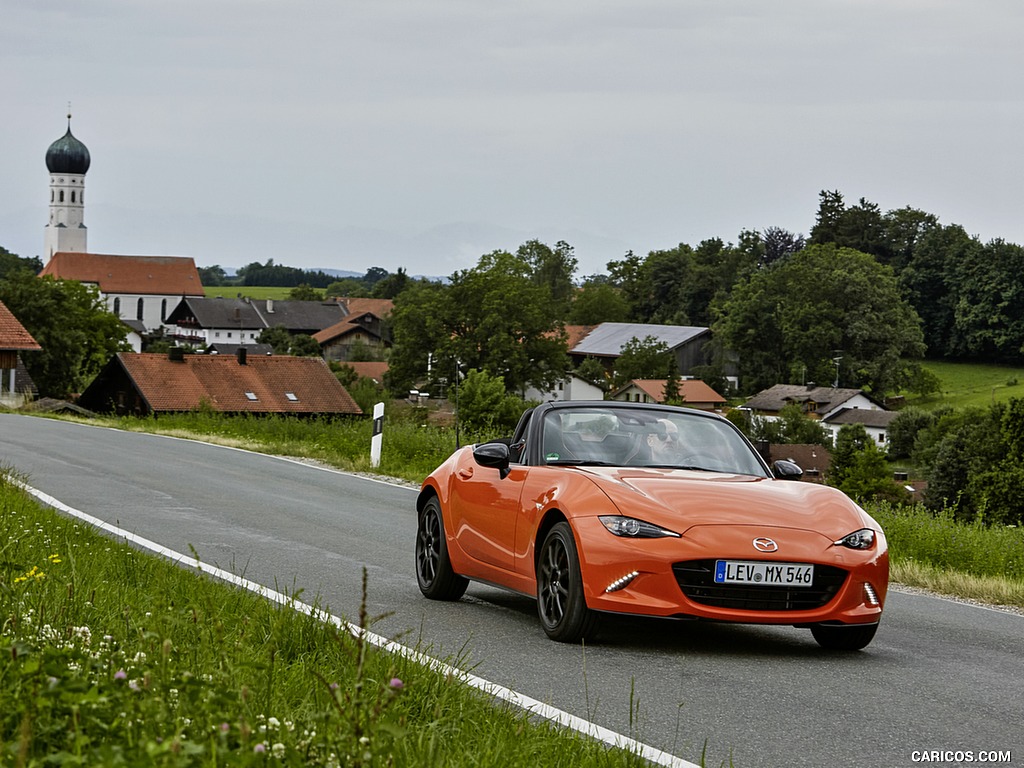 \n
\n
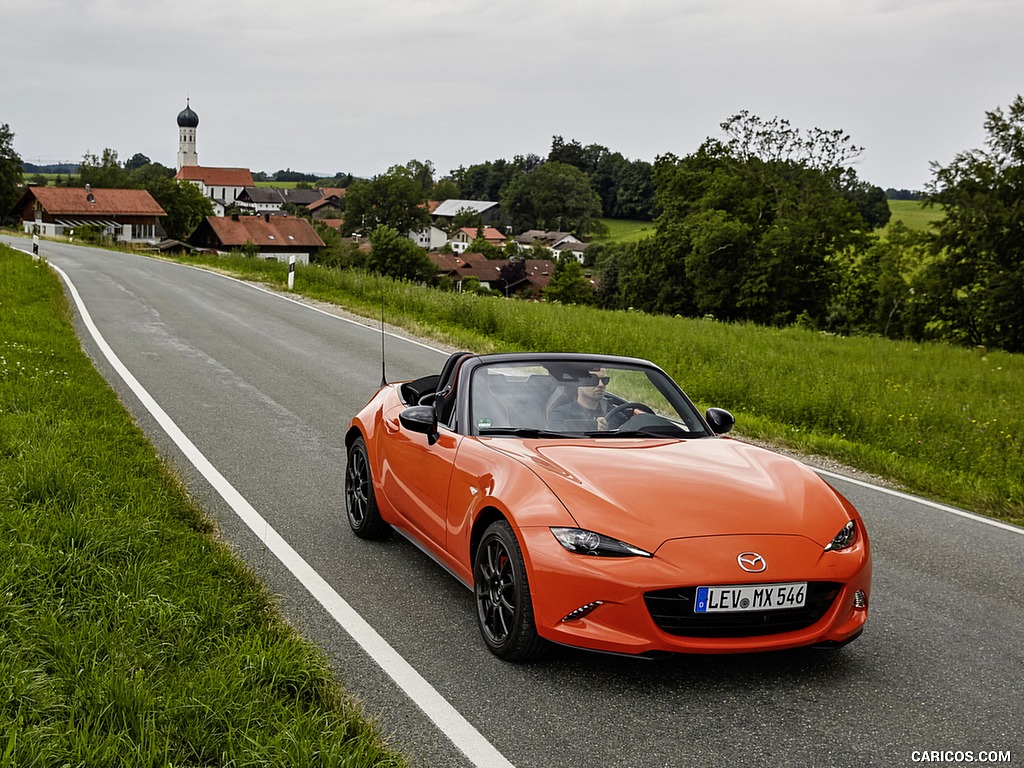 \n
\n
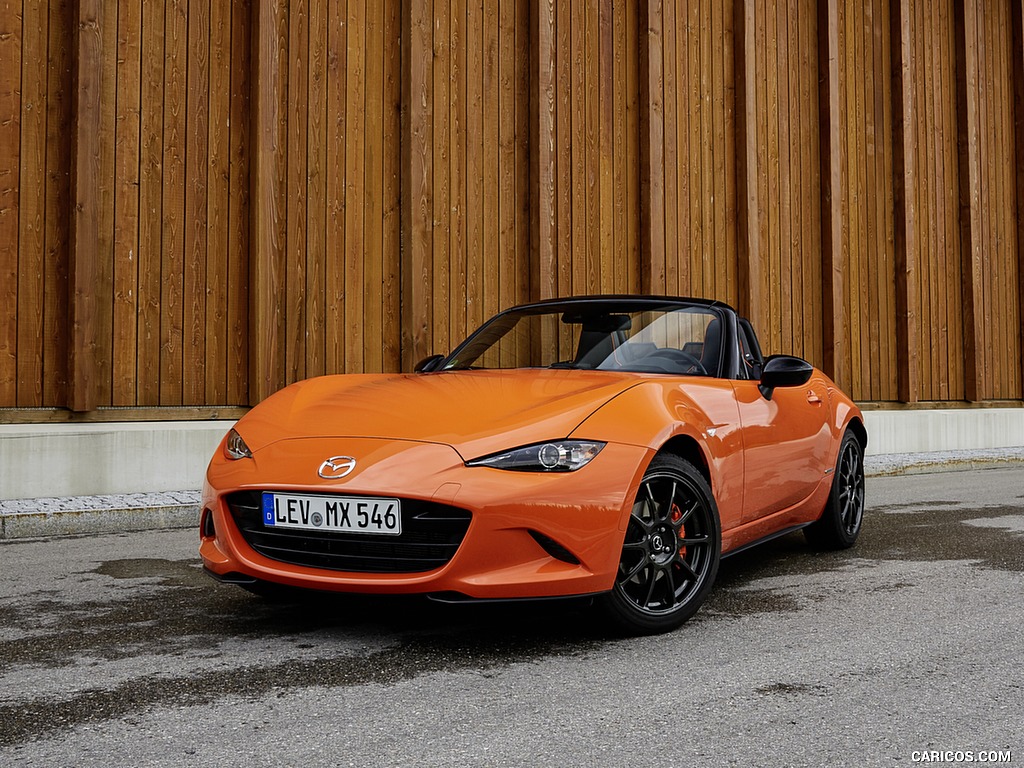 \n
\n
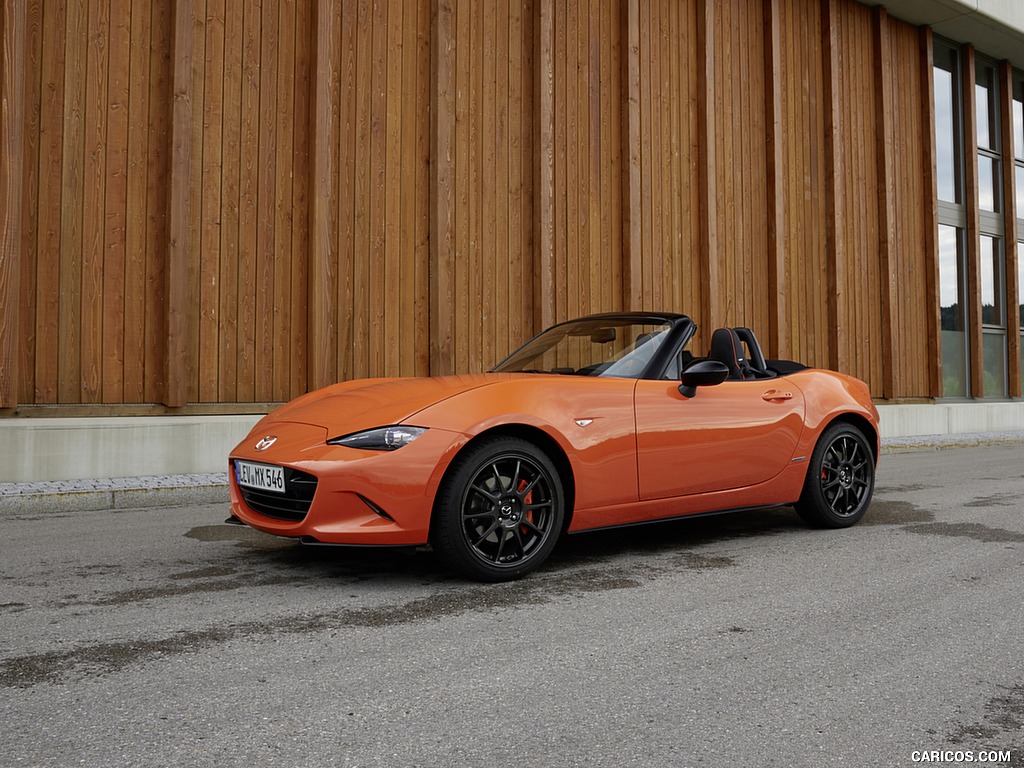 \n
\n
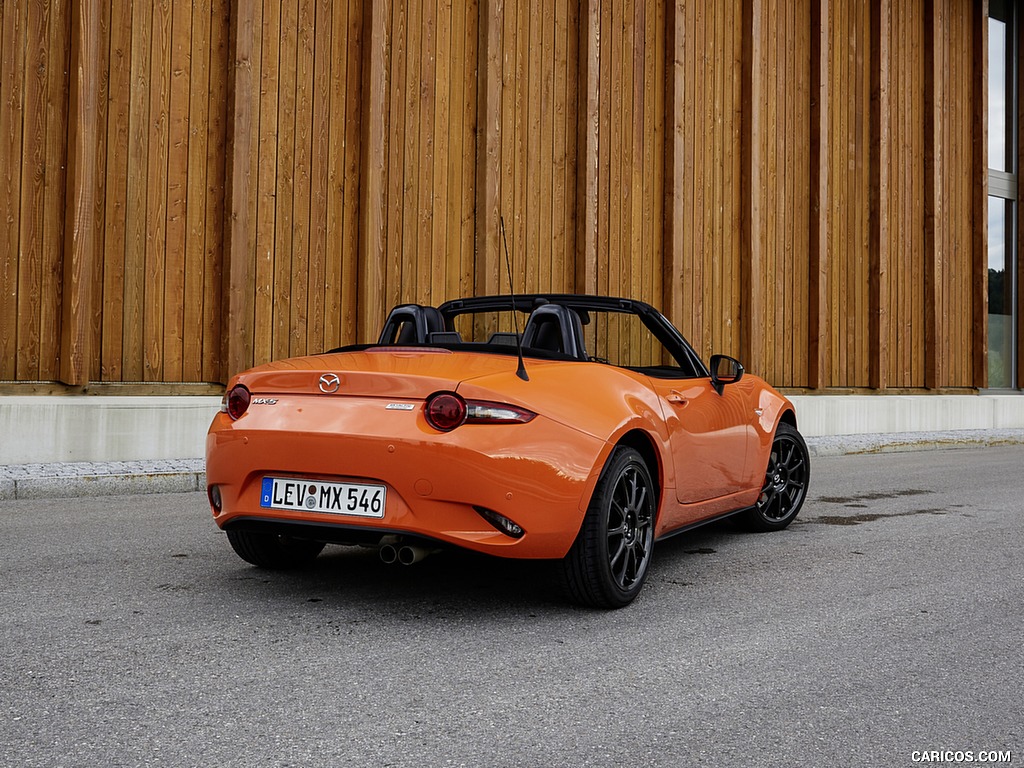 \n
\n
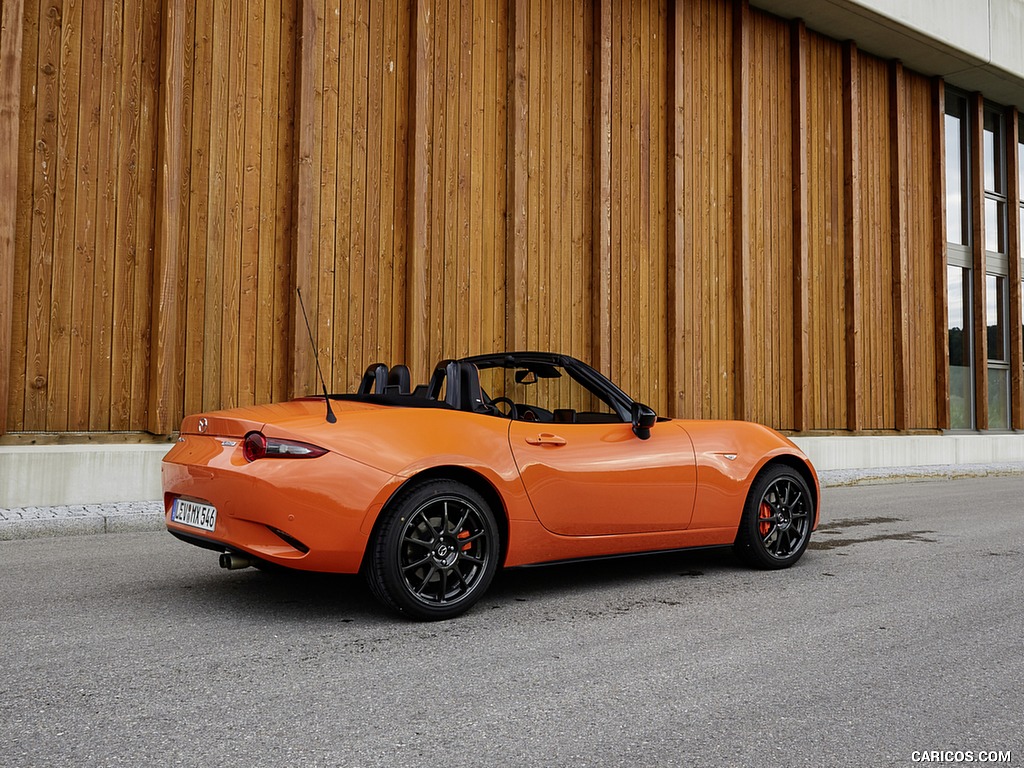 \n
\n
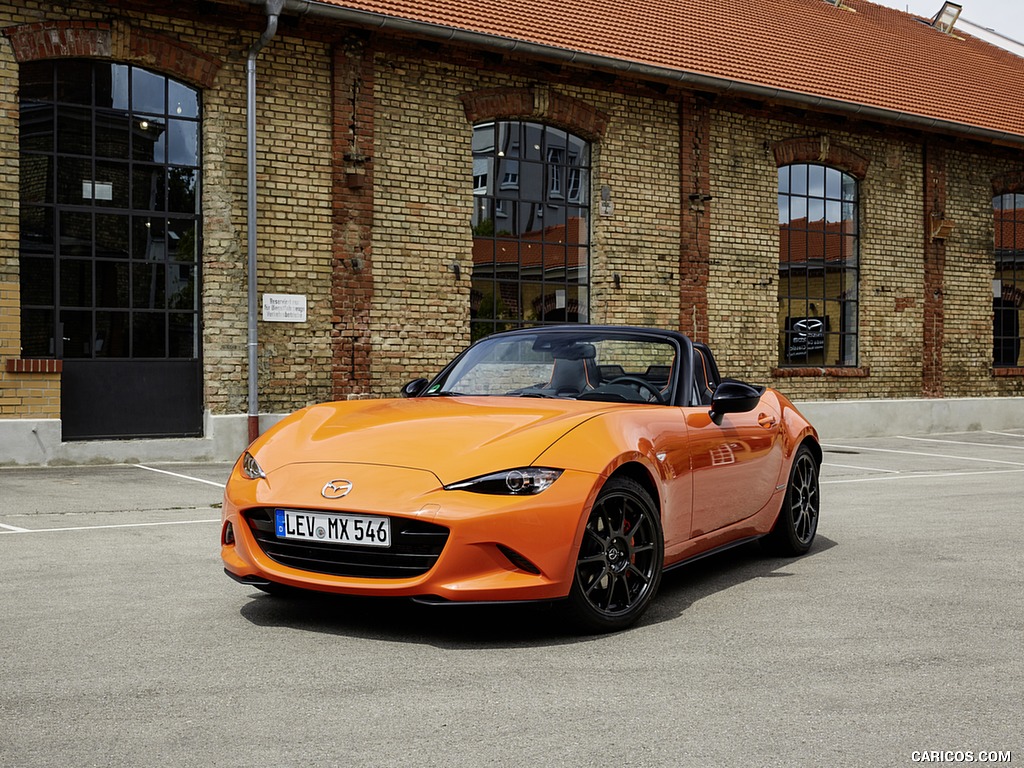 \n
\n
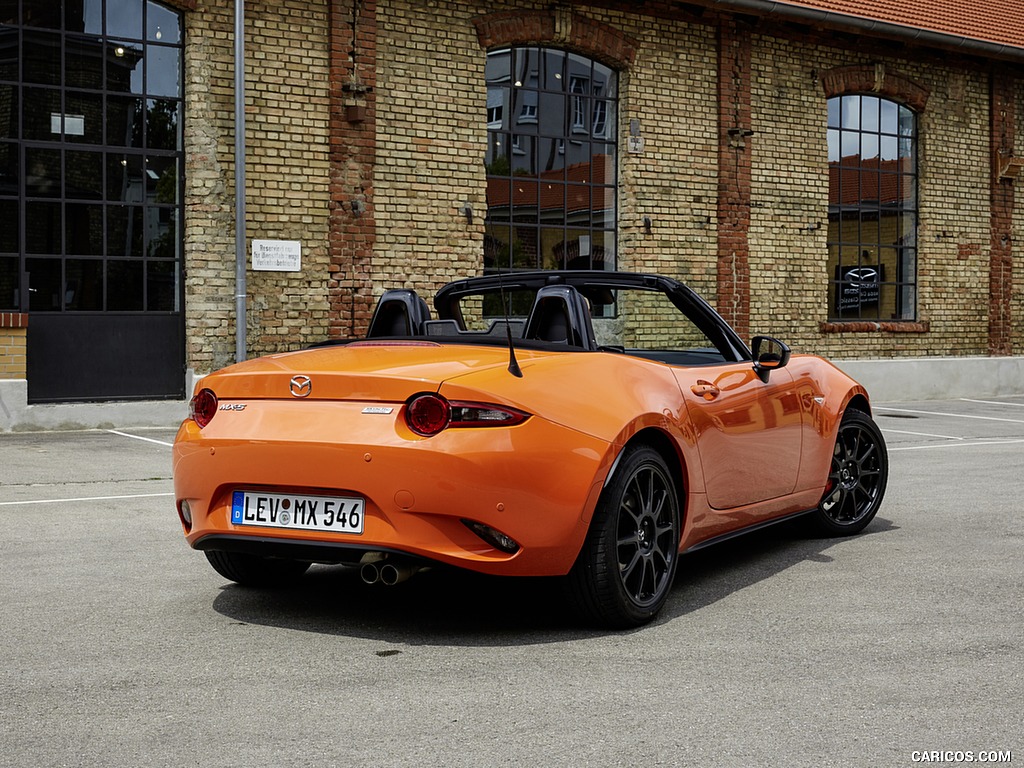 \n
\n
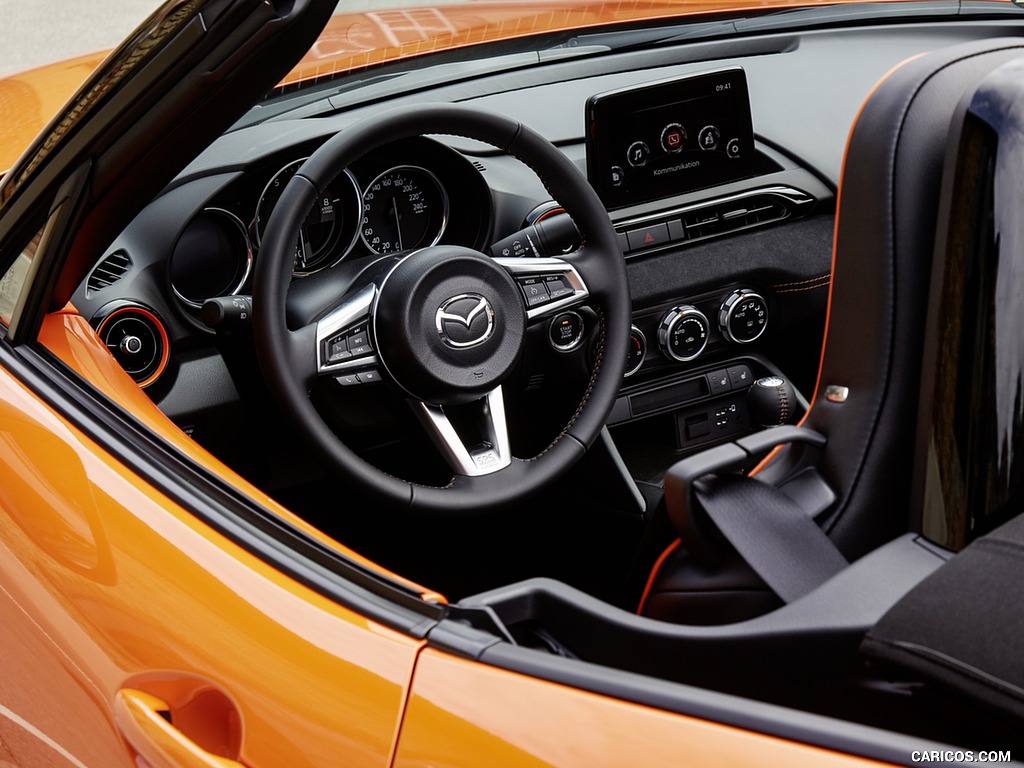 \n
\n
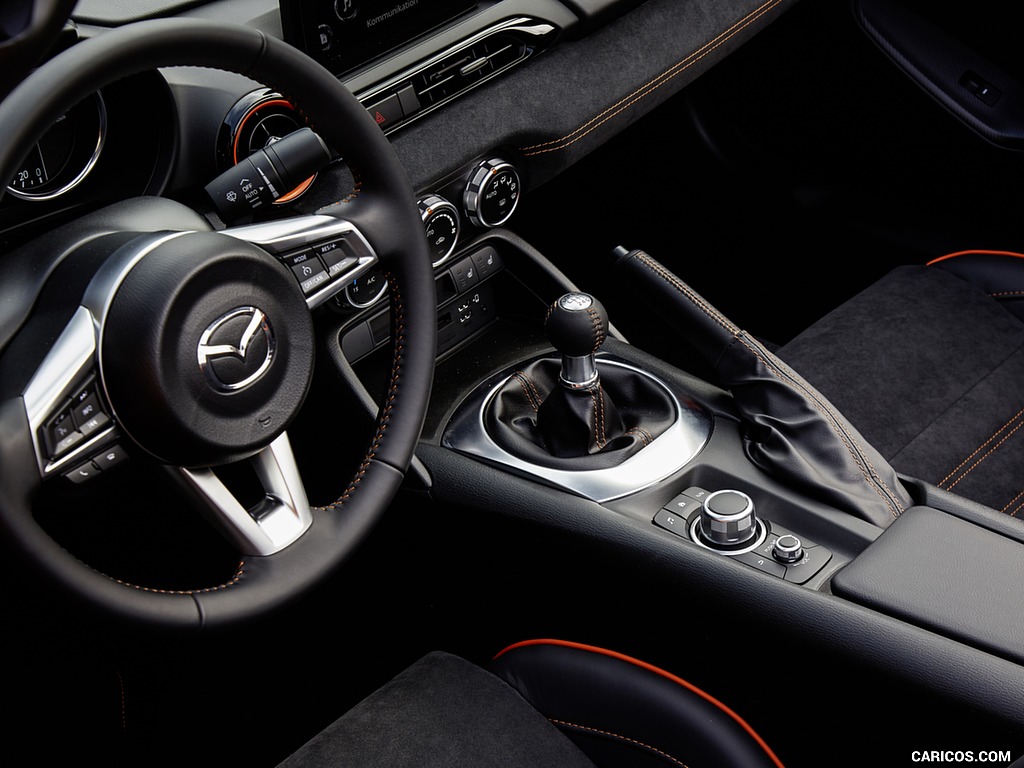 \n
\n
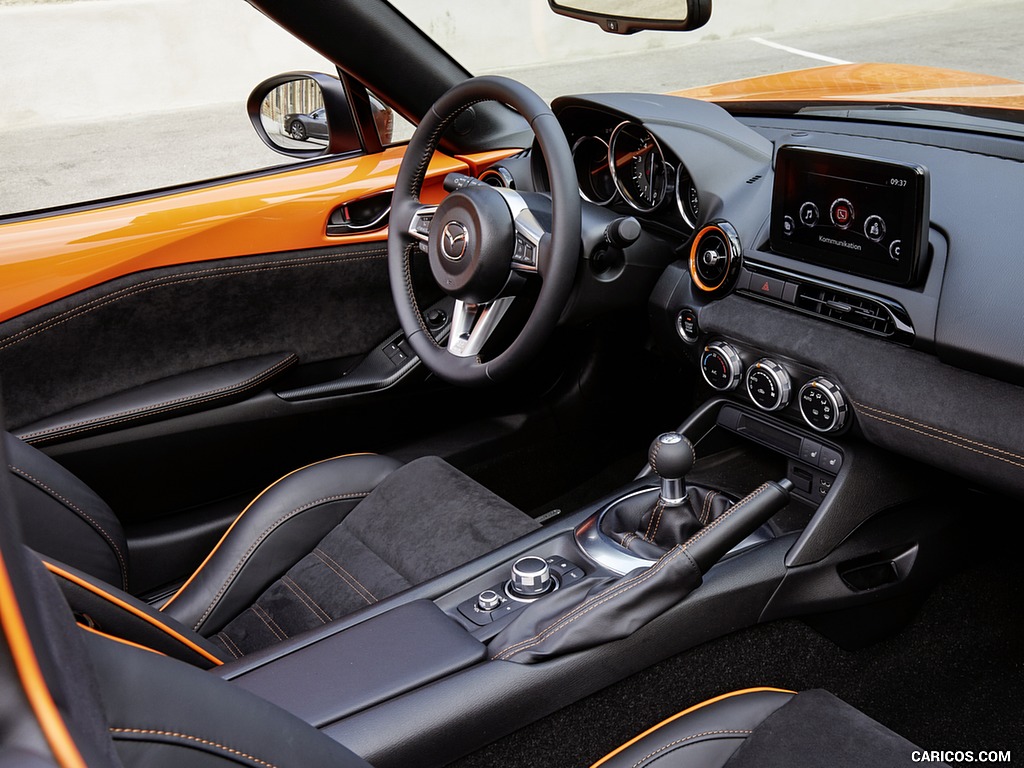 \n
\n
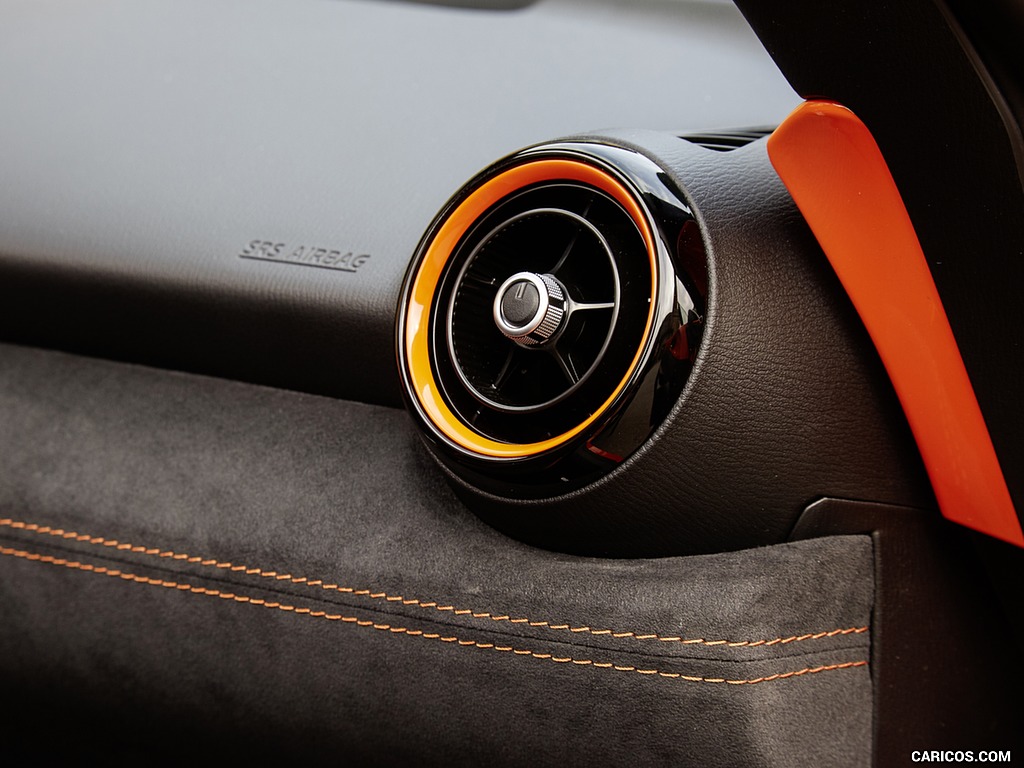 \n
\n
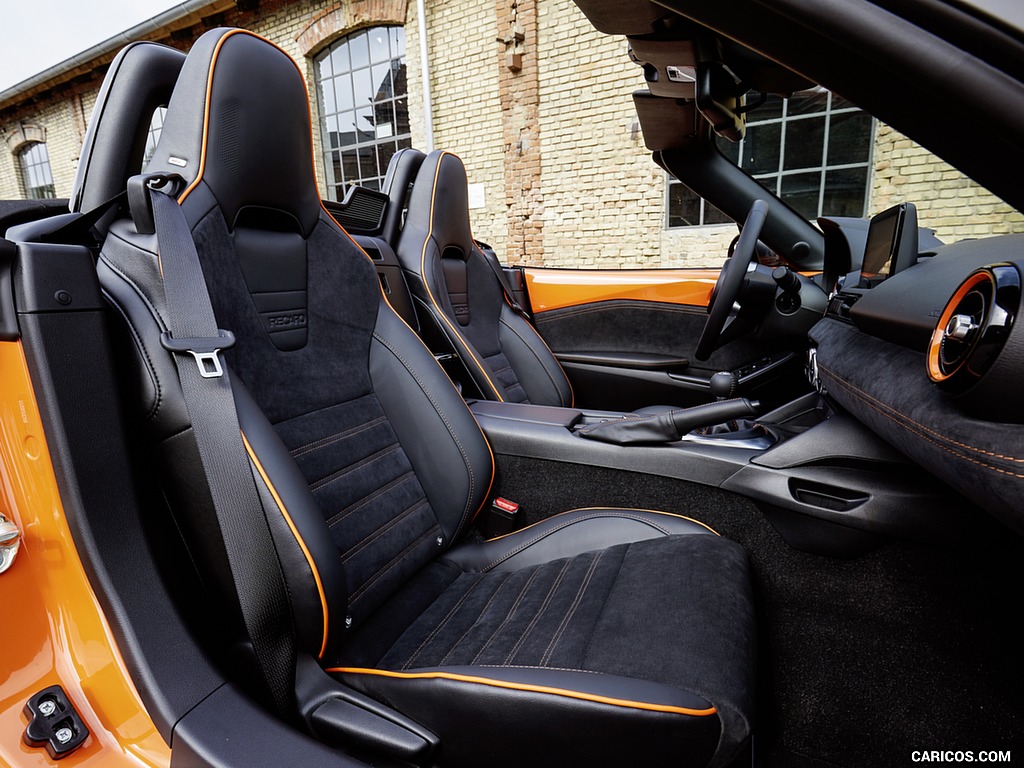 \n
\n
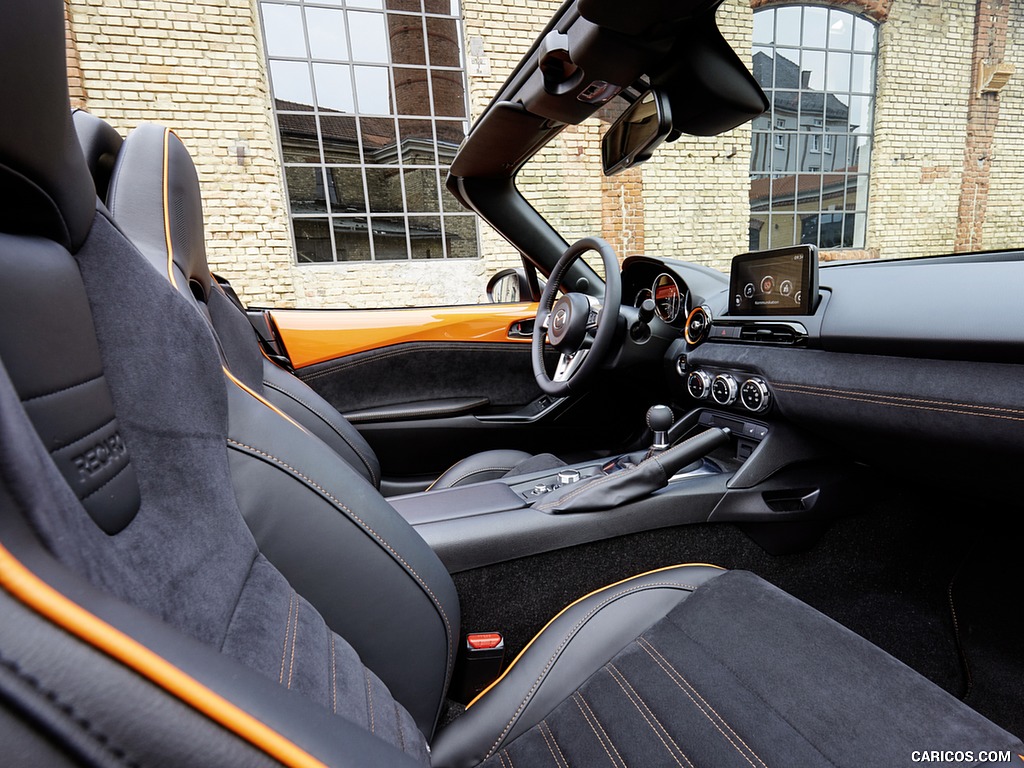 \n
\n
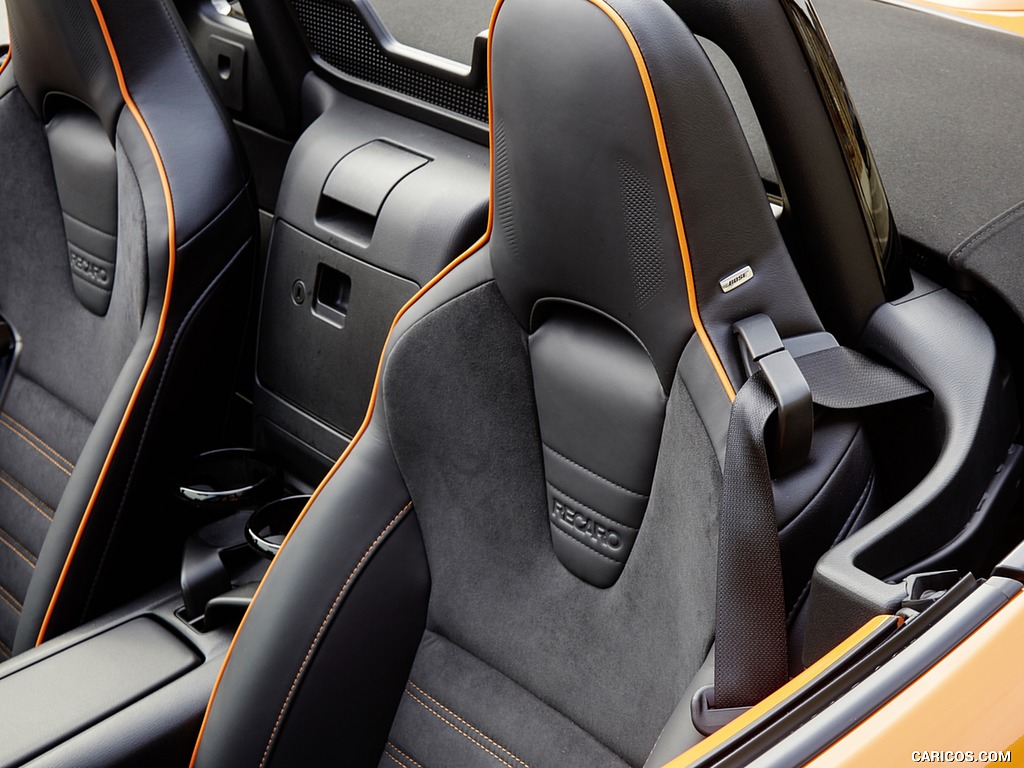 \n
\n
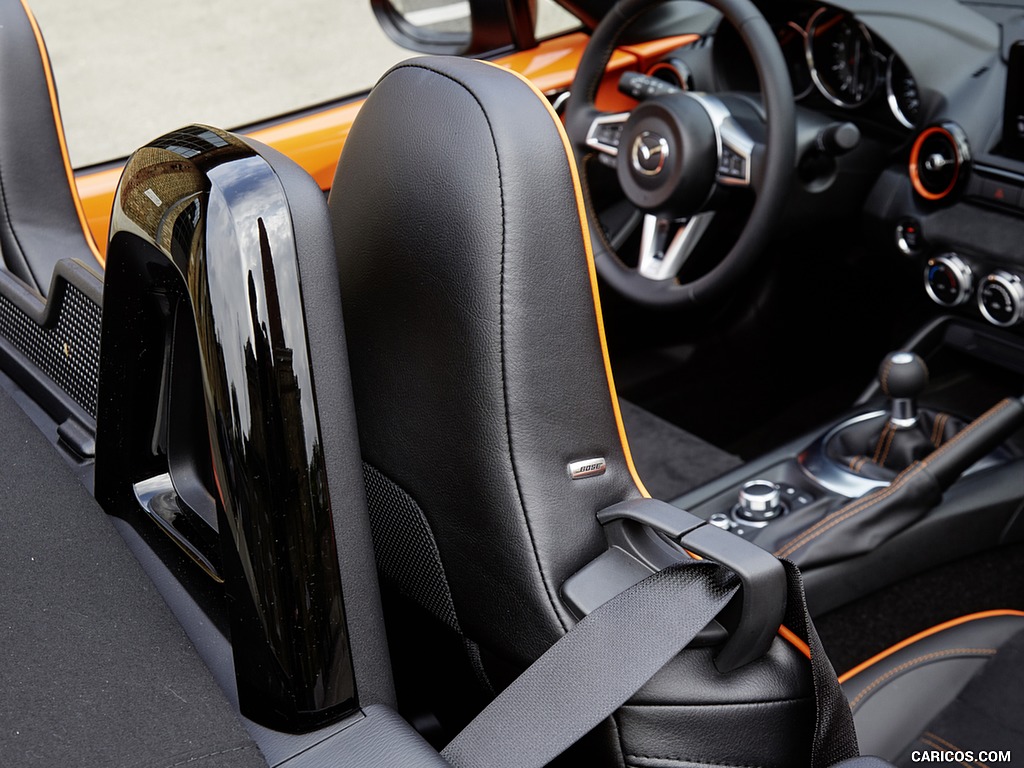 \n
\n
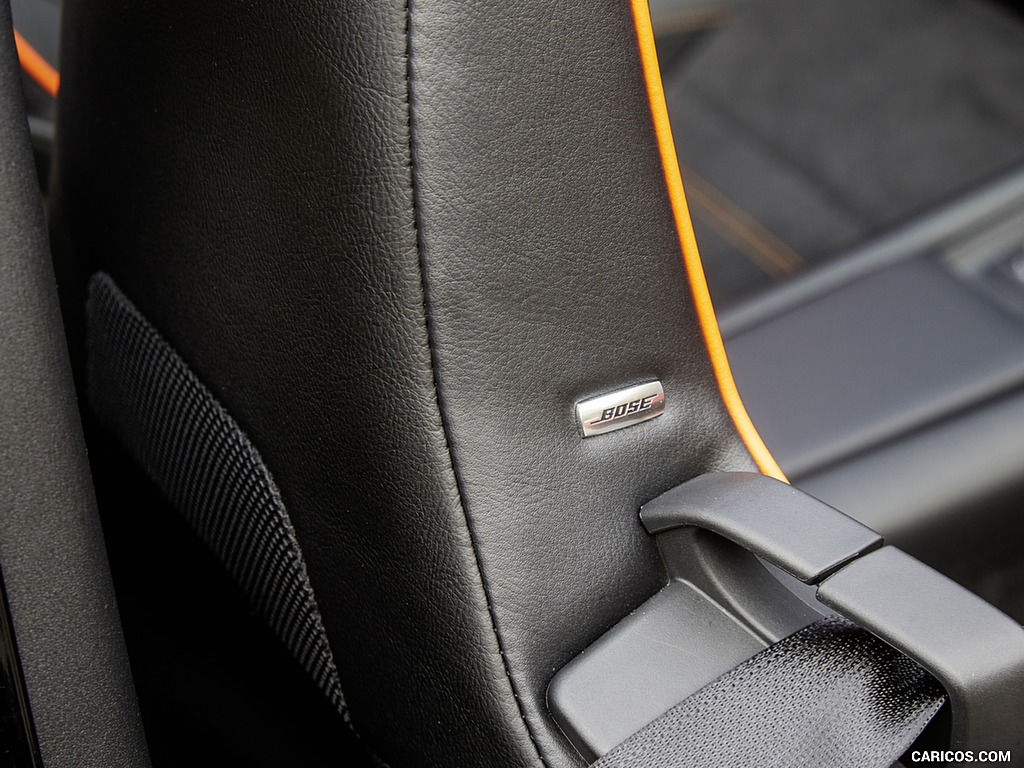 \n
\n
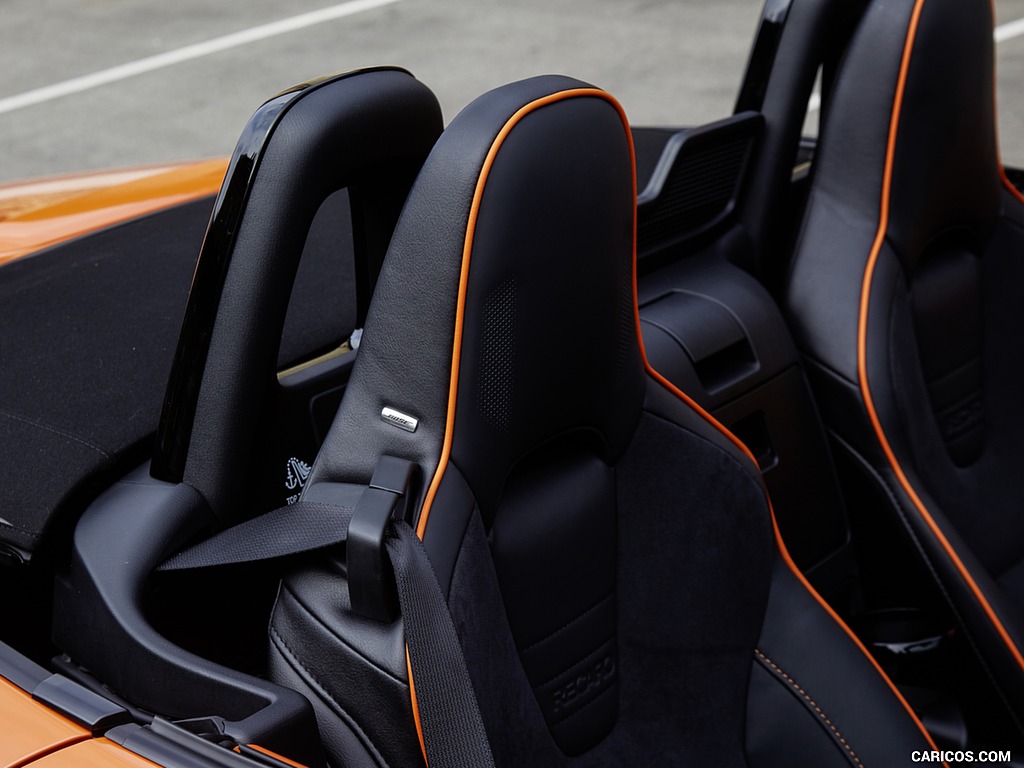 \n
\n